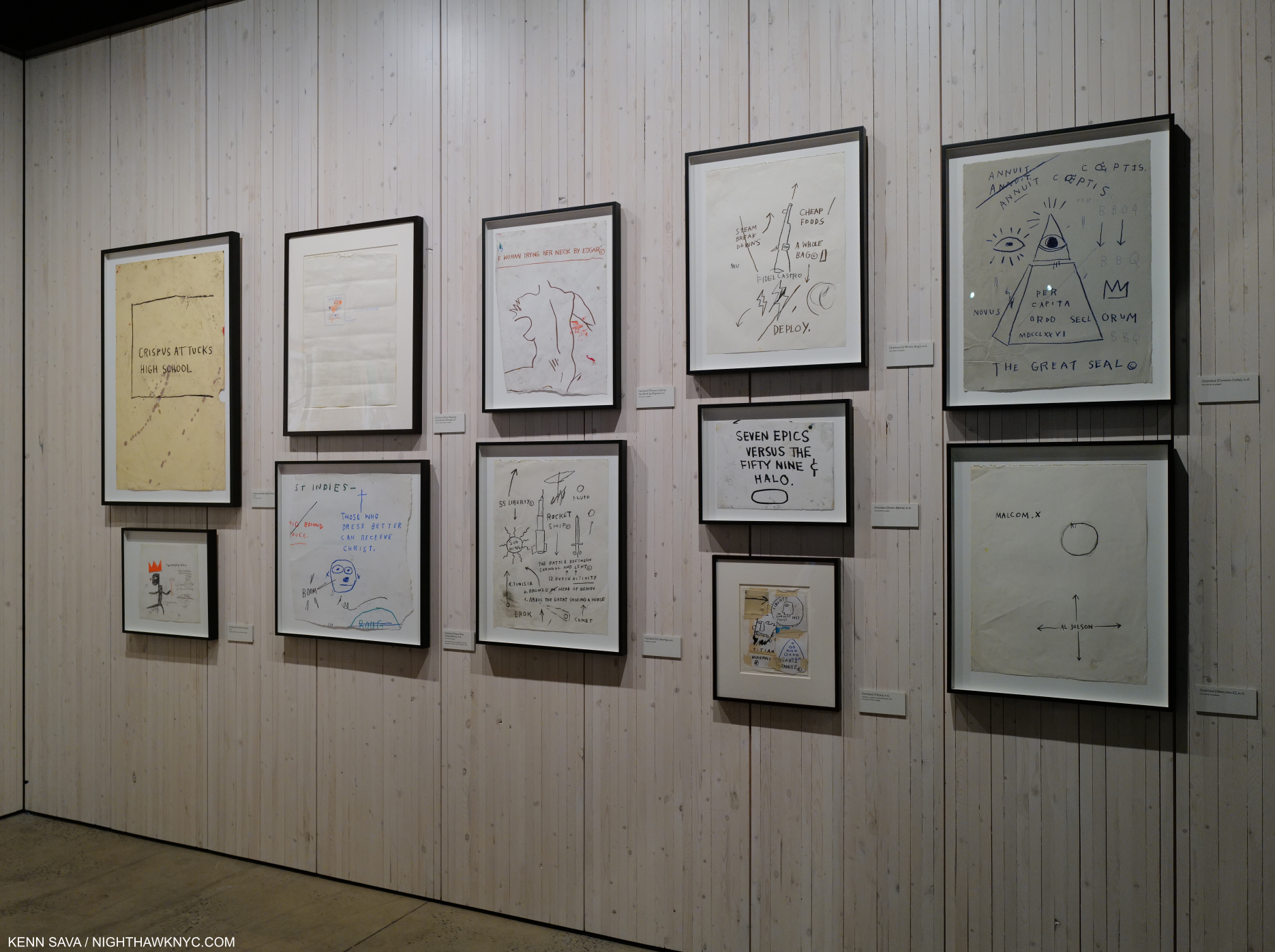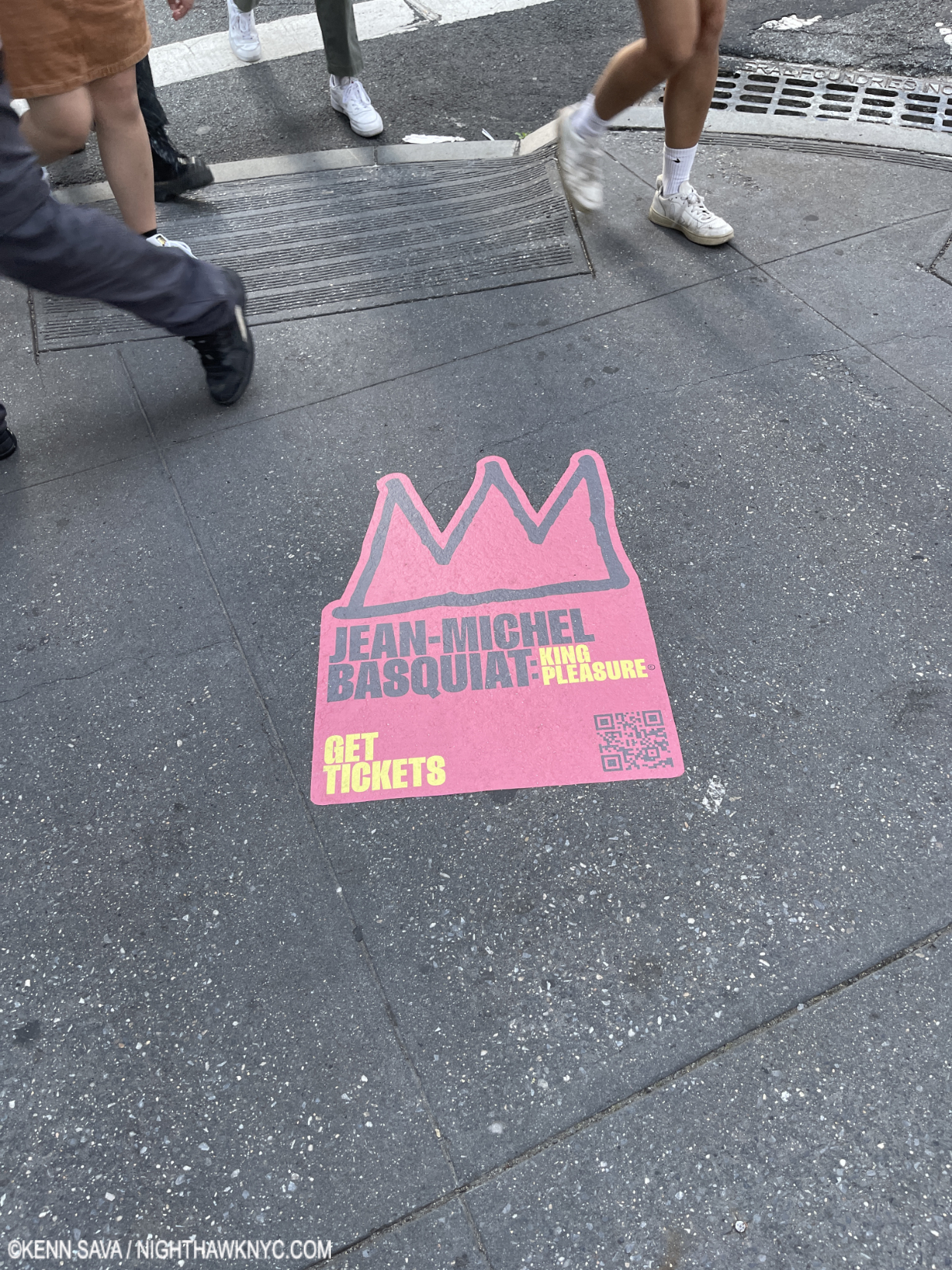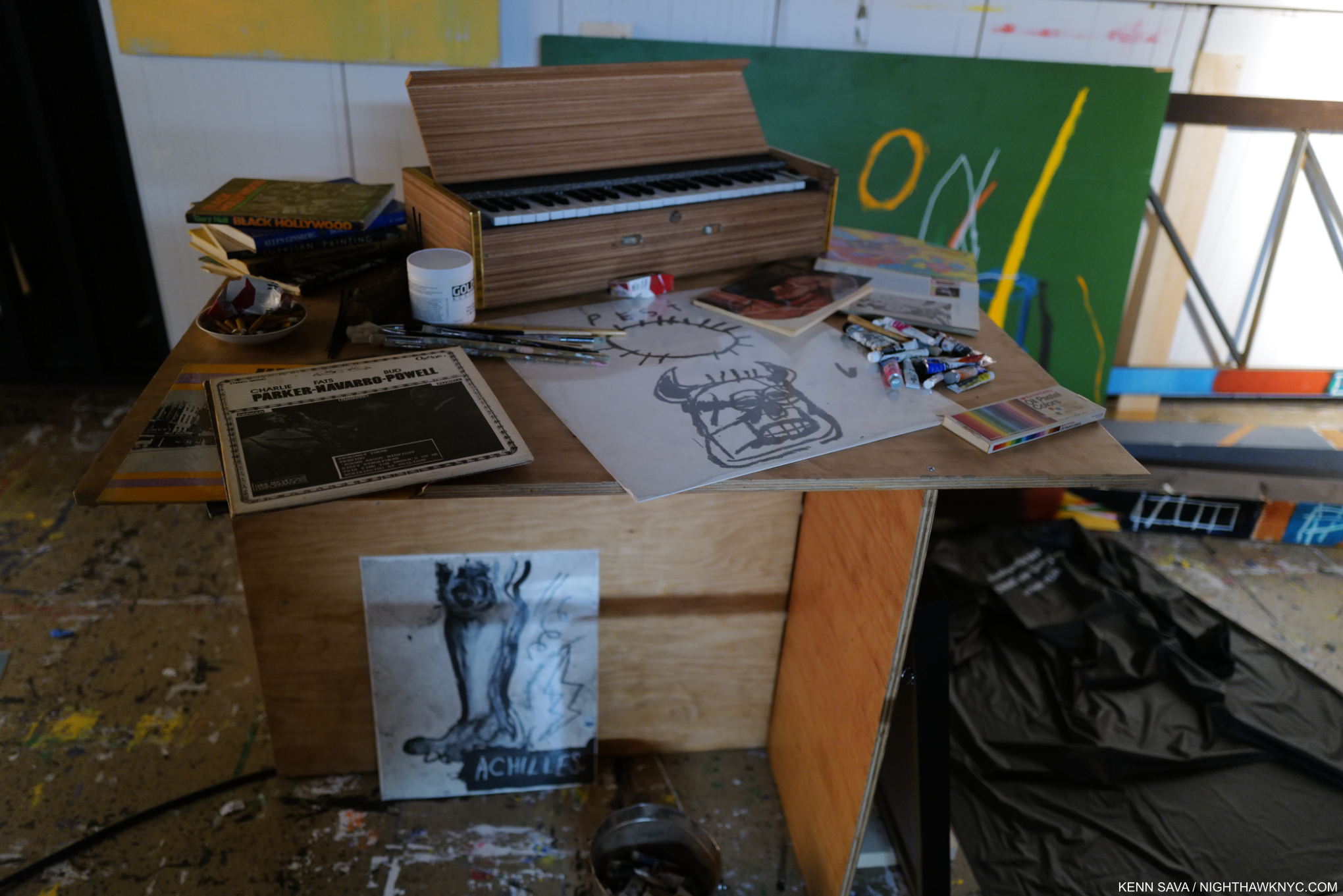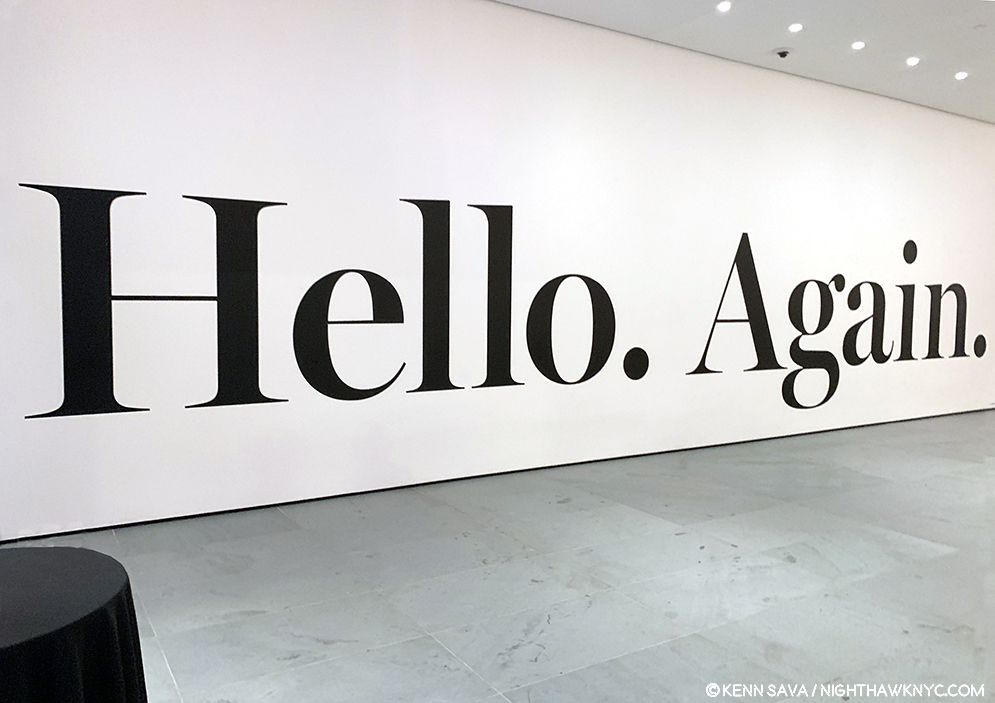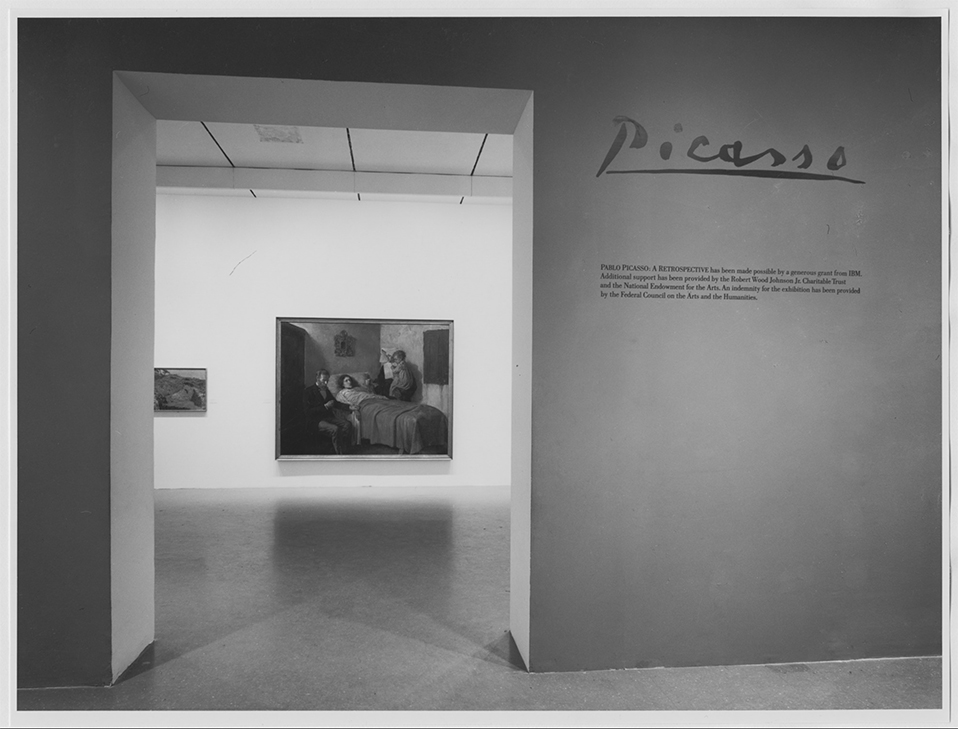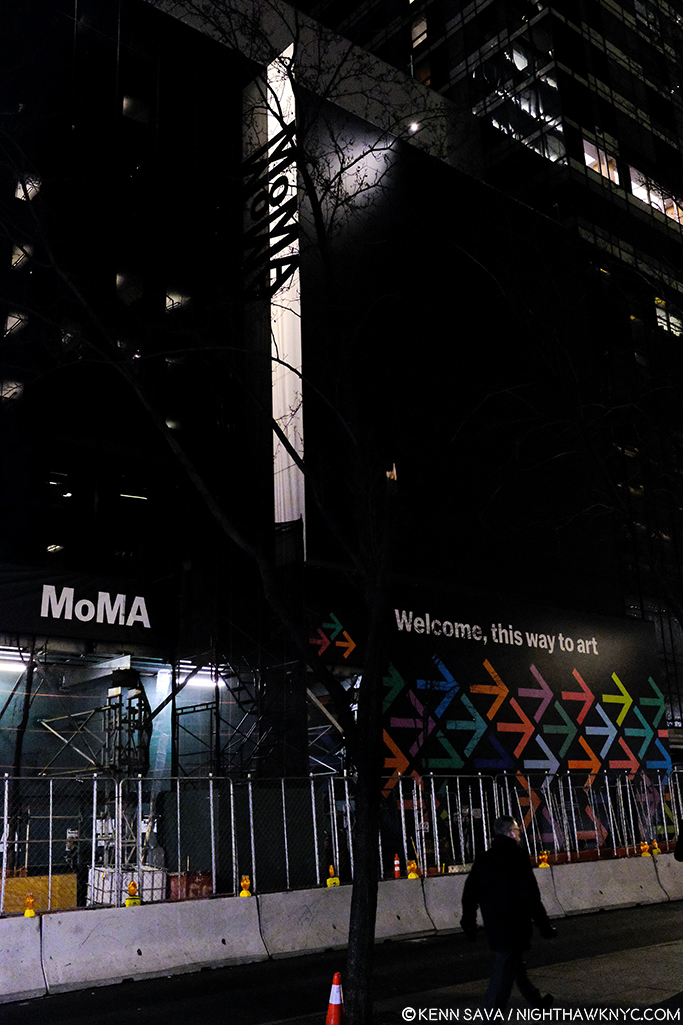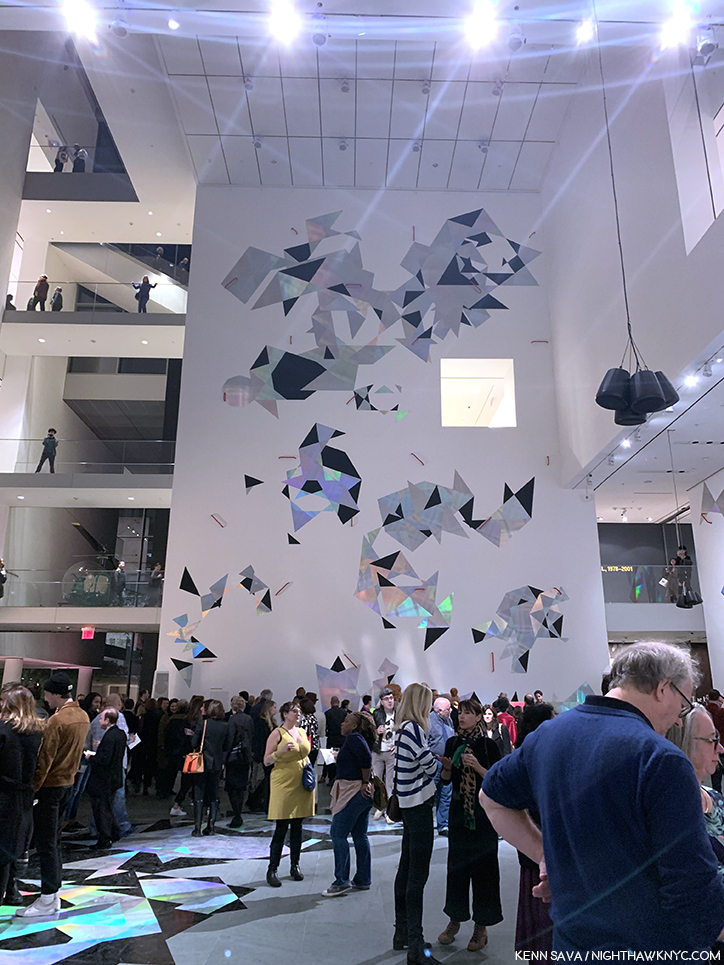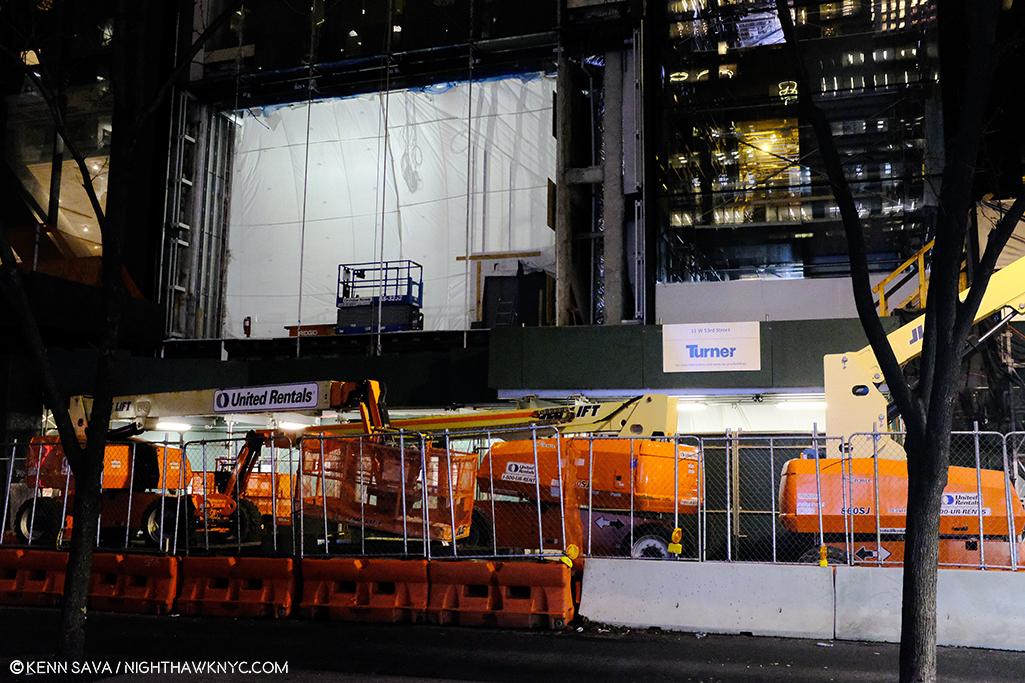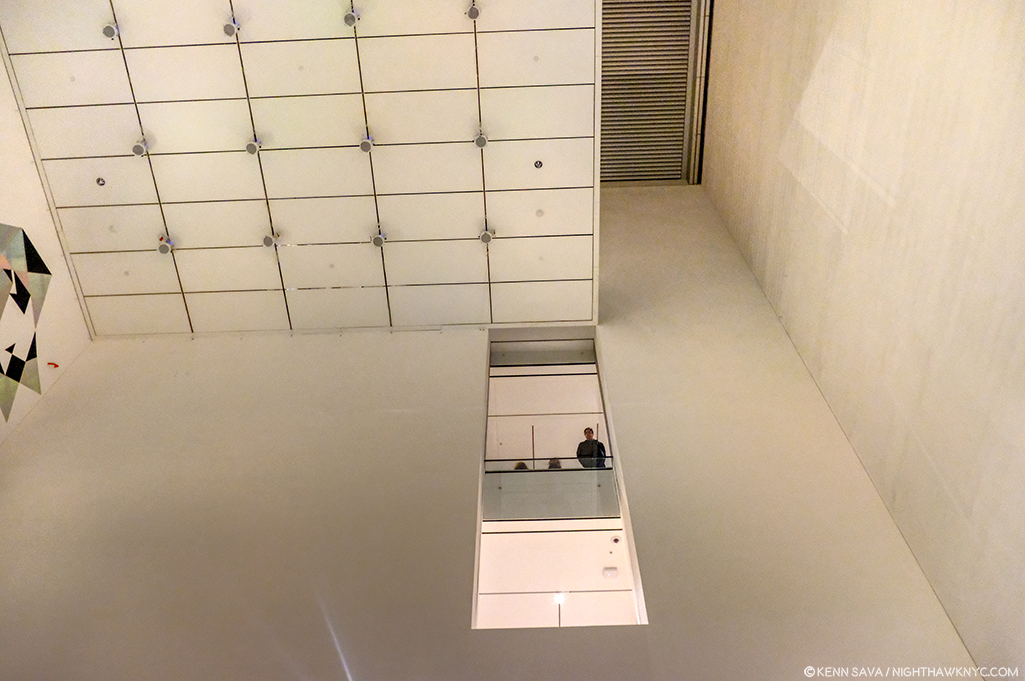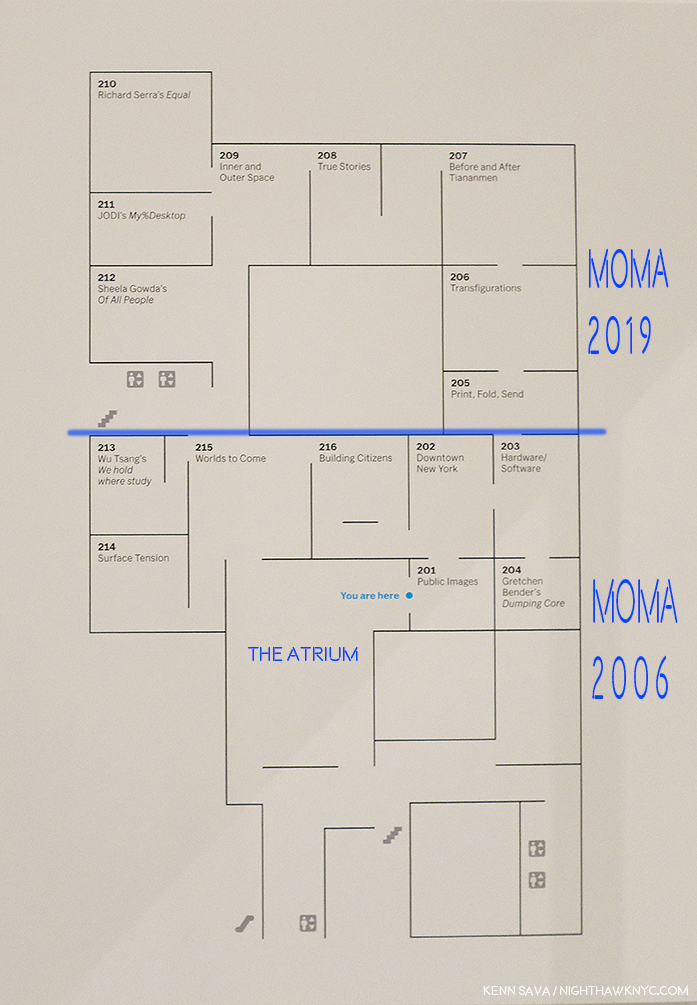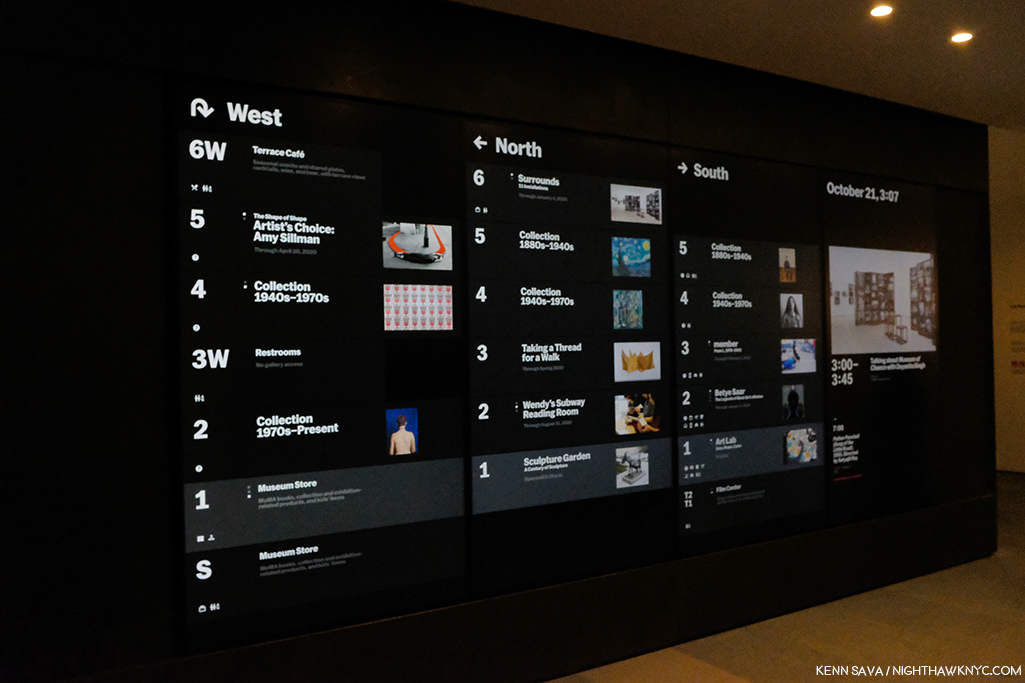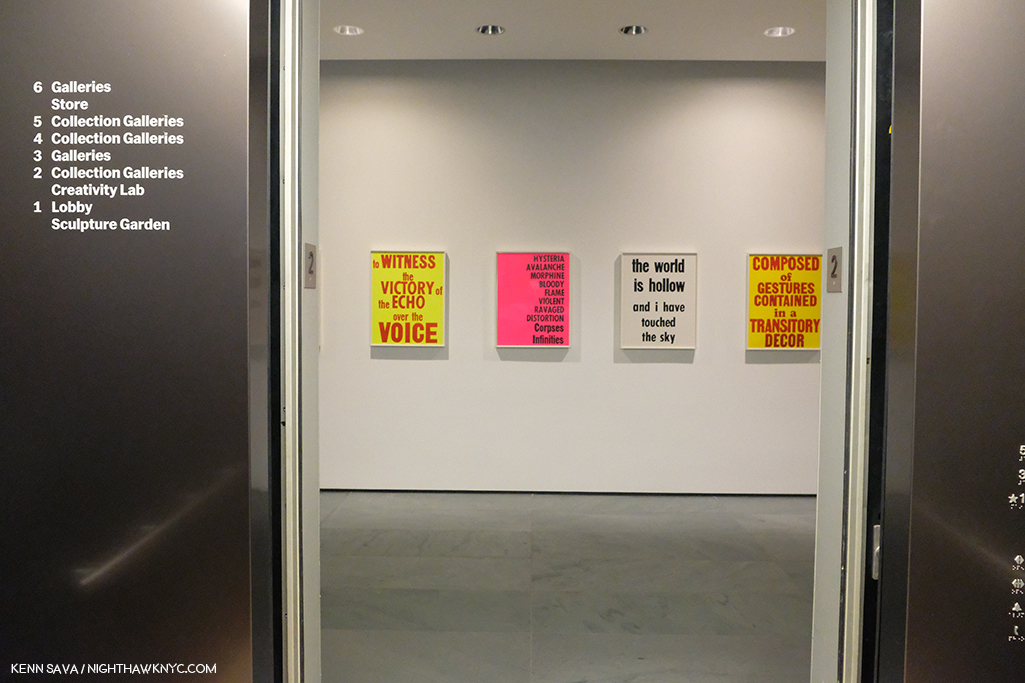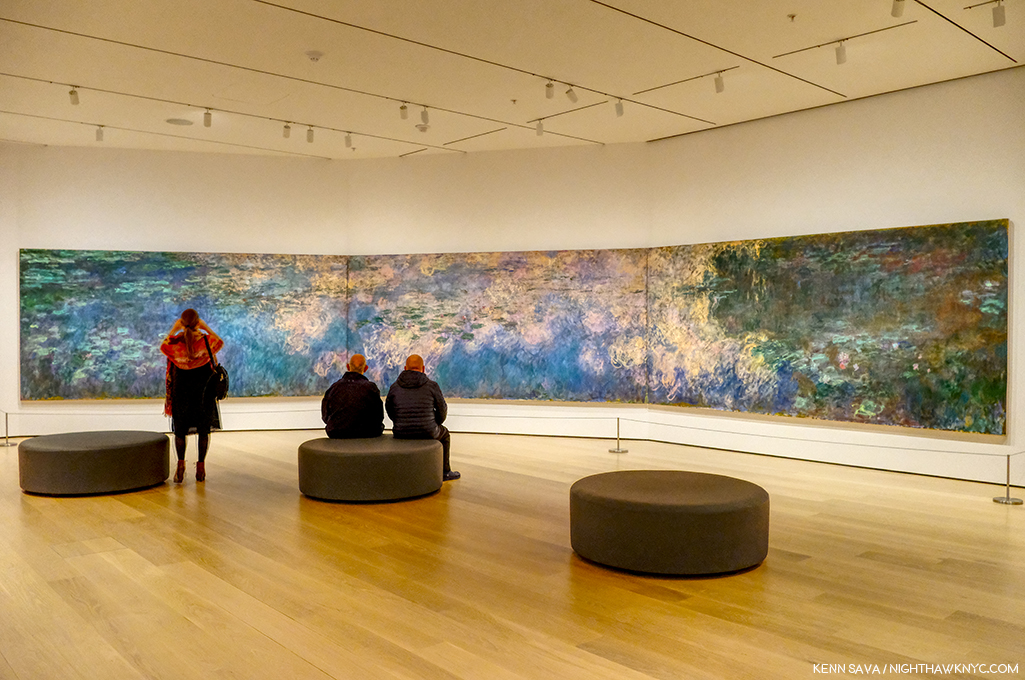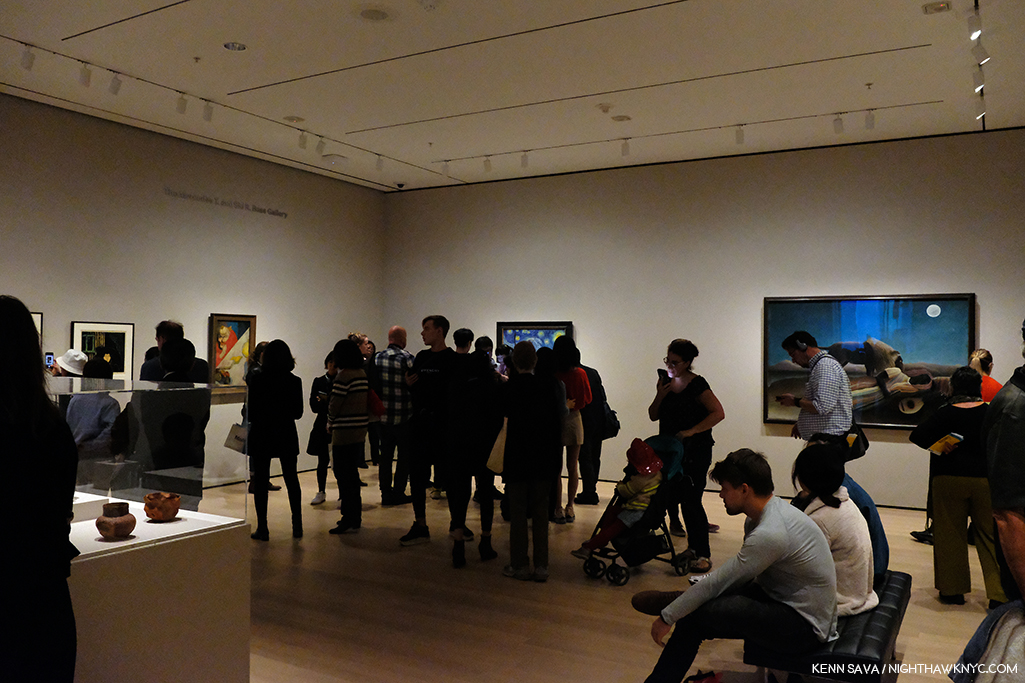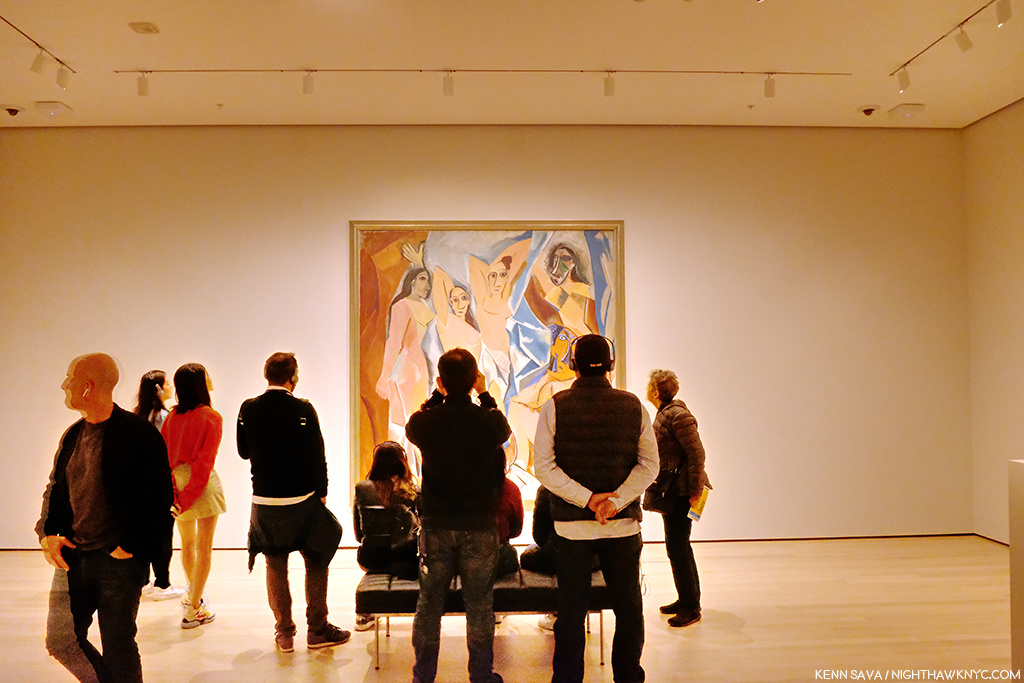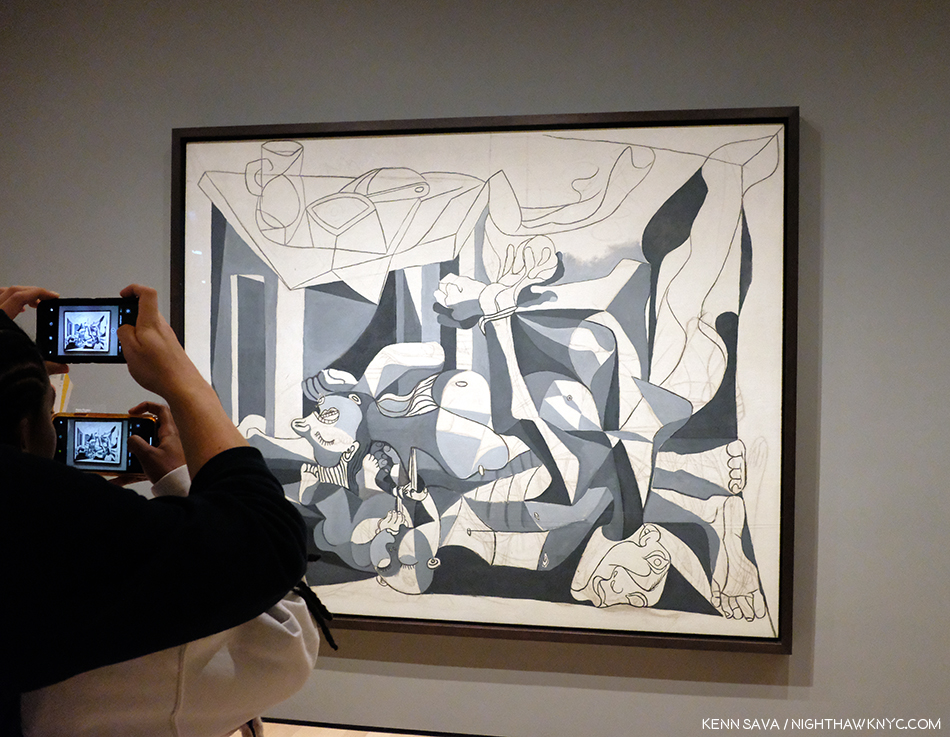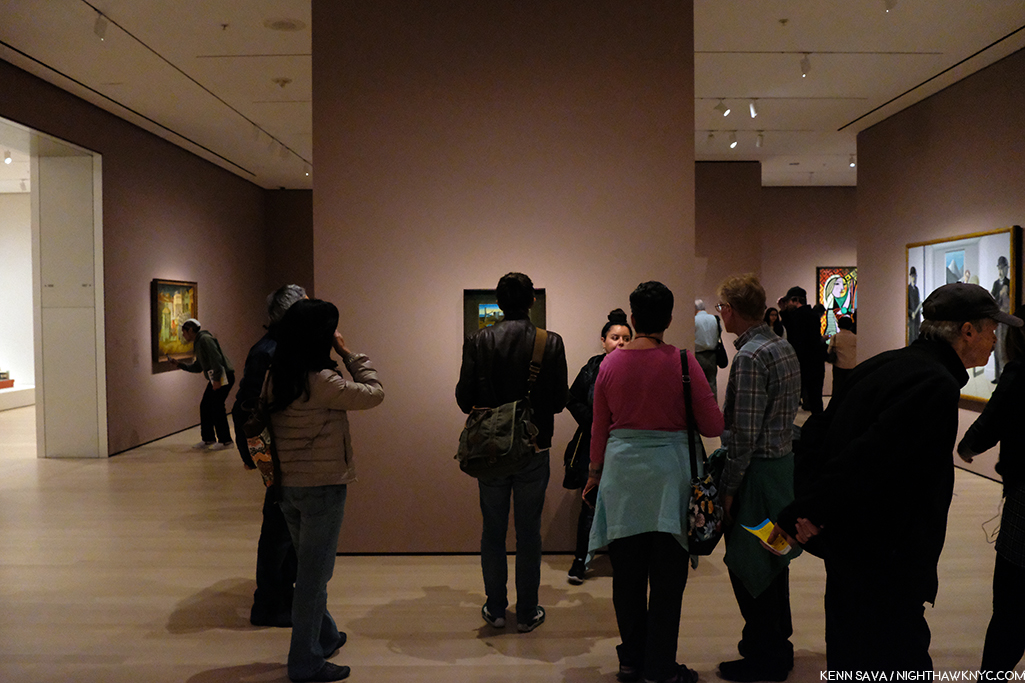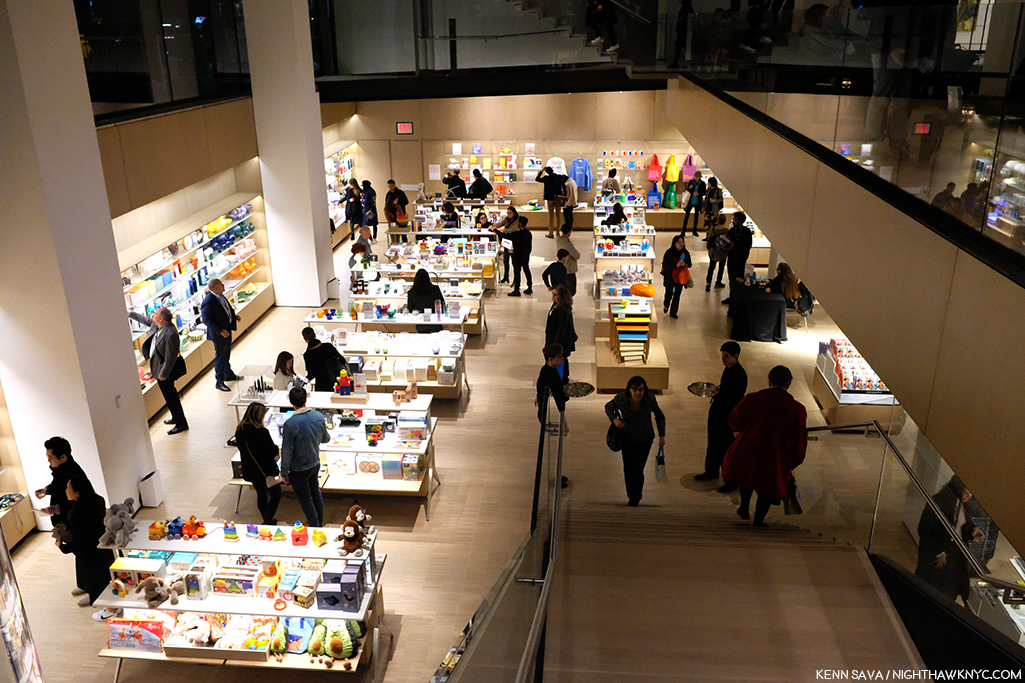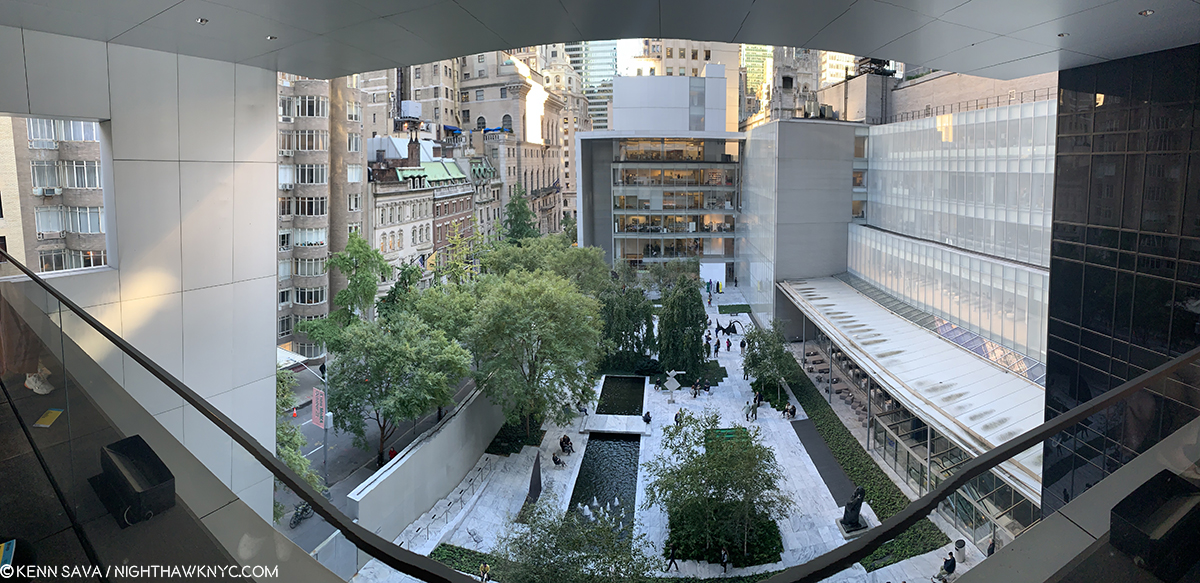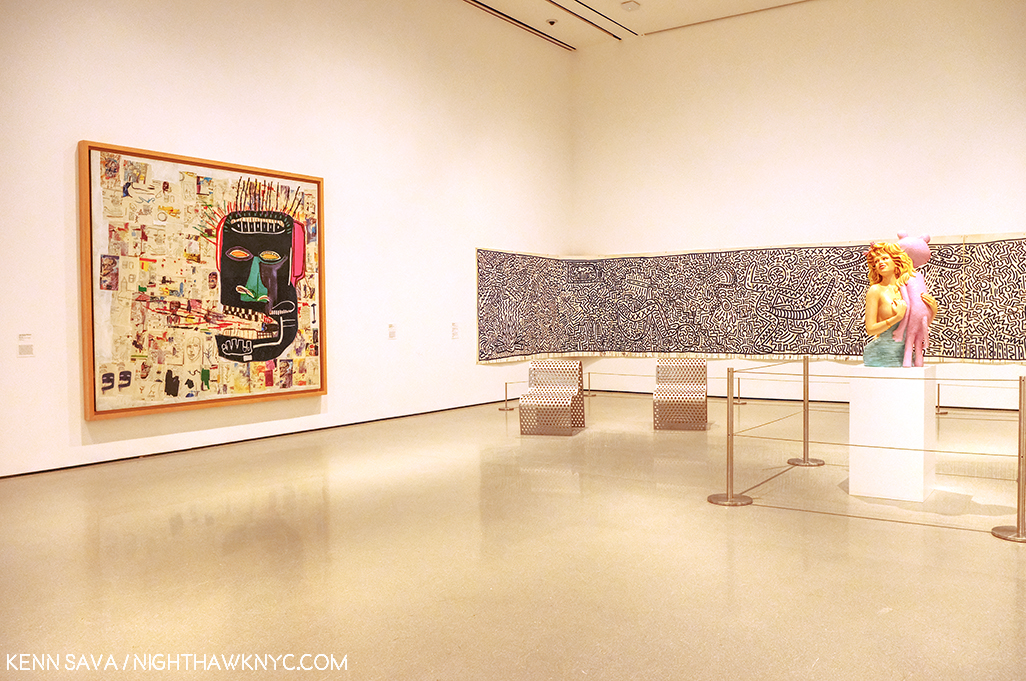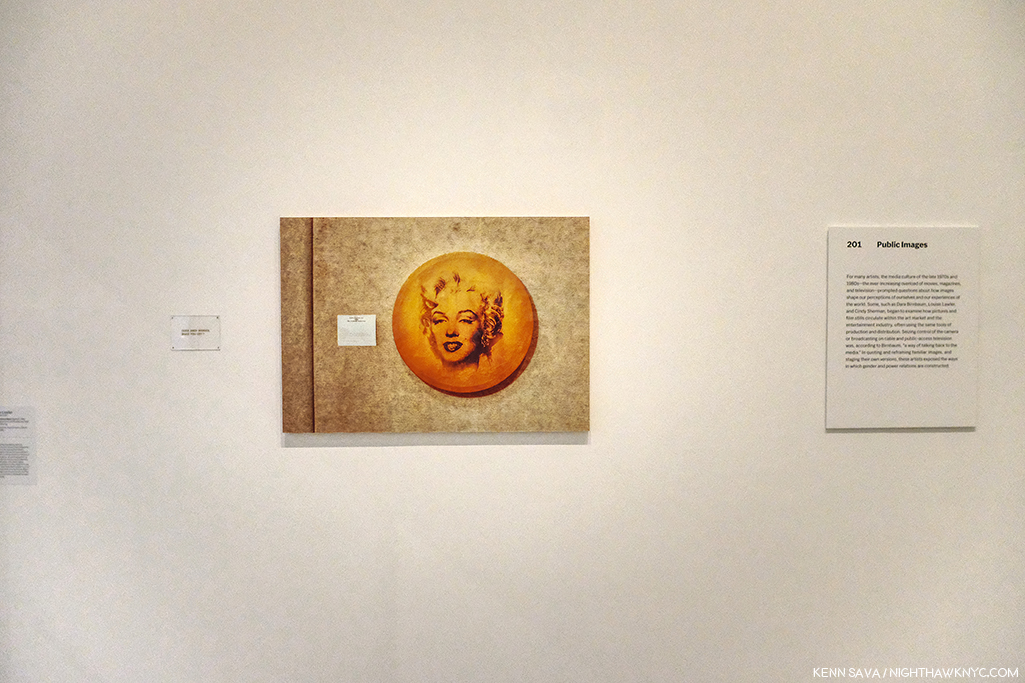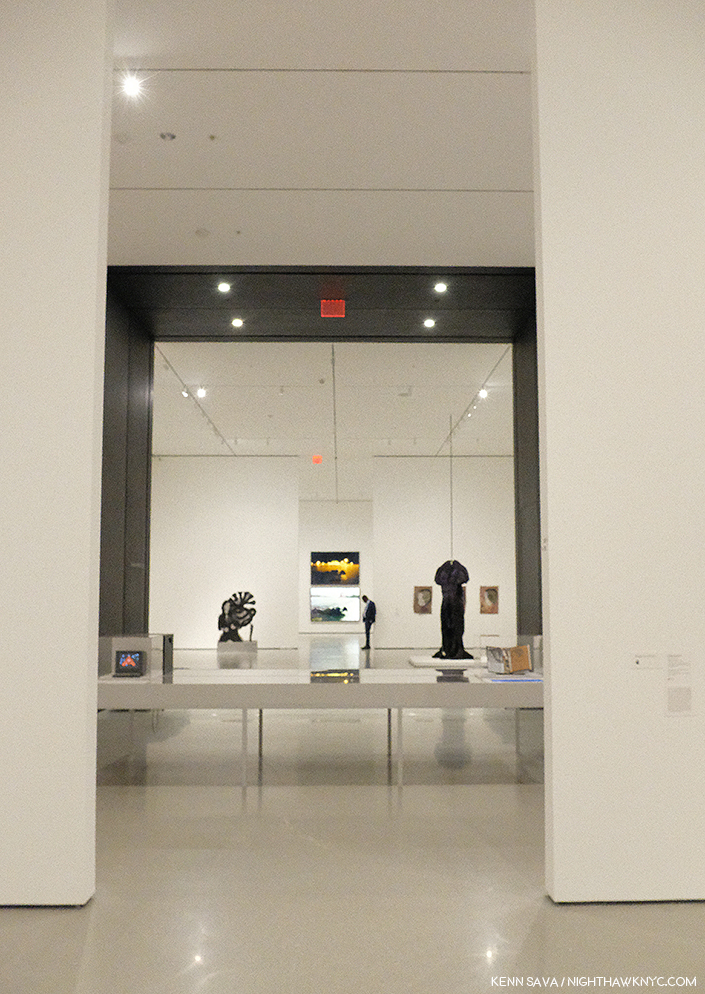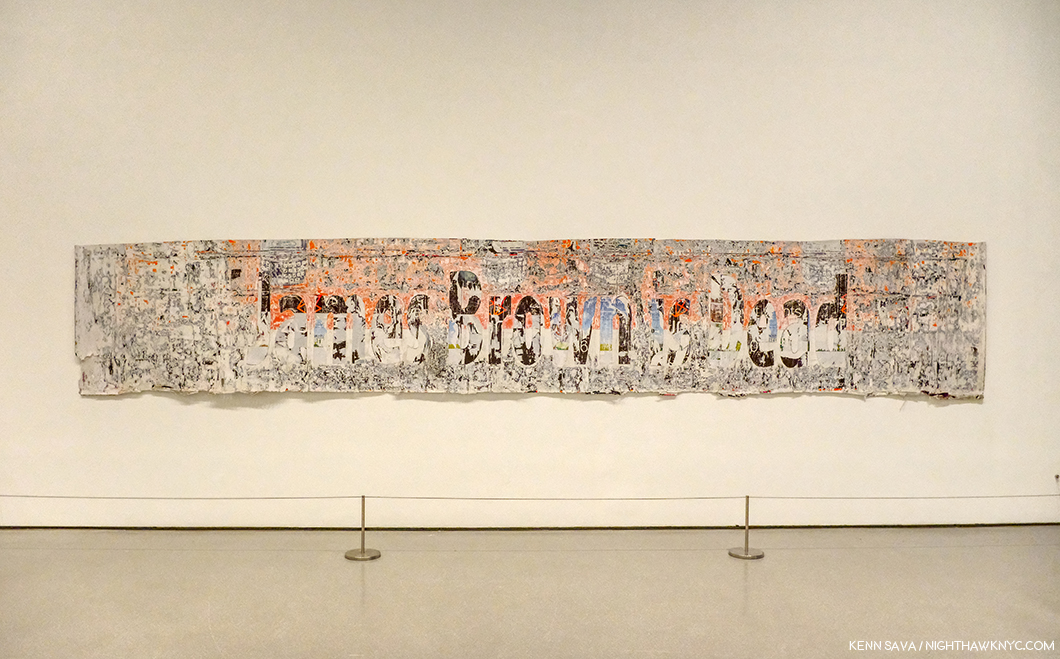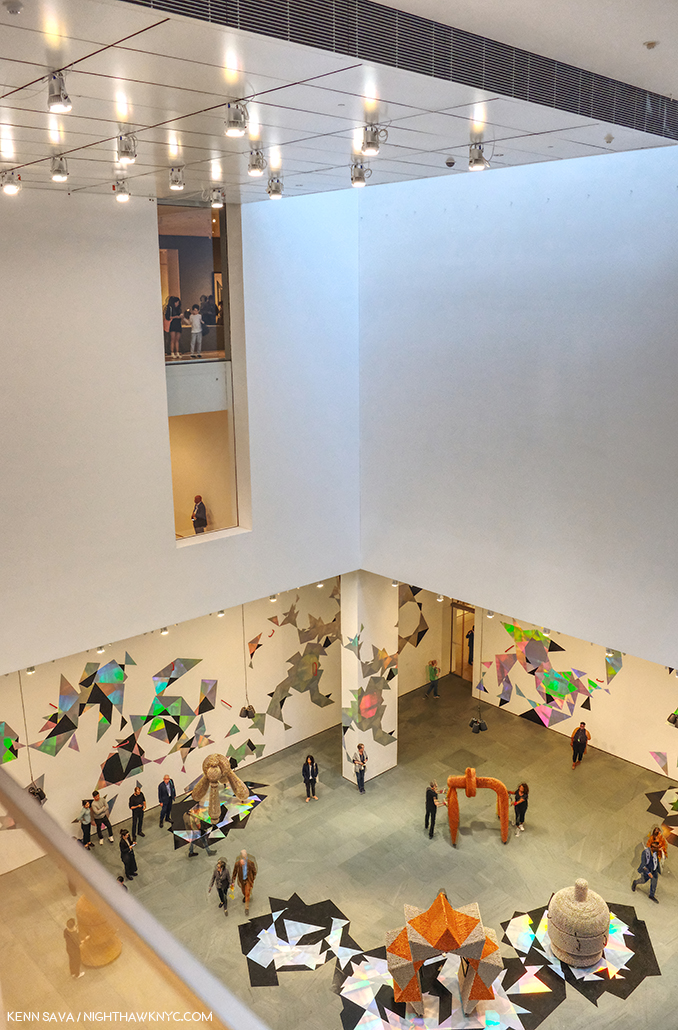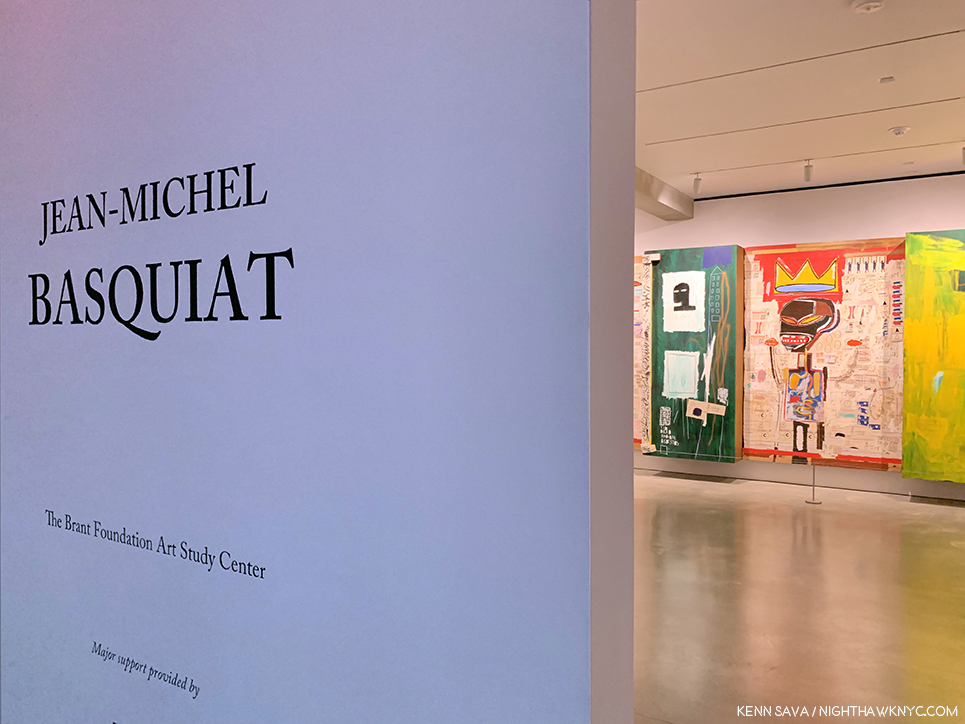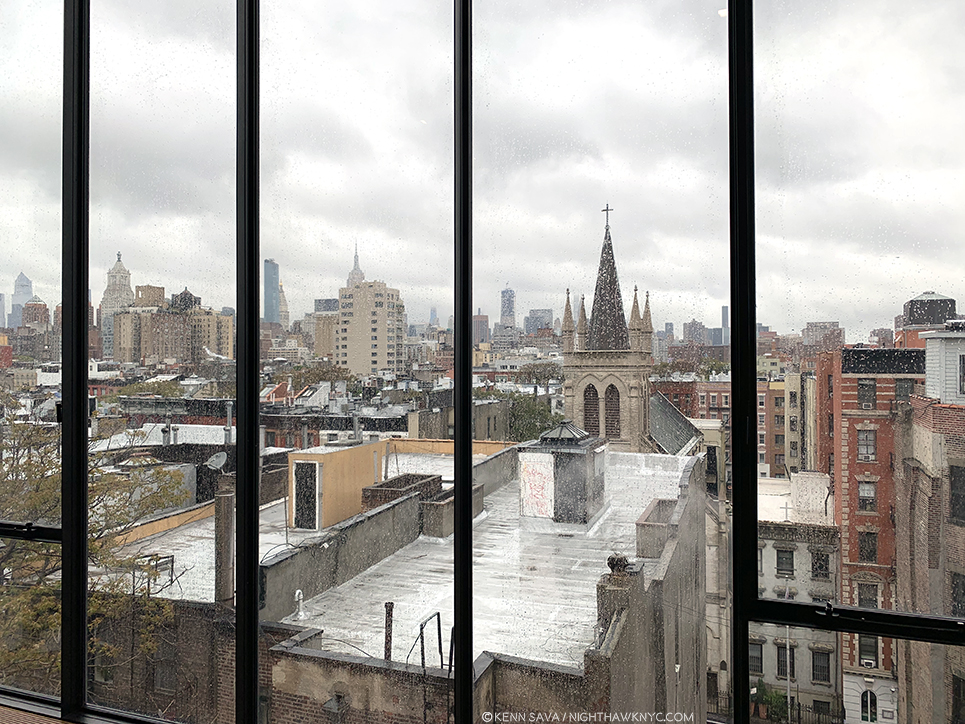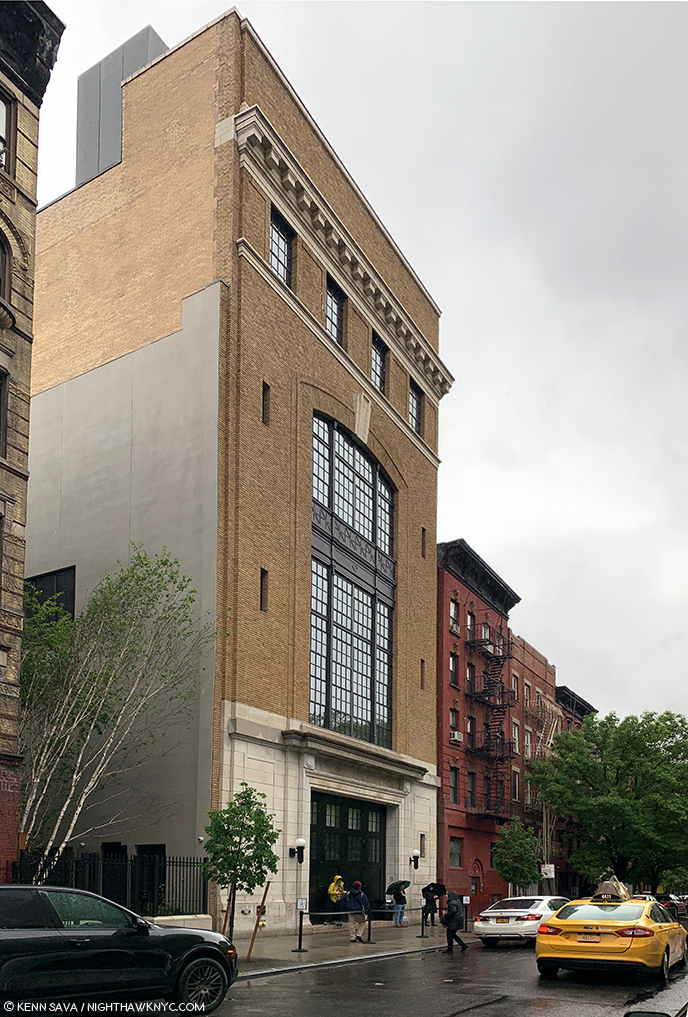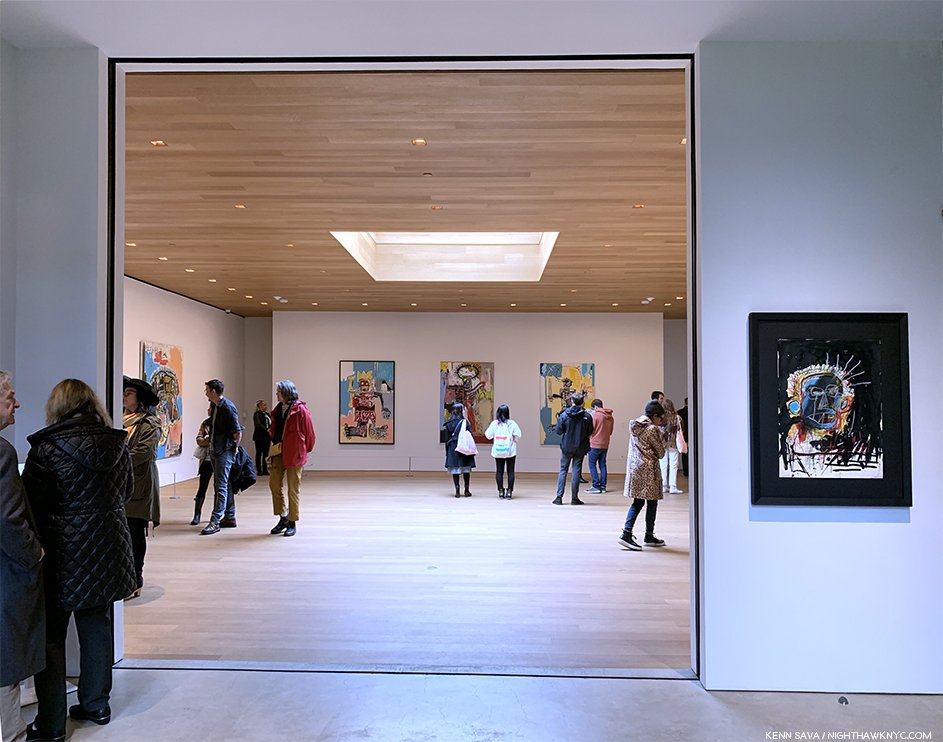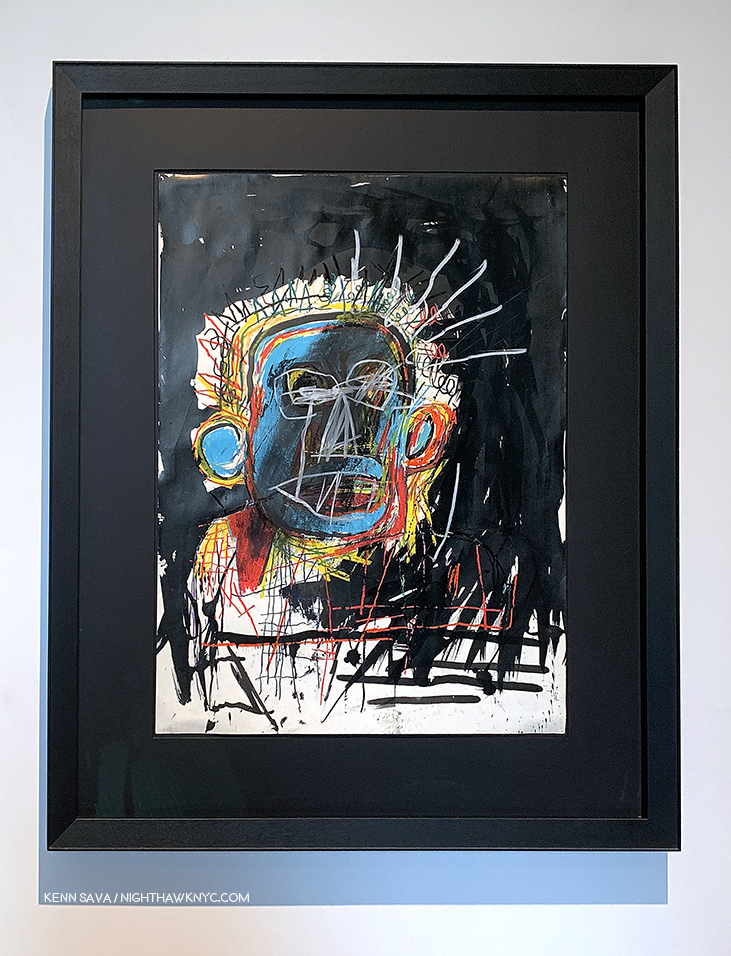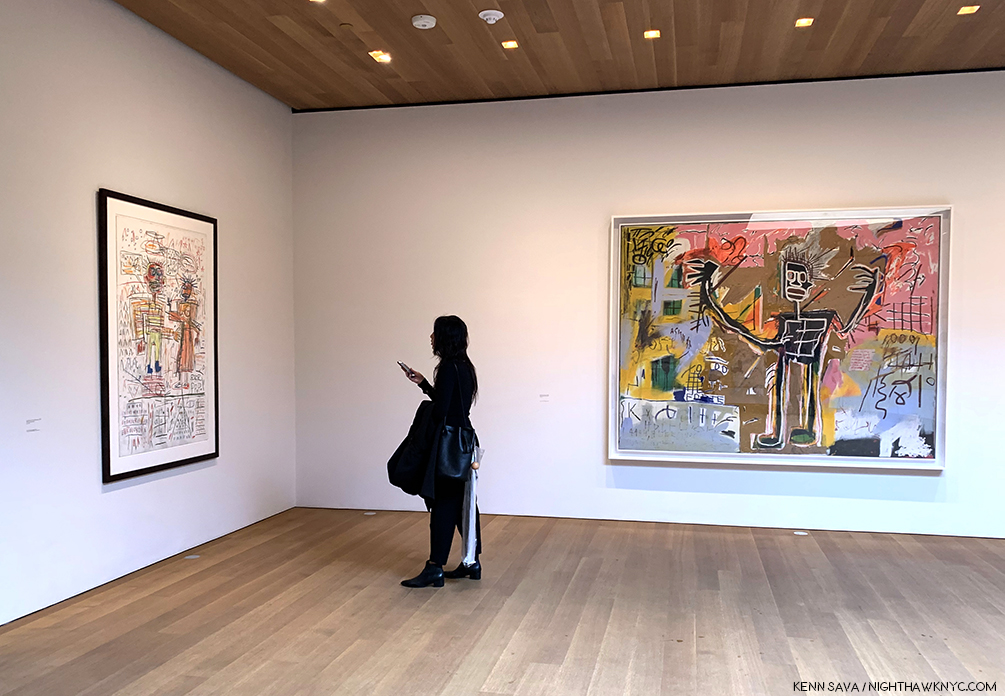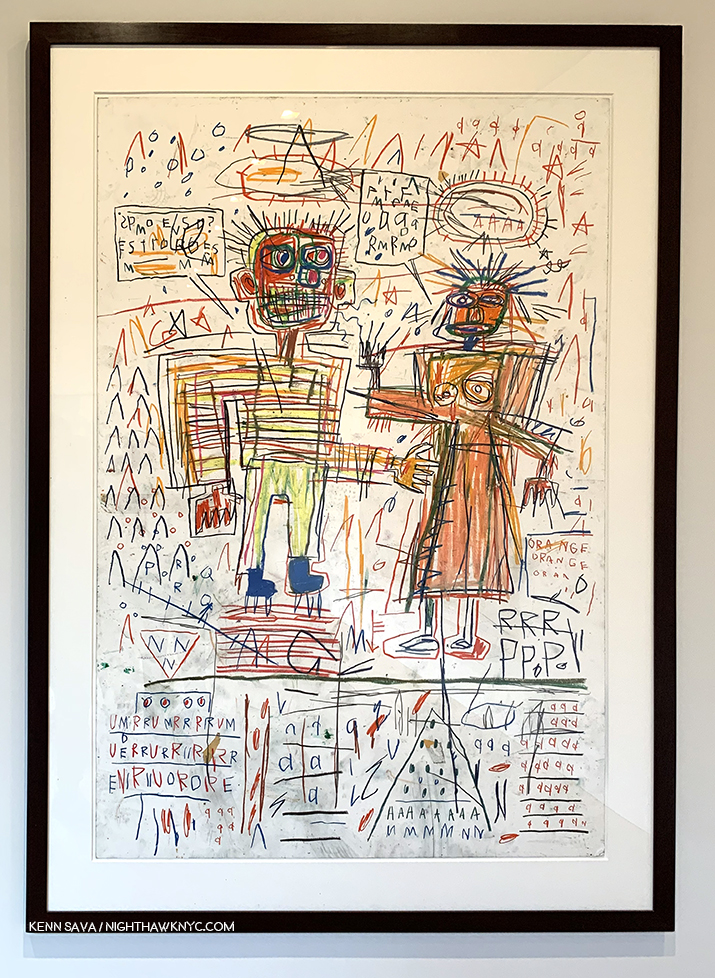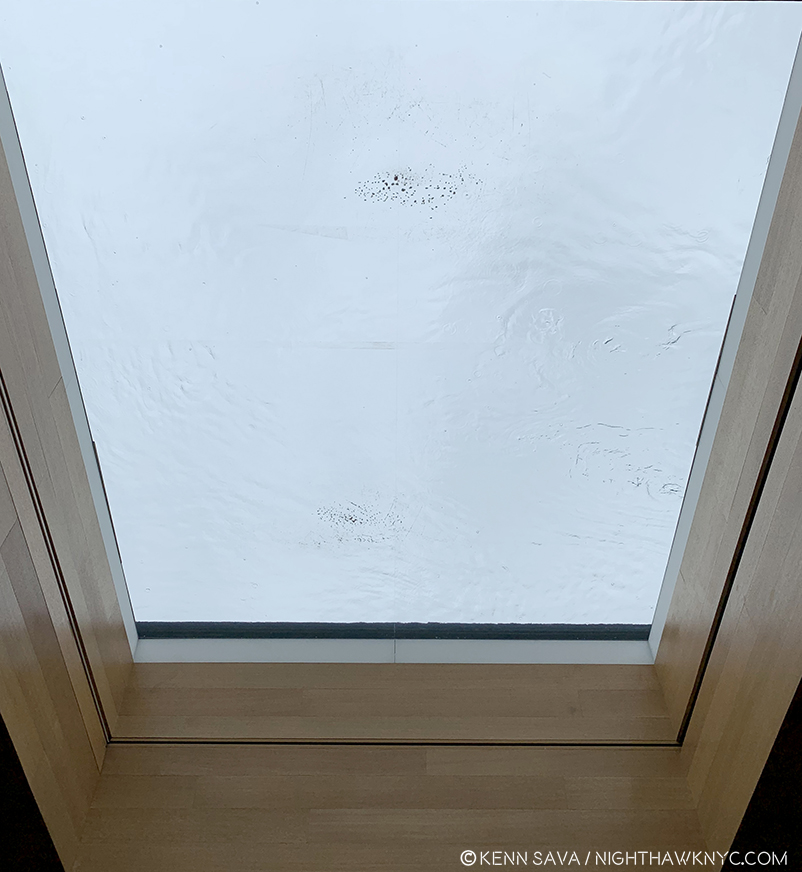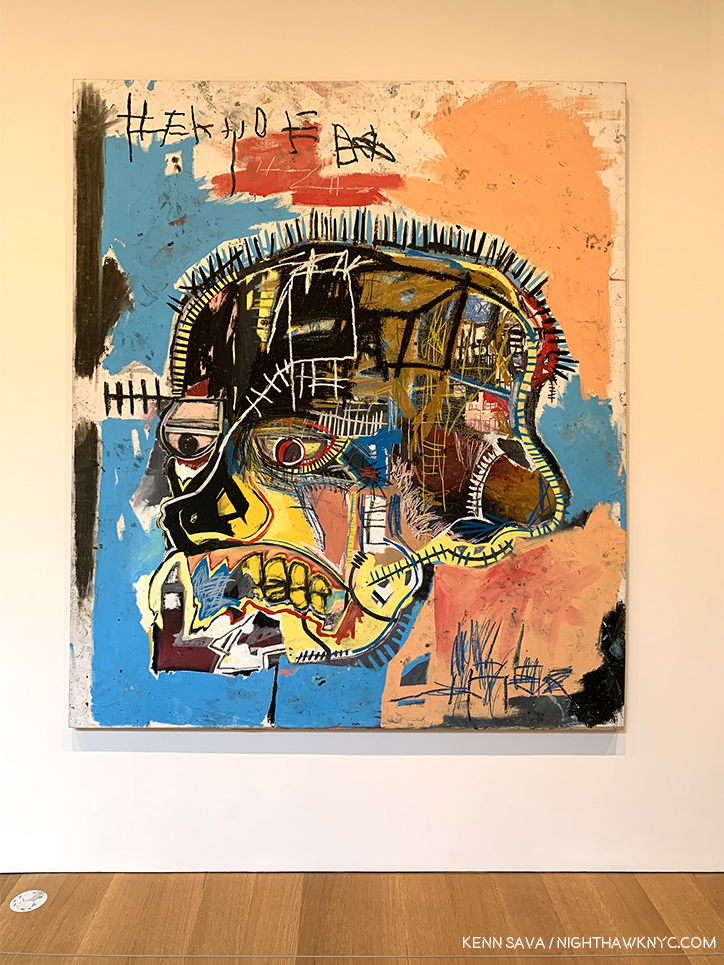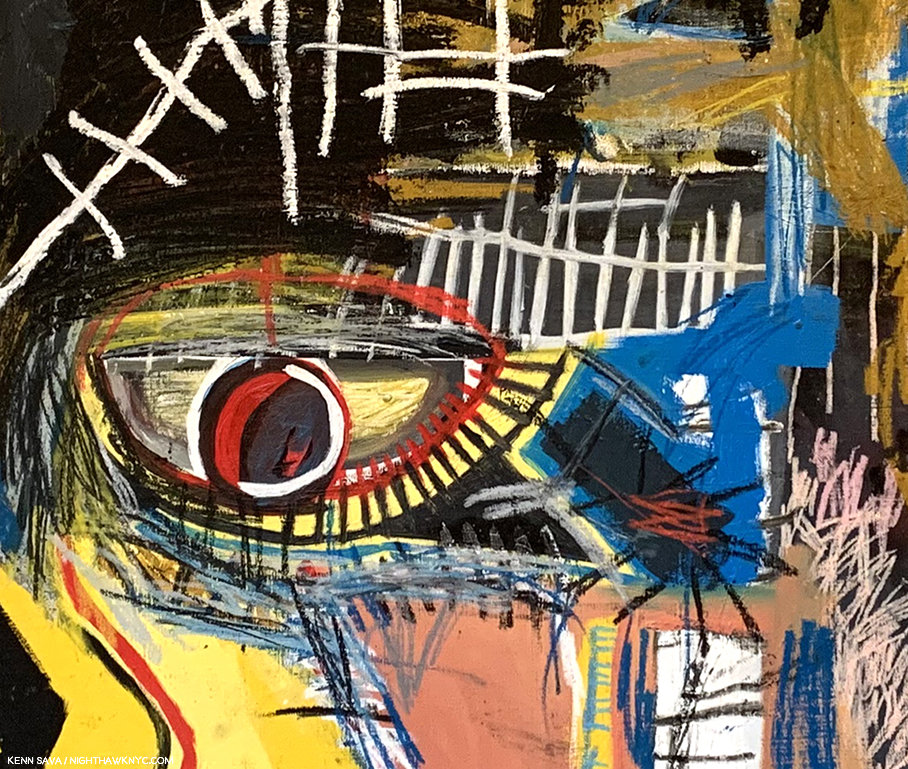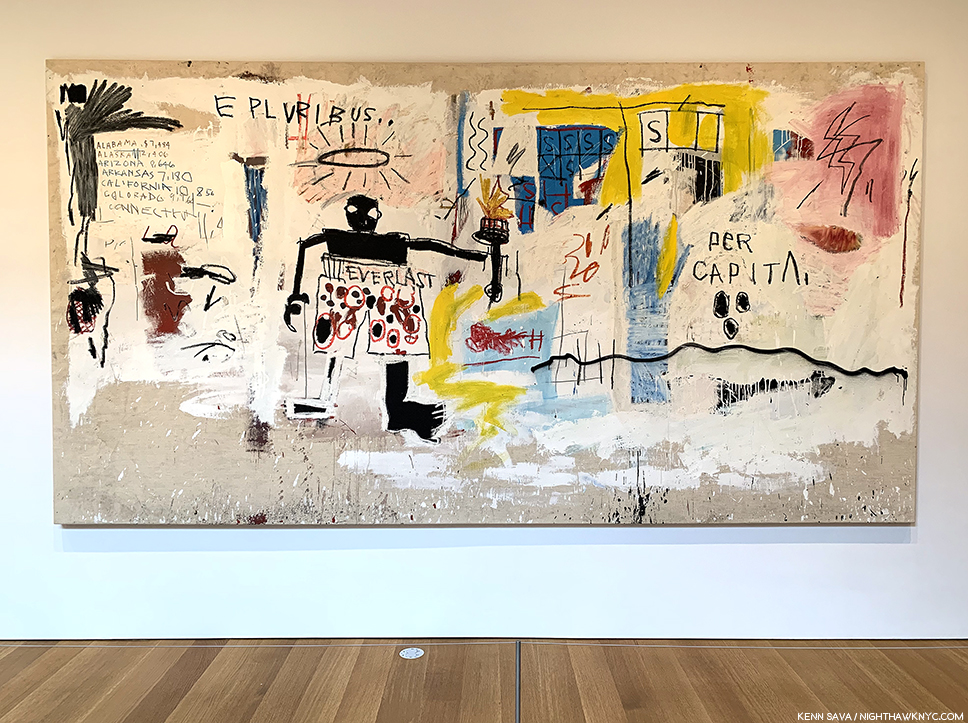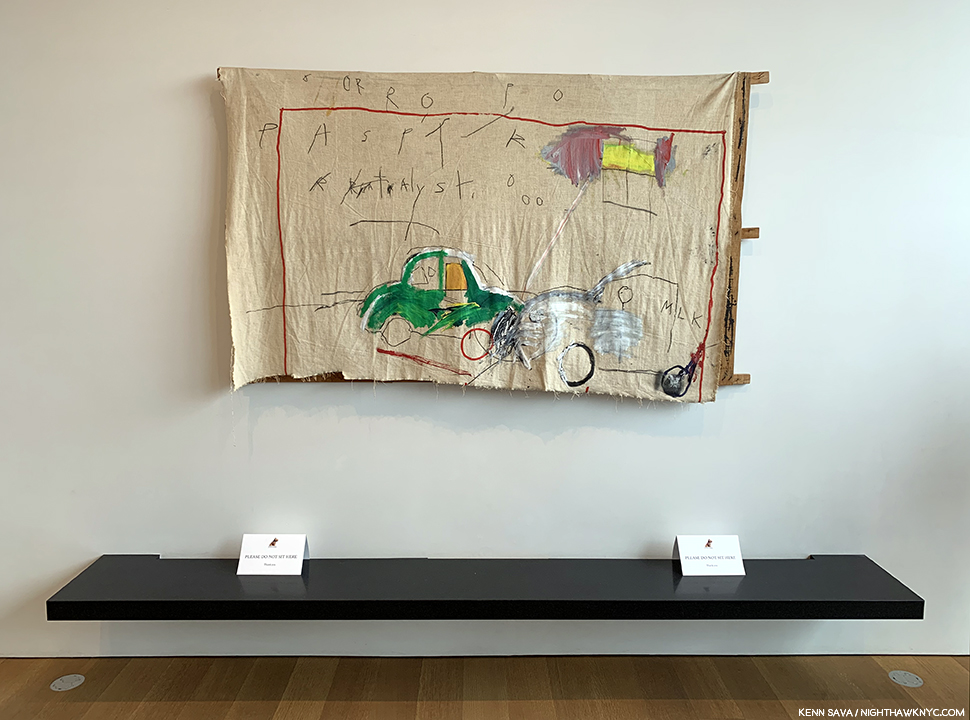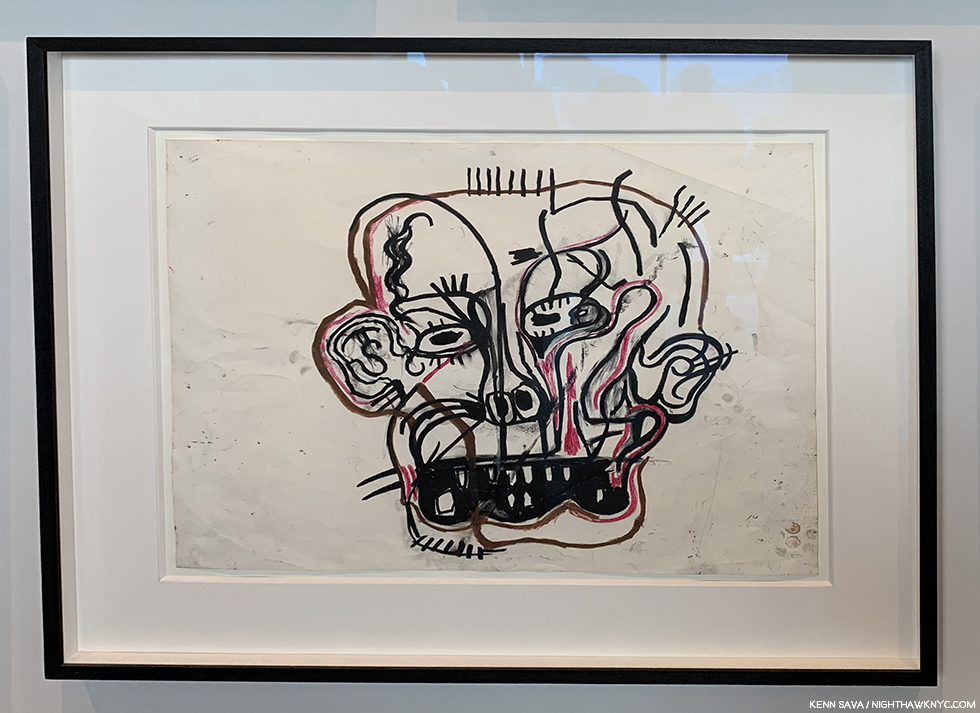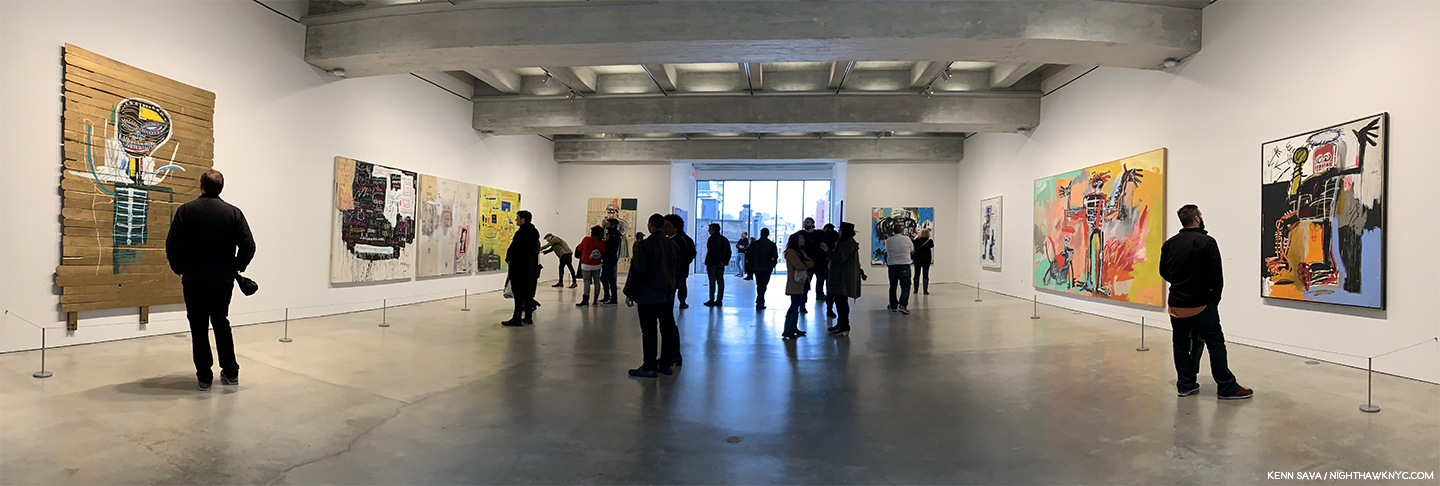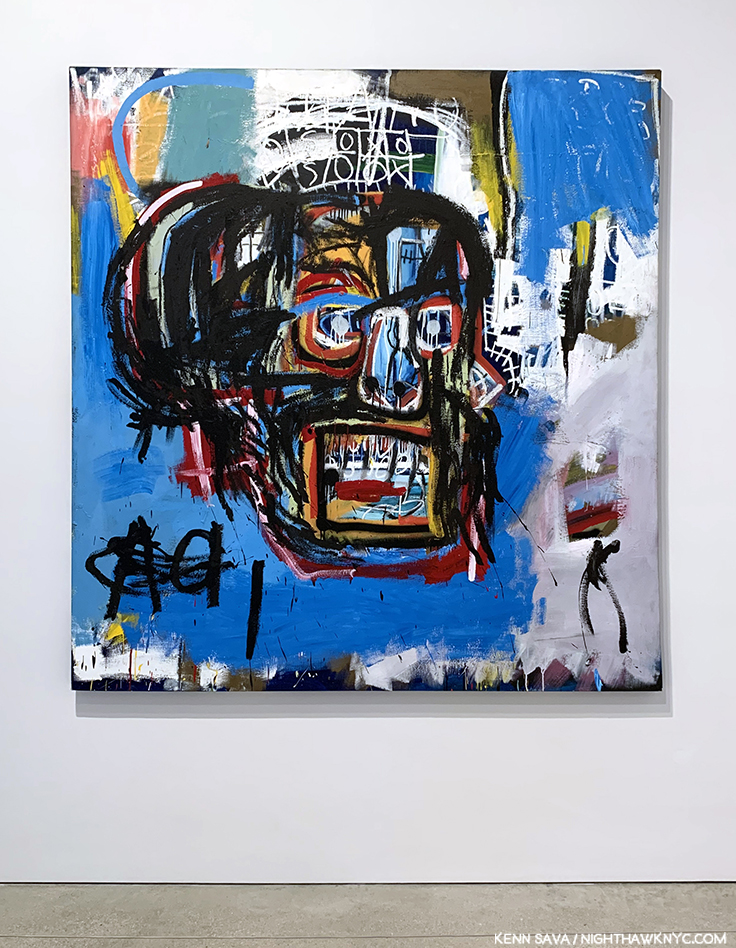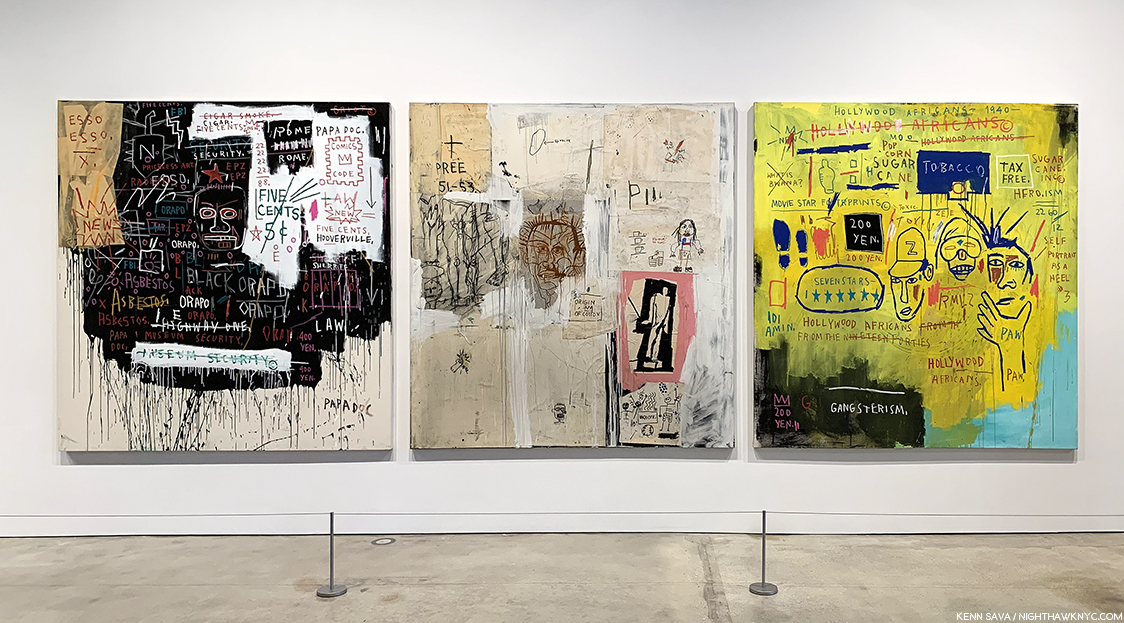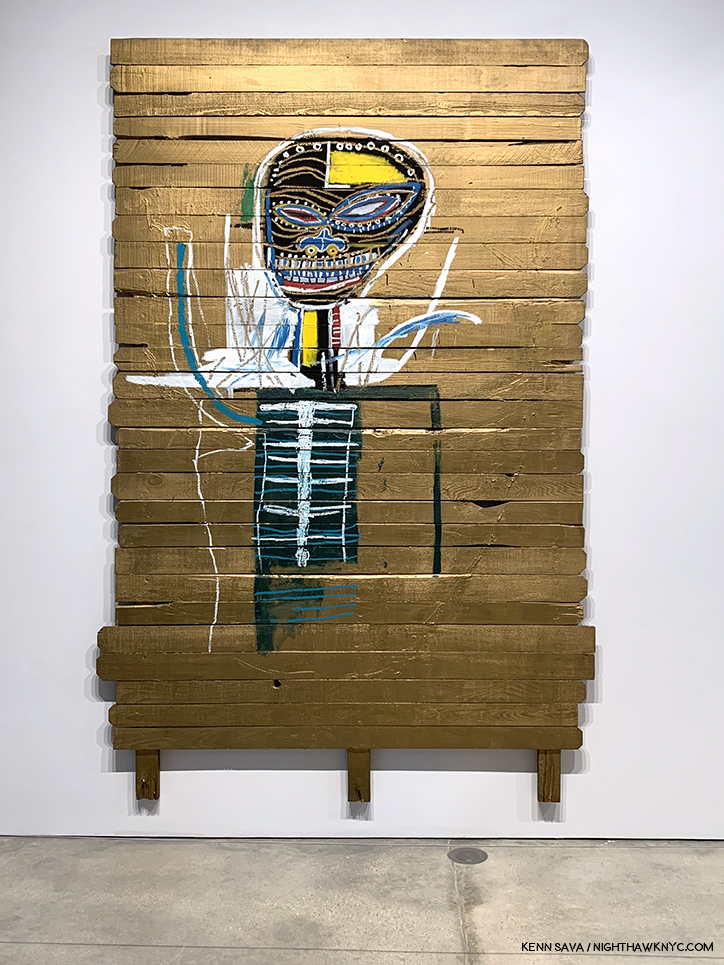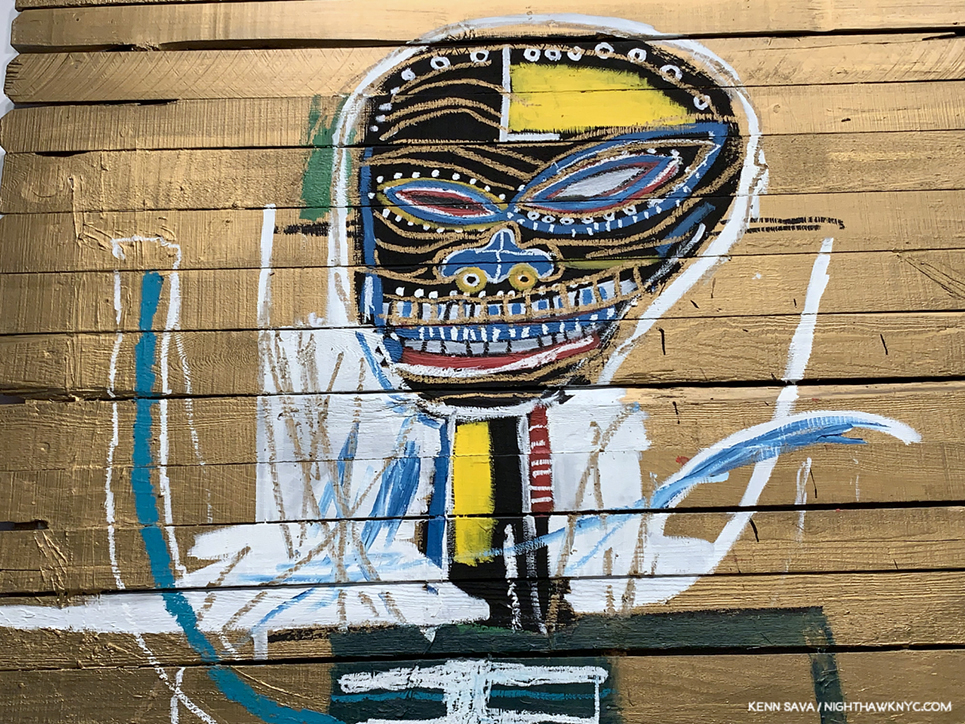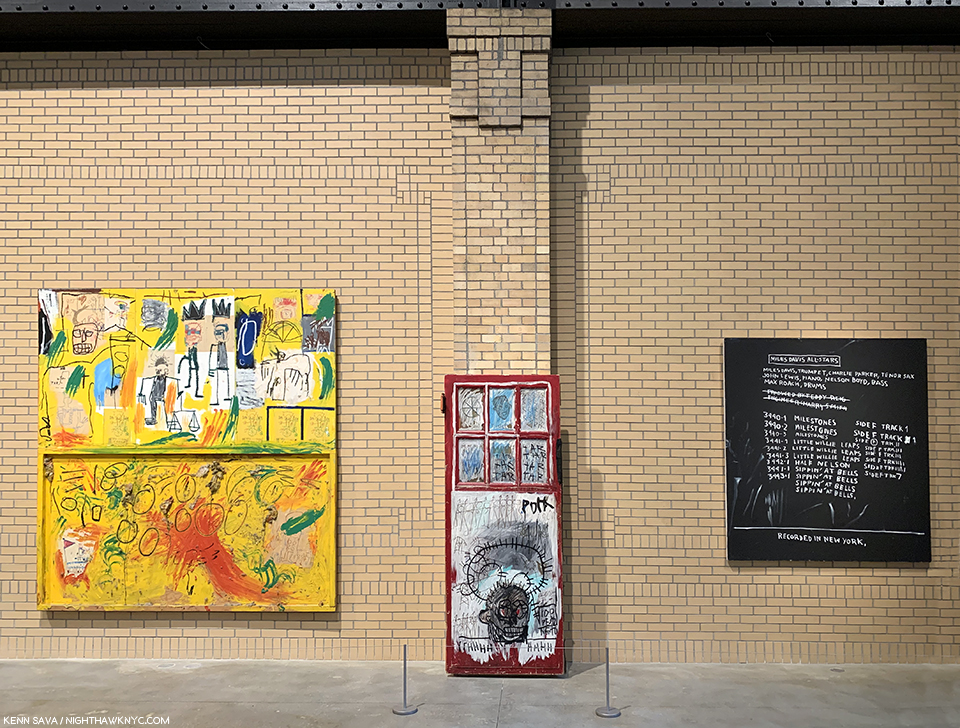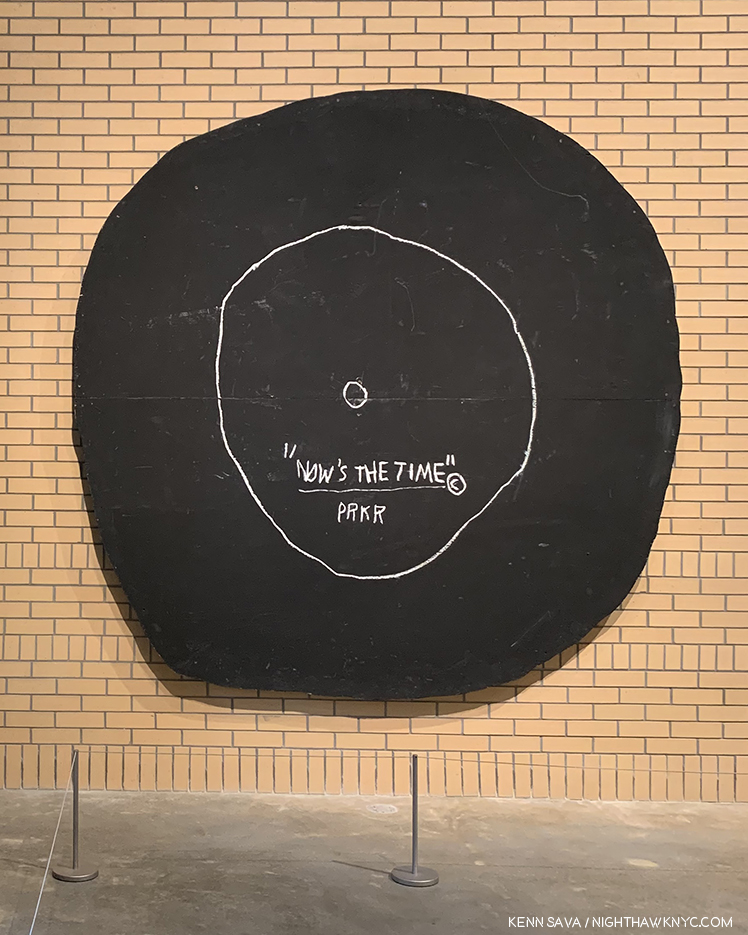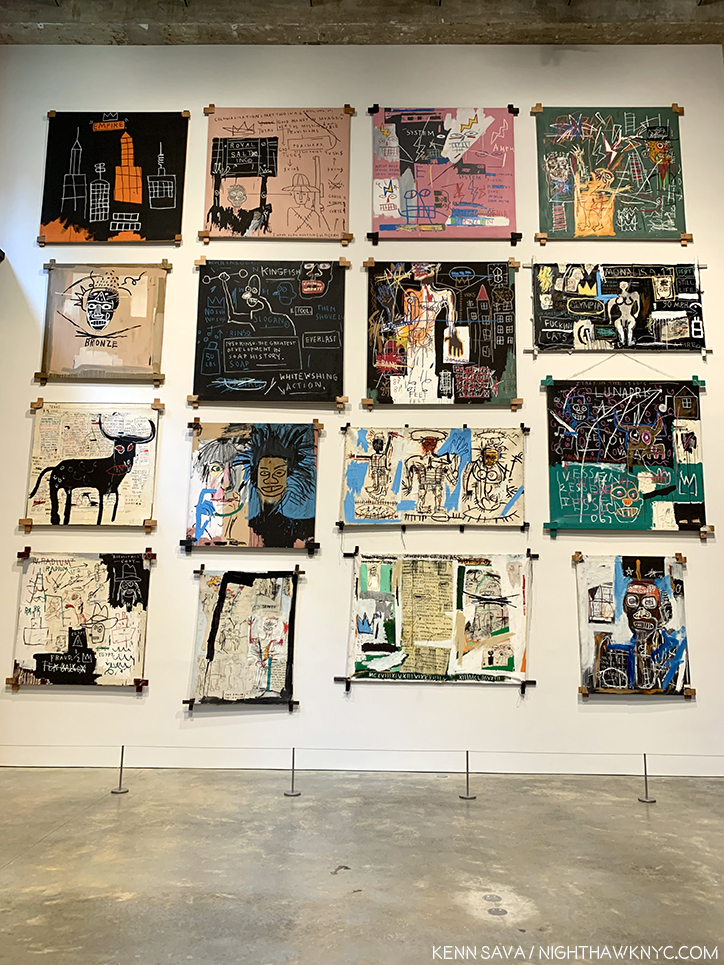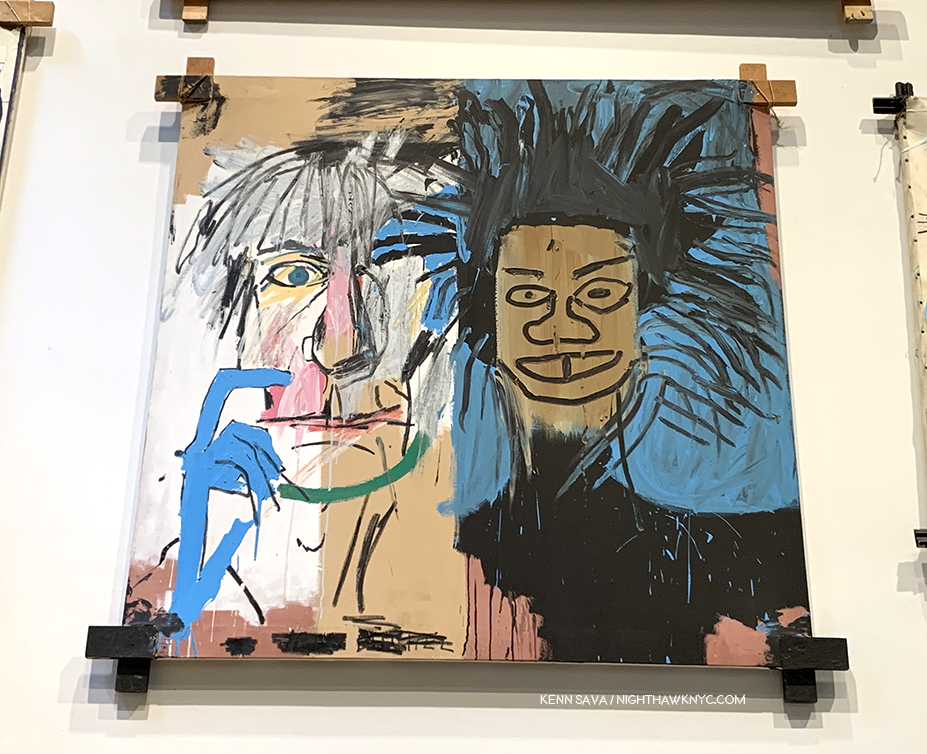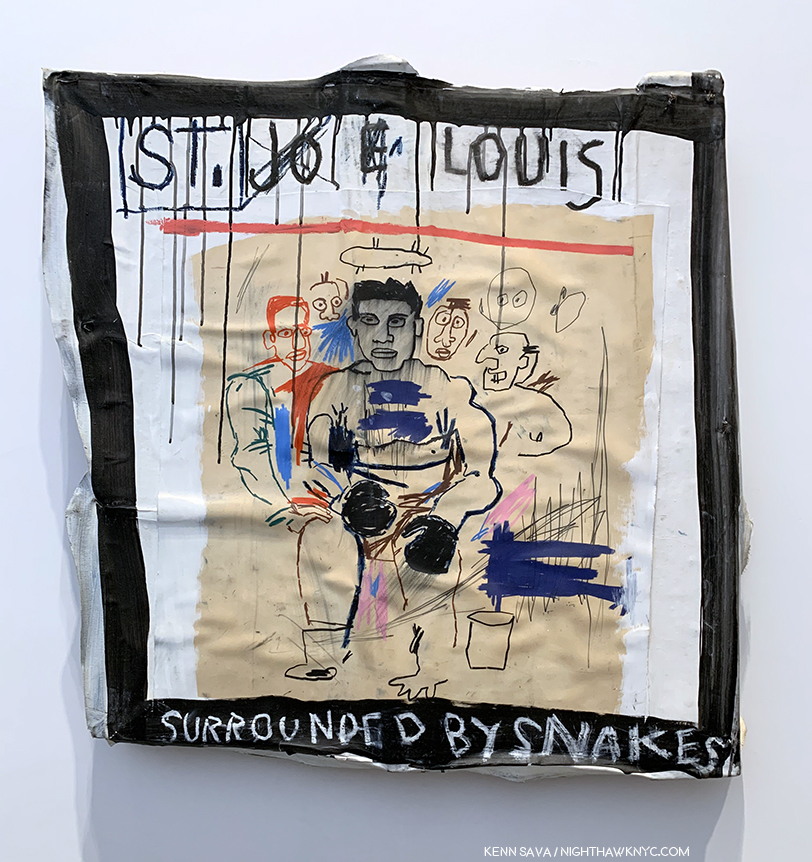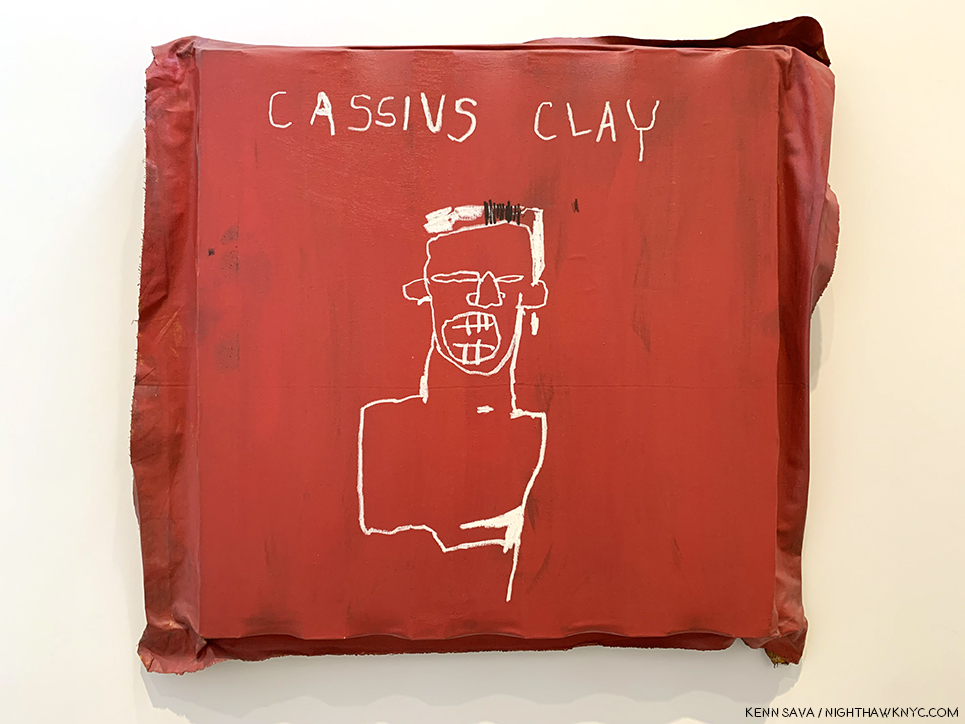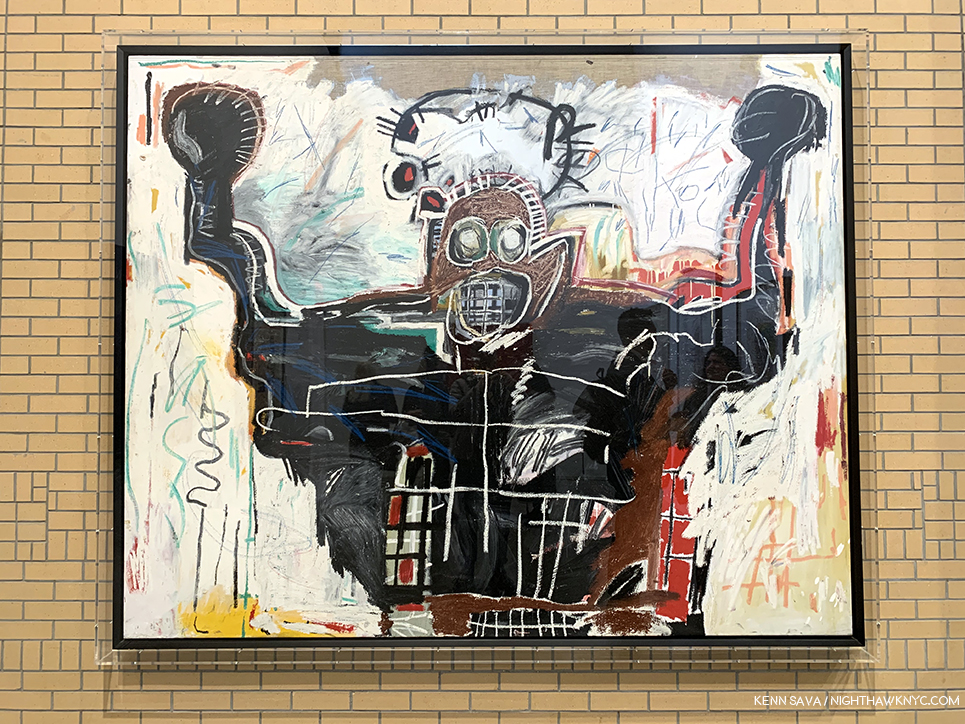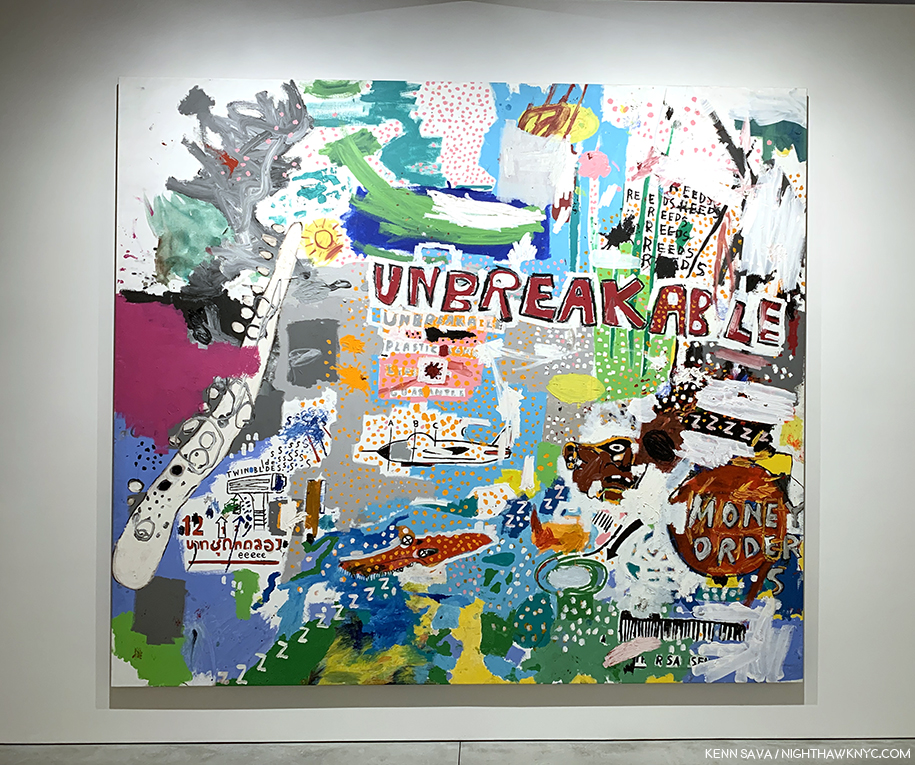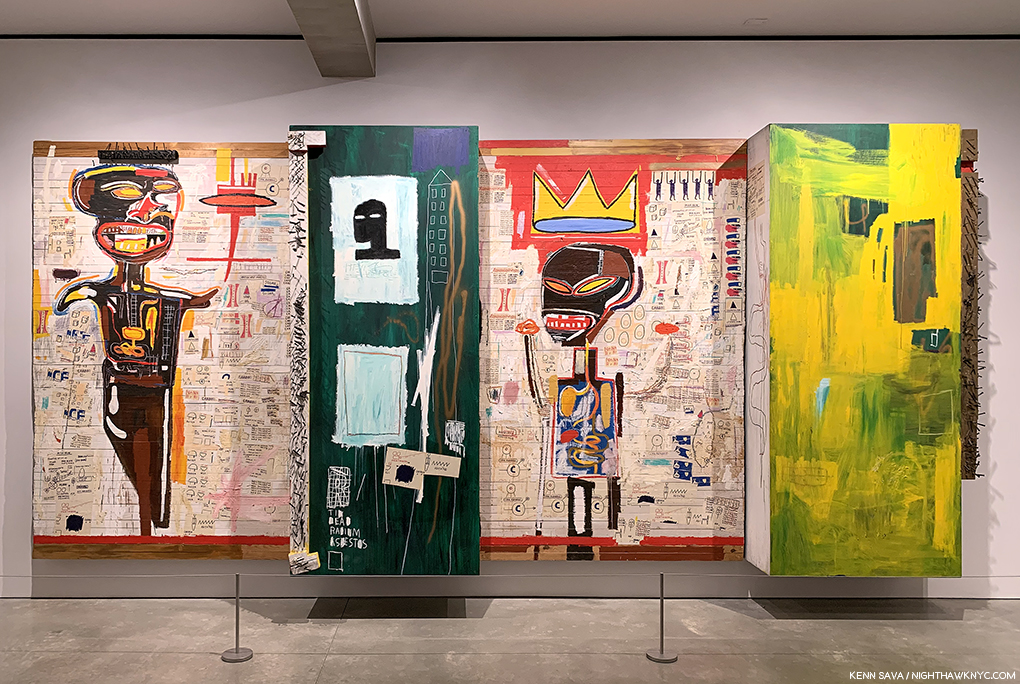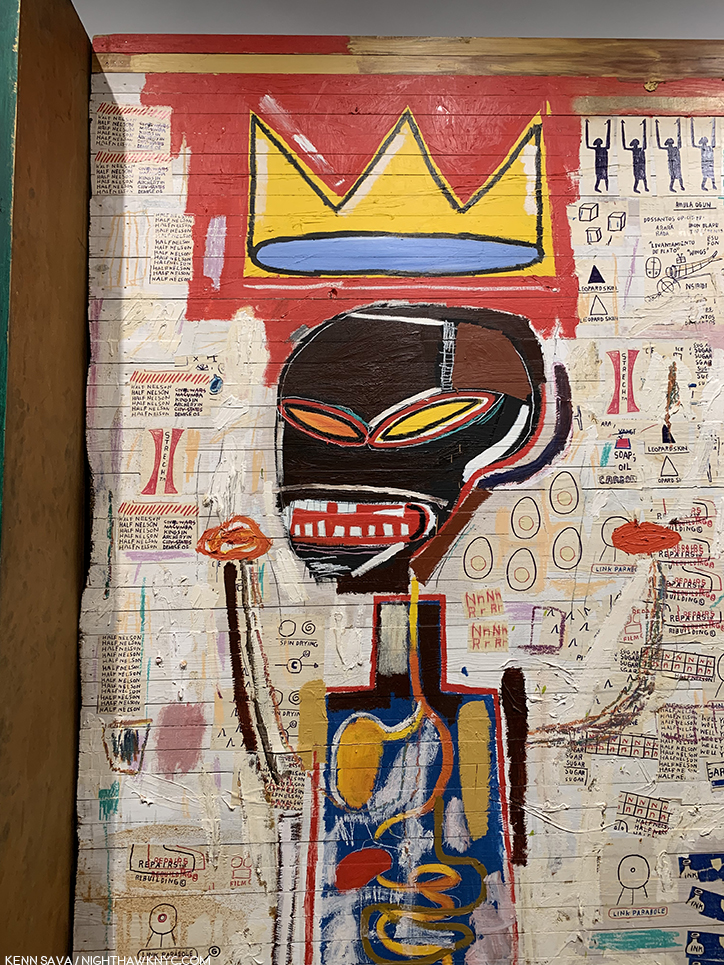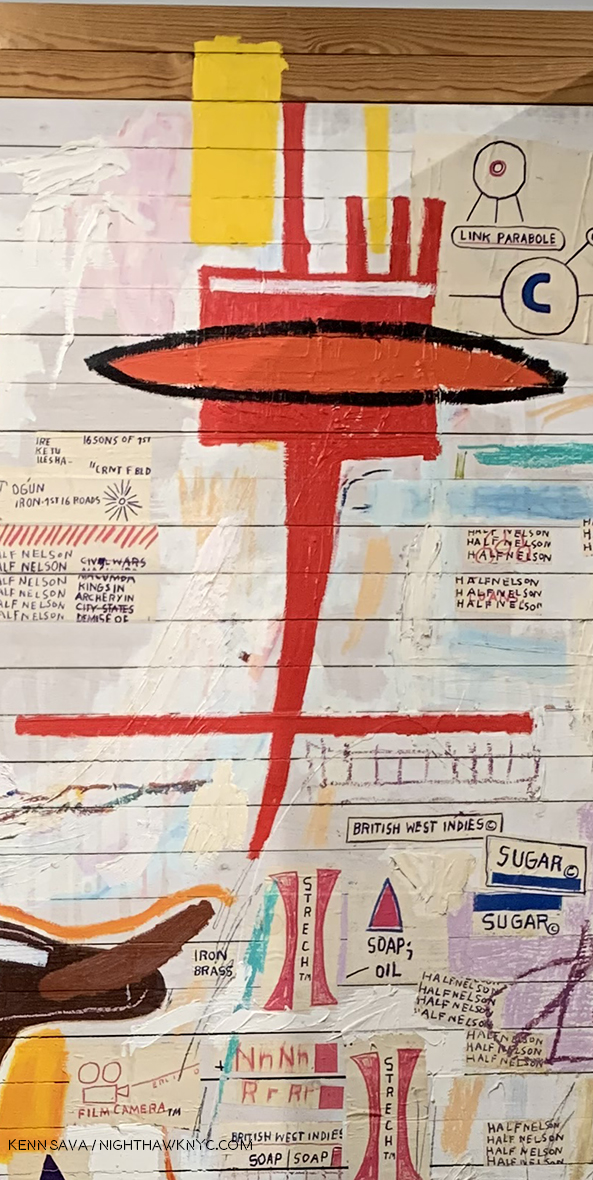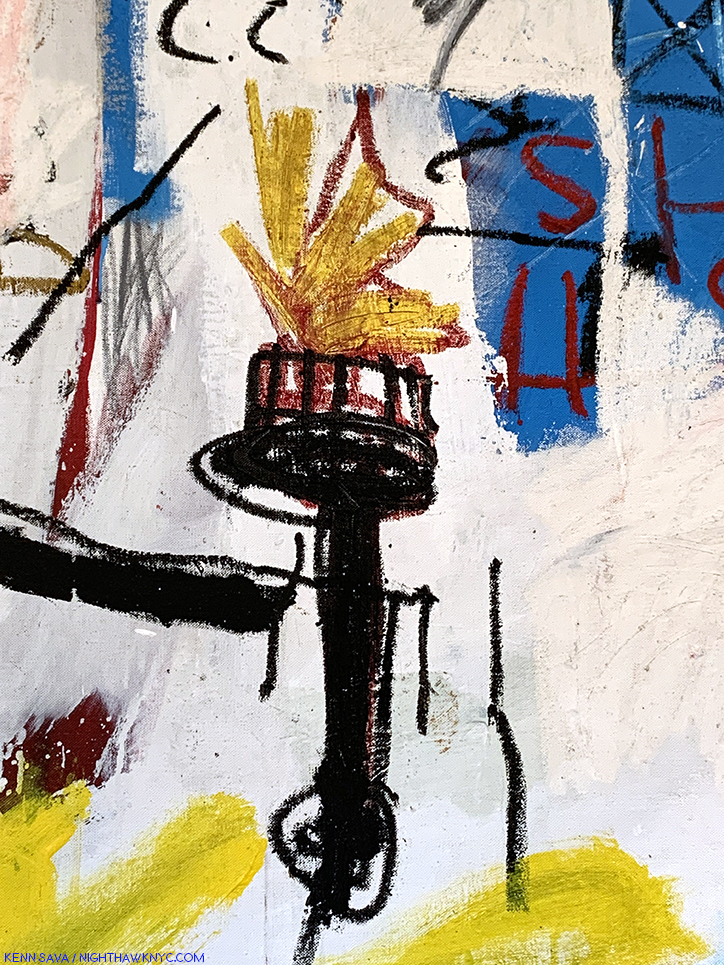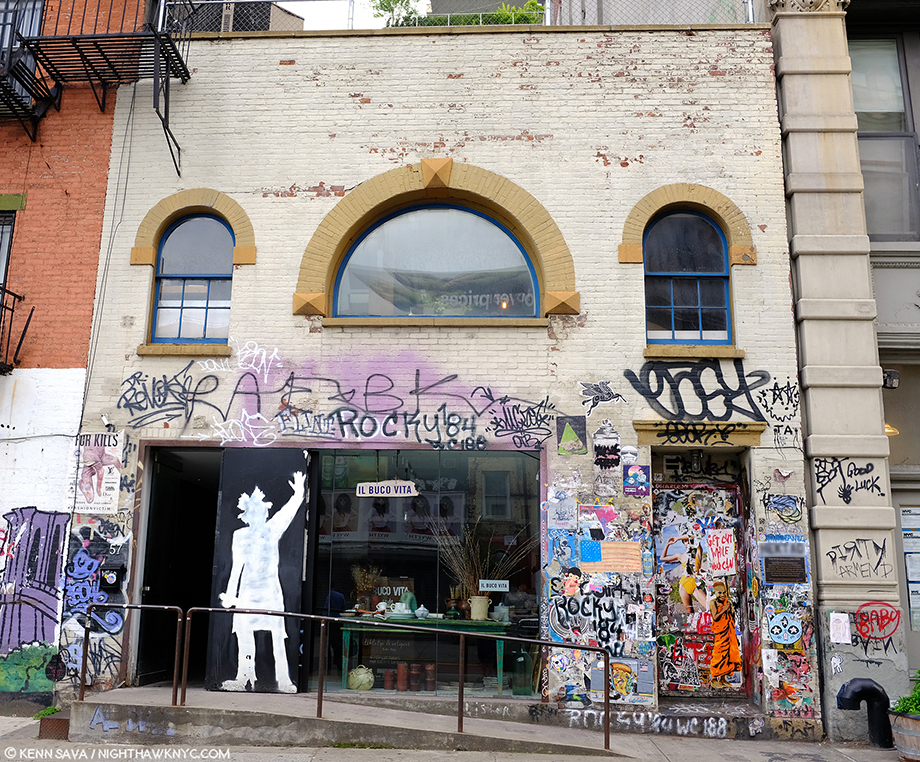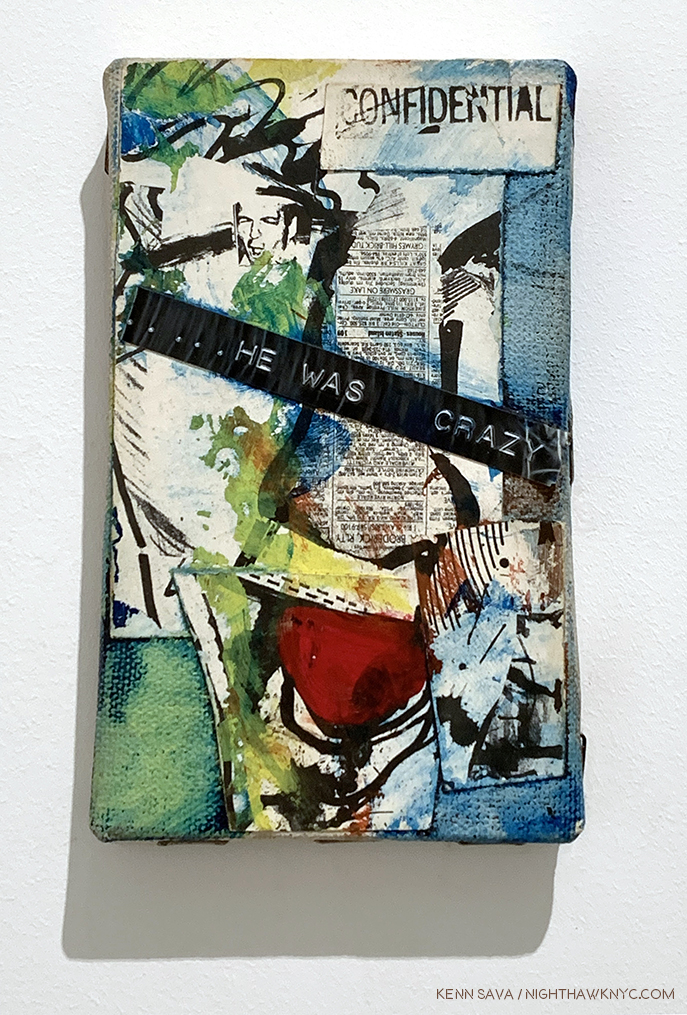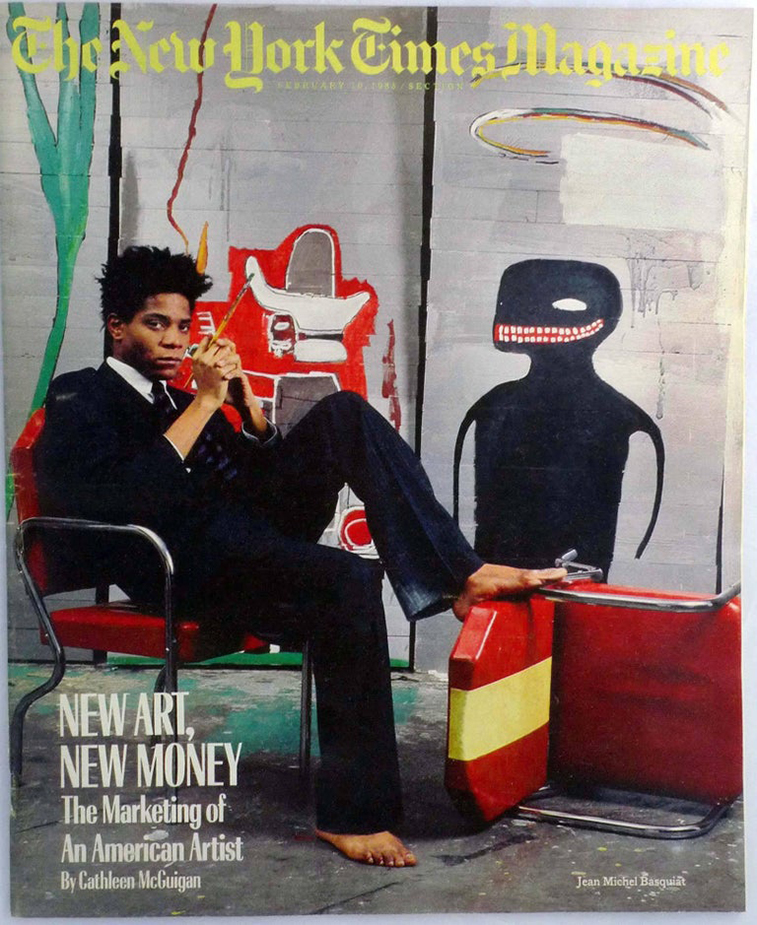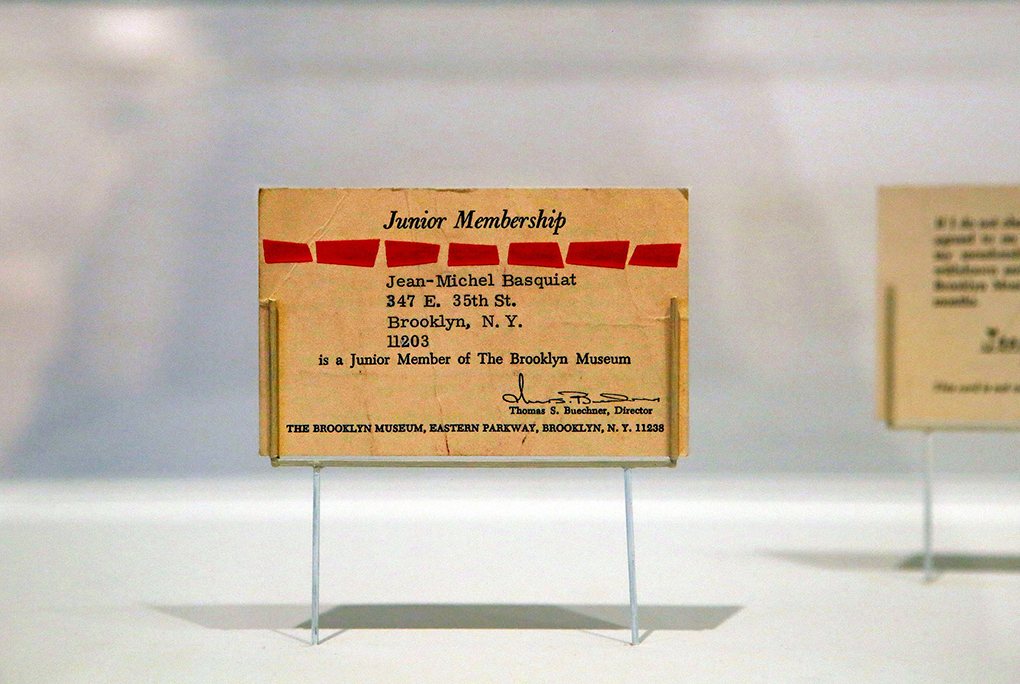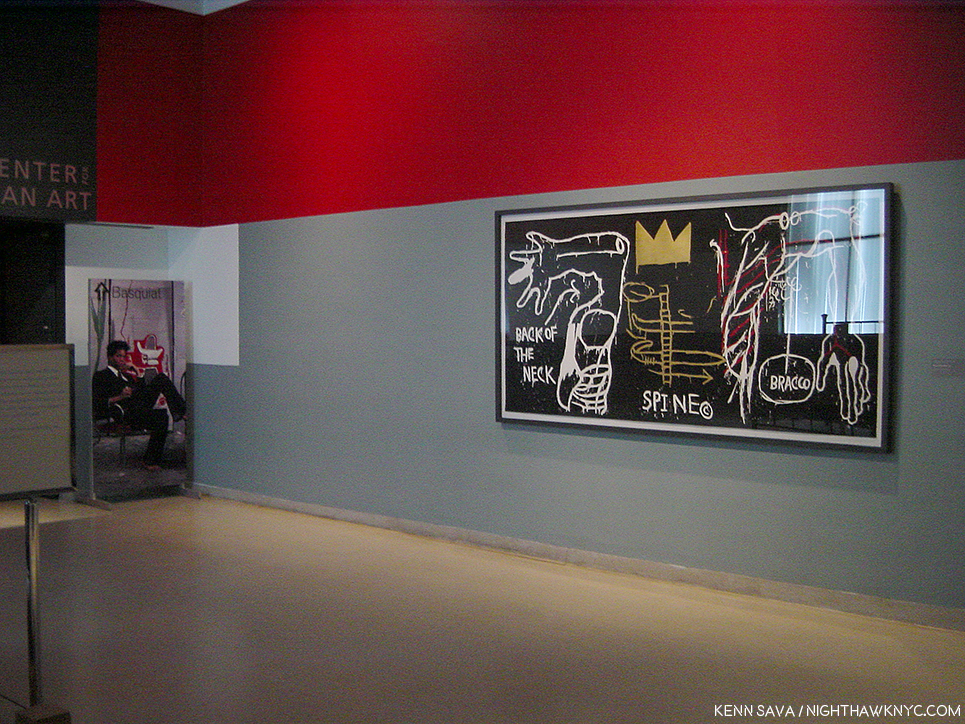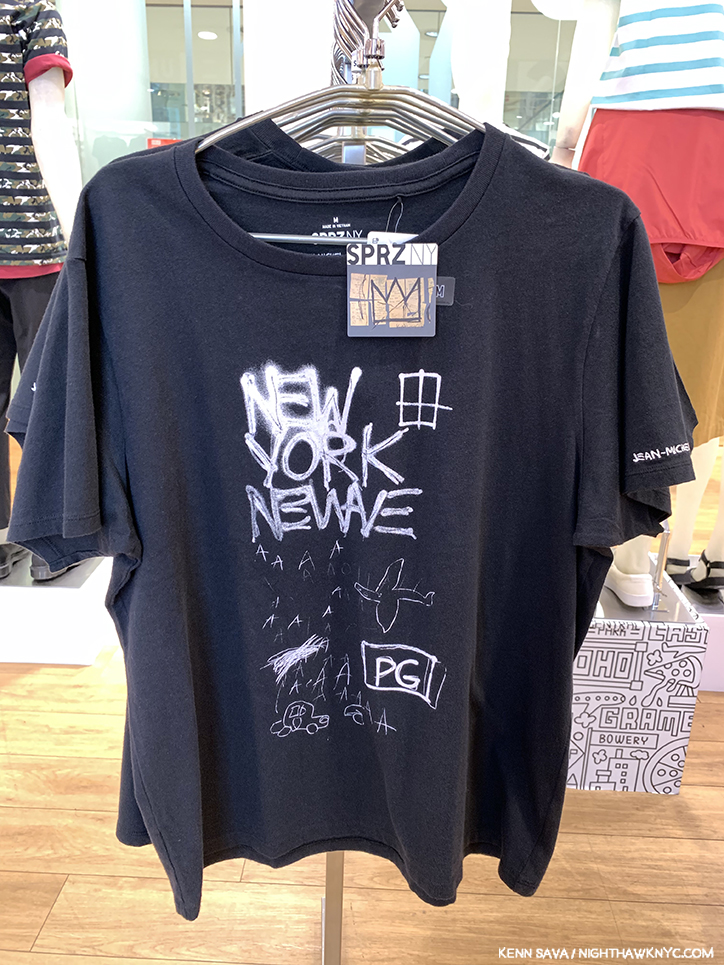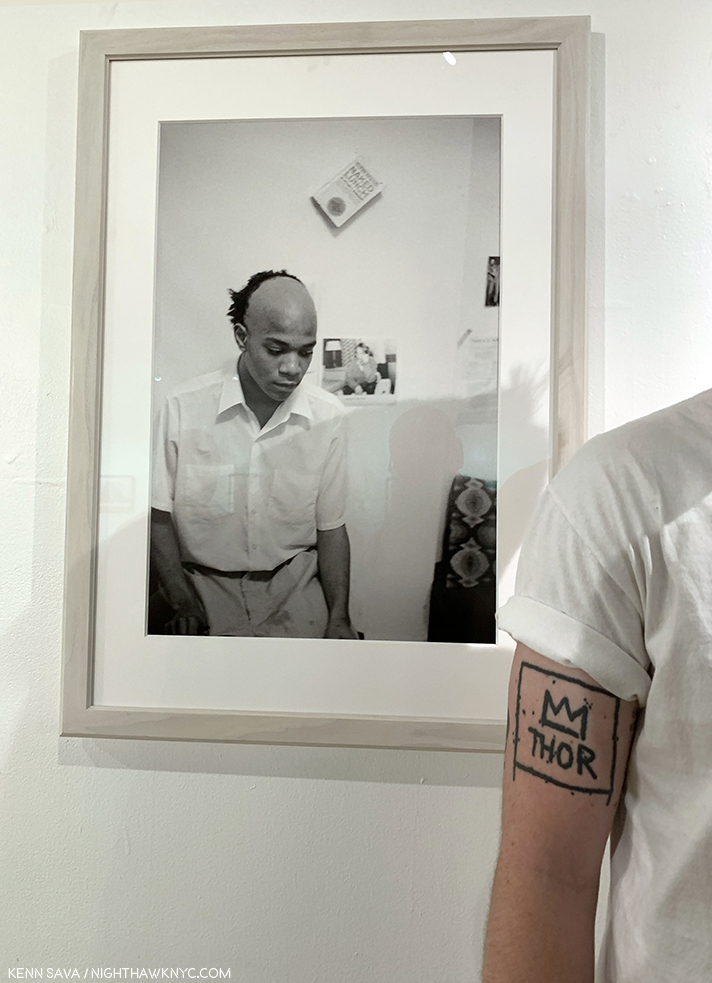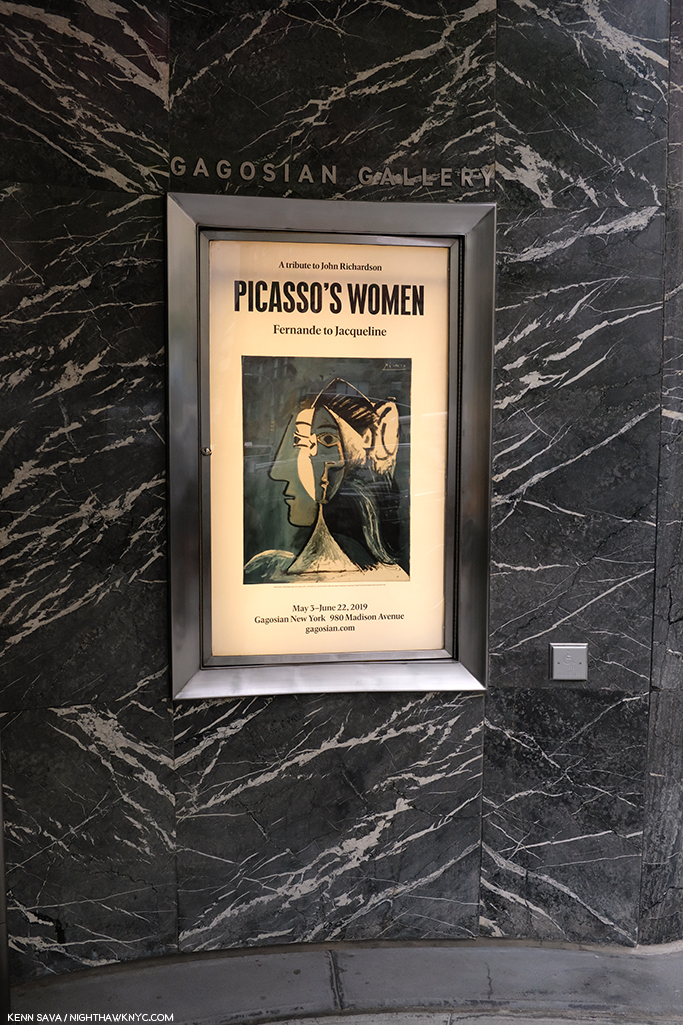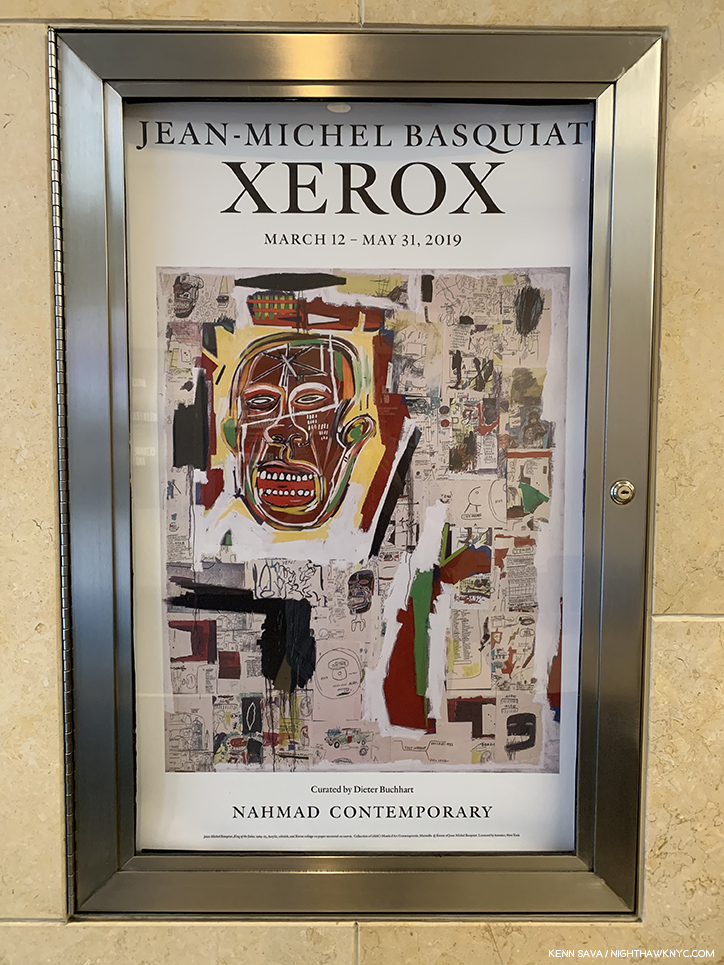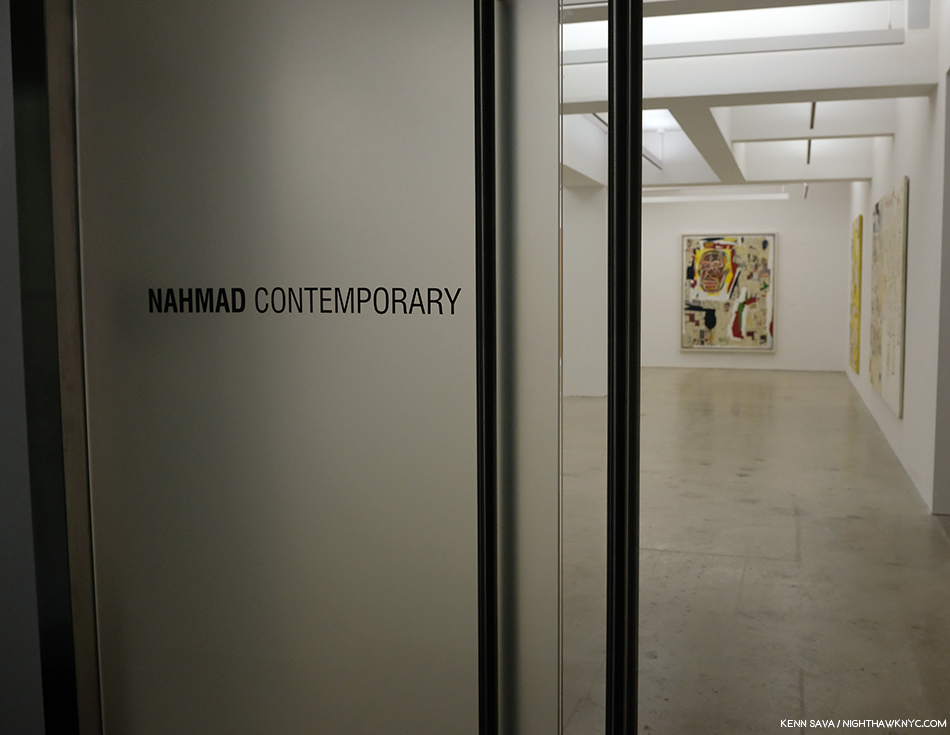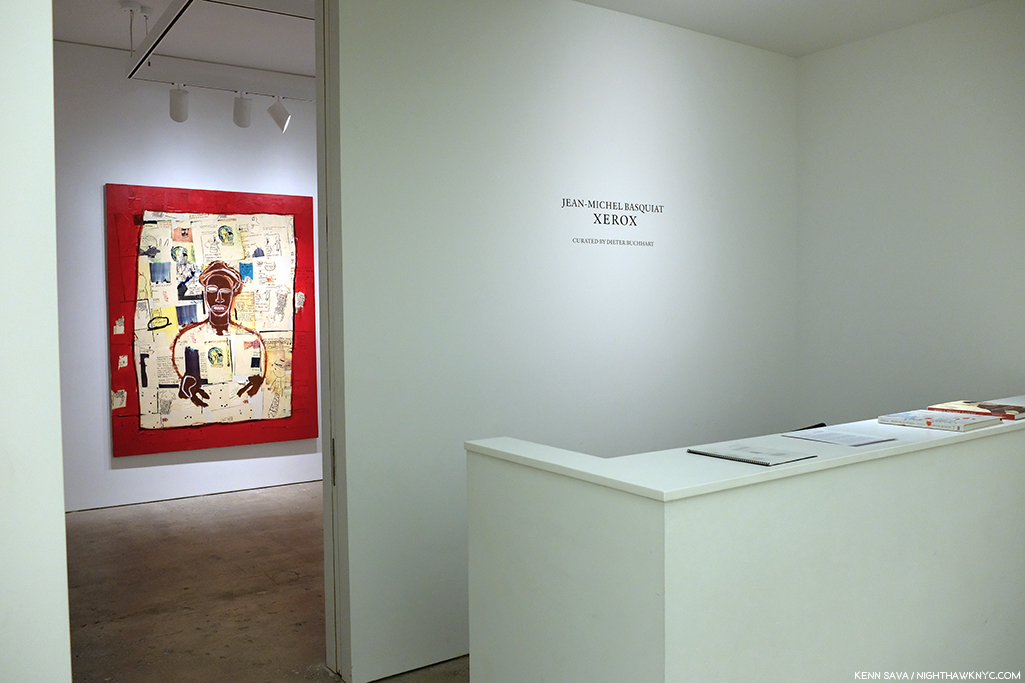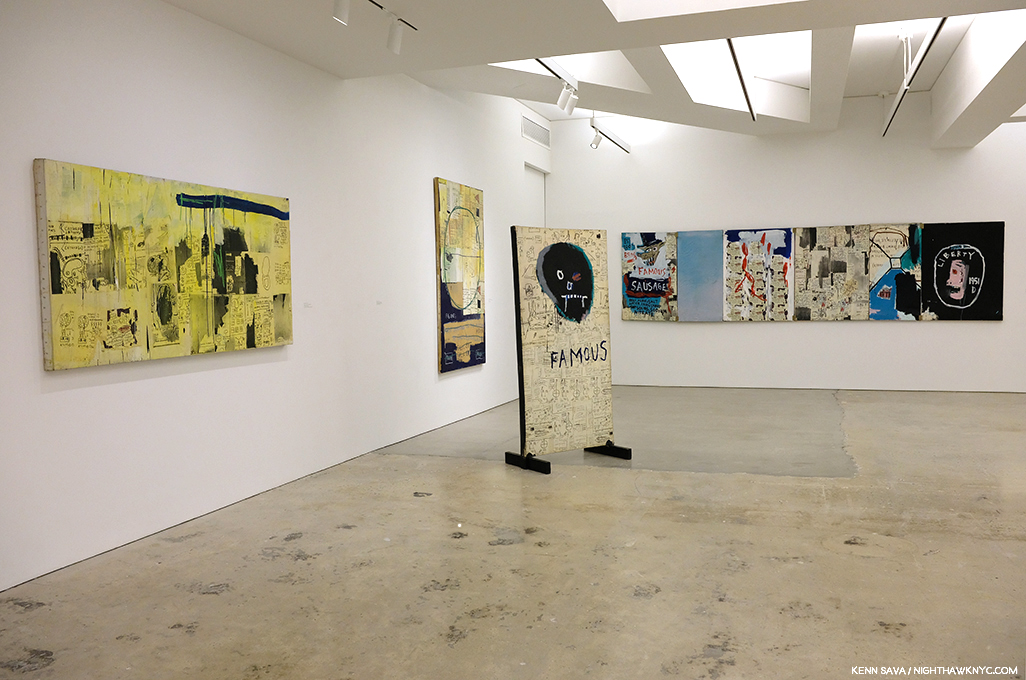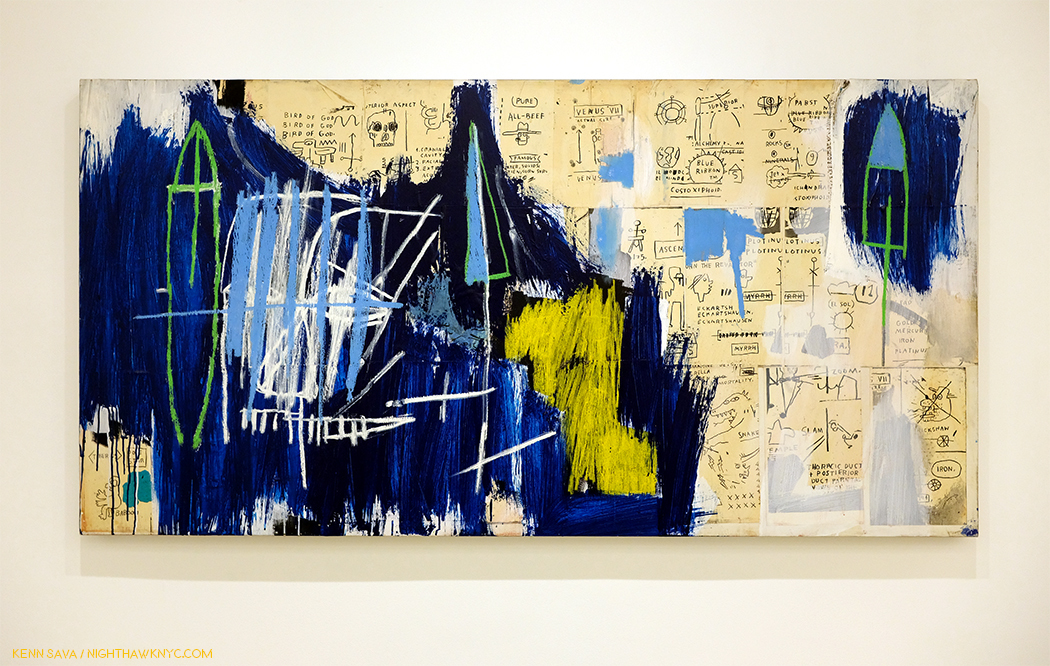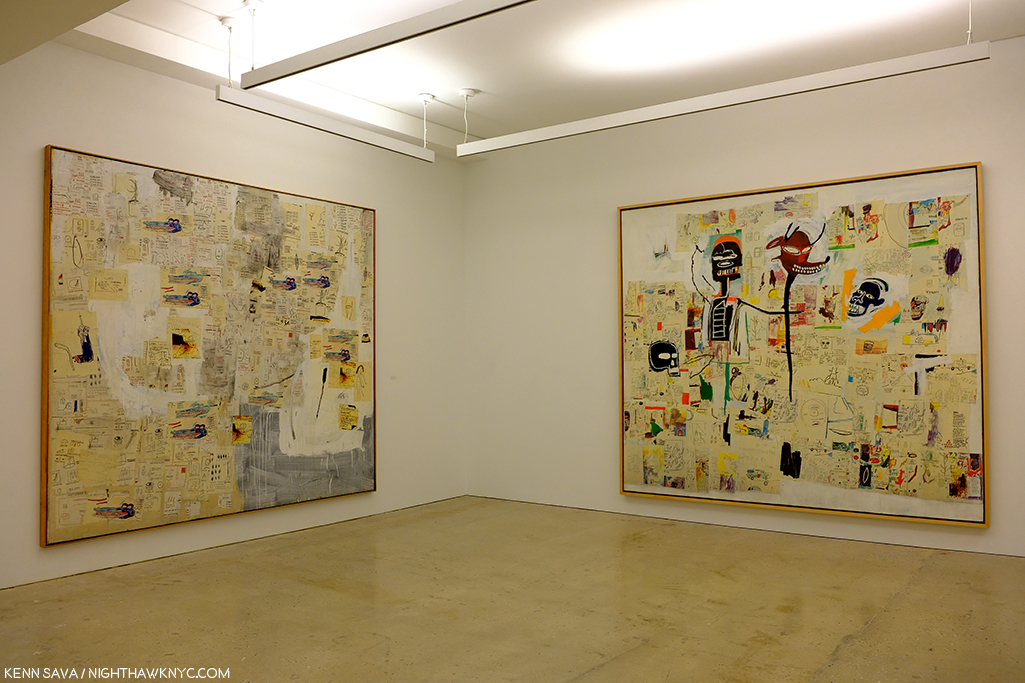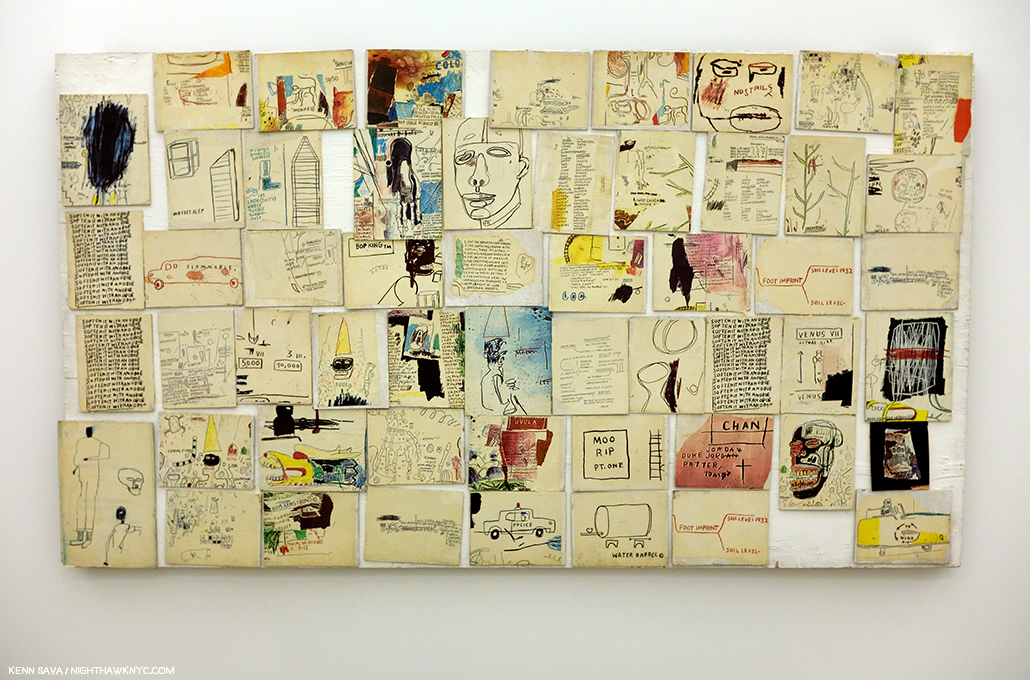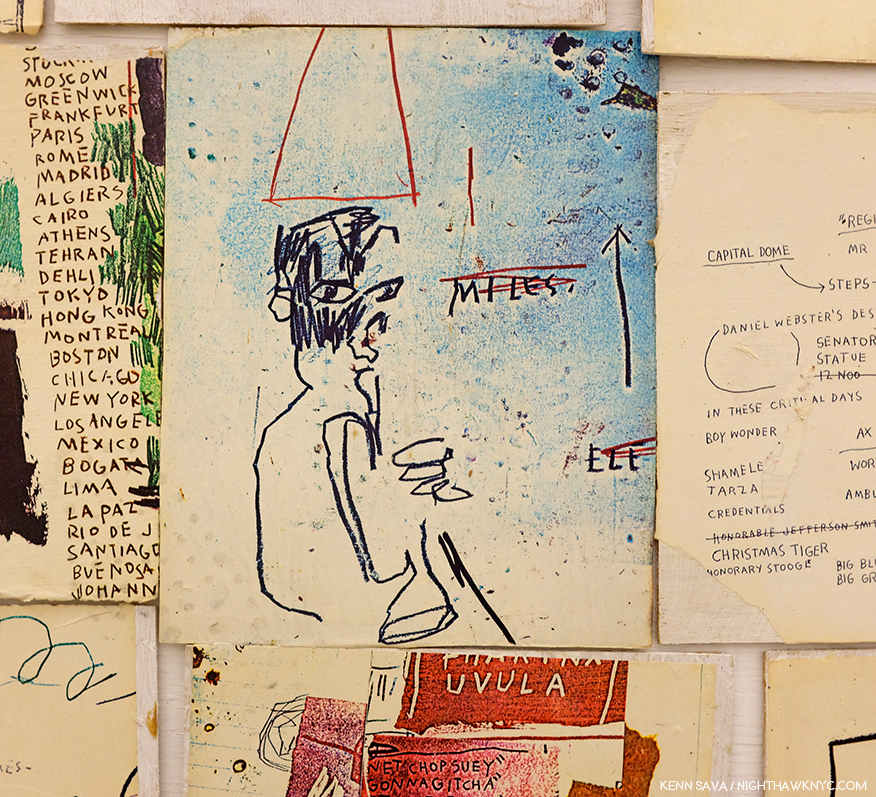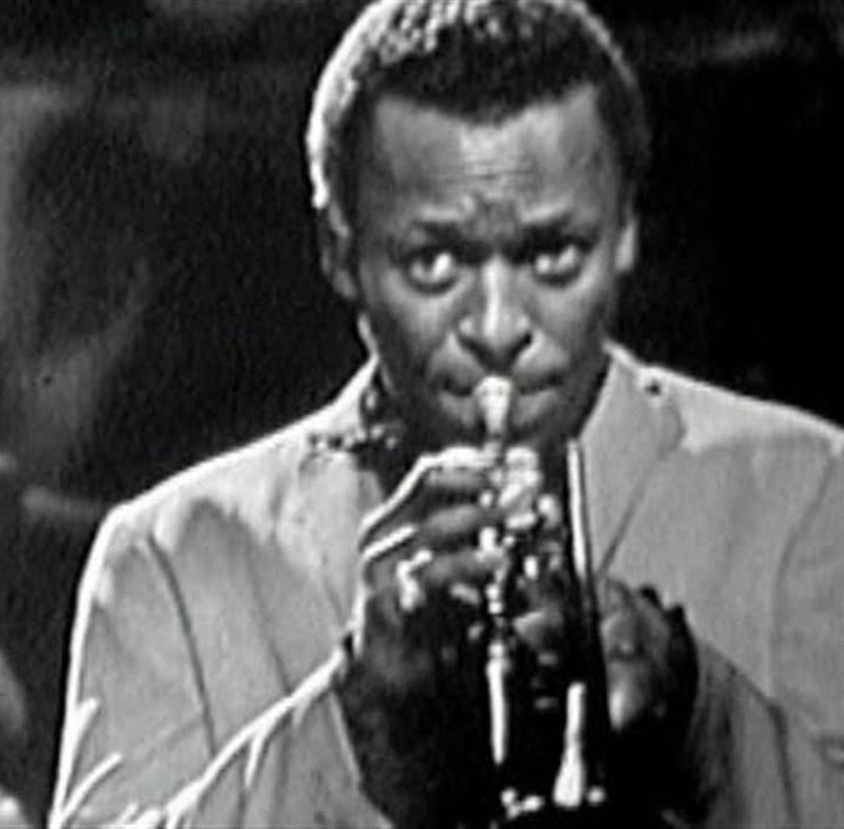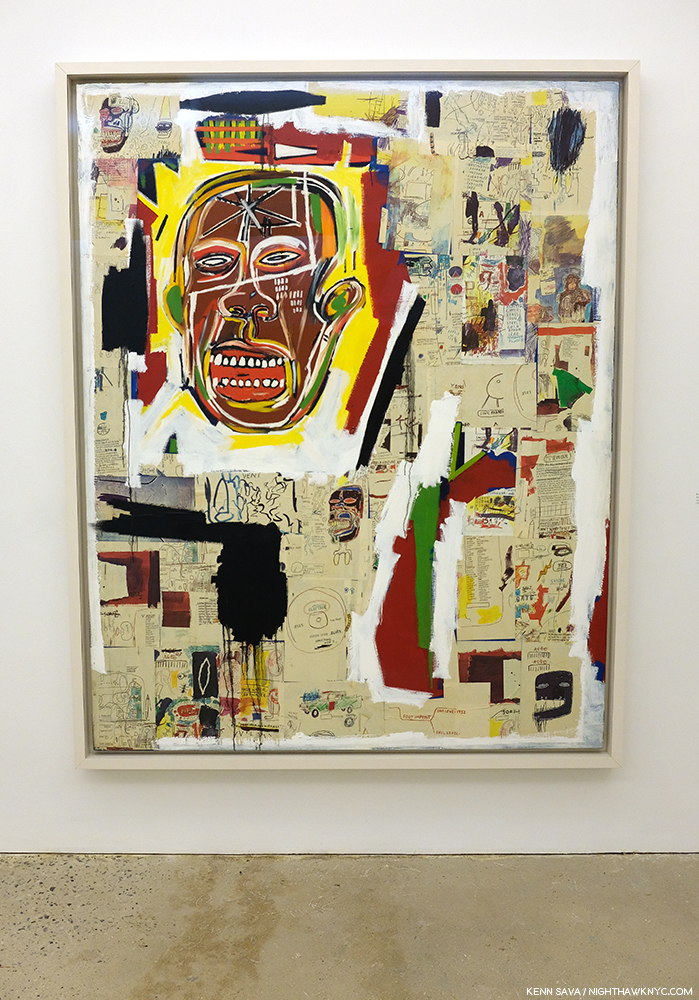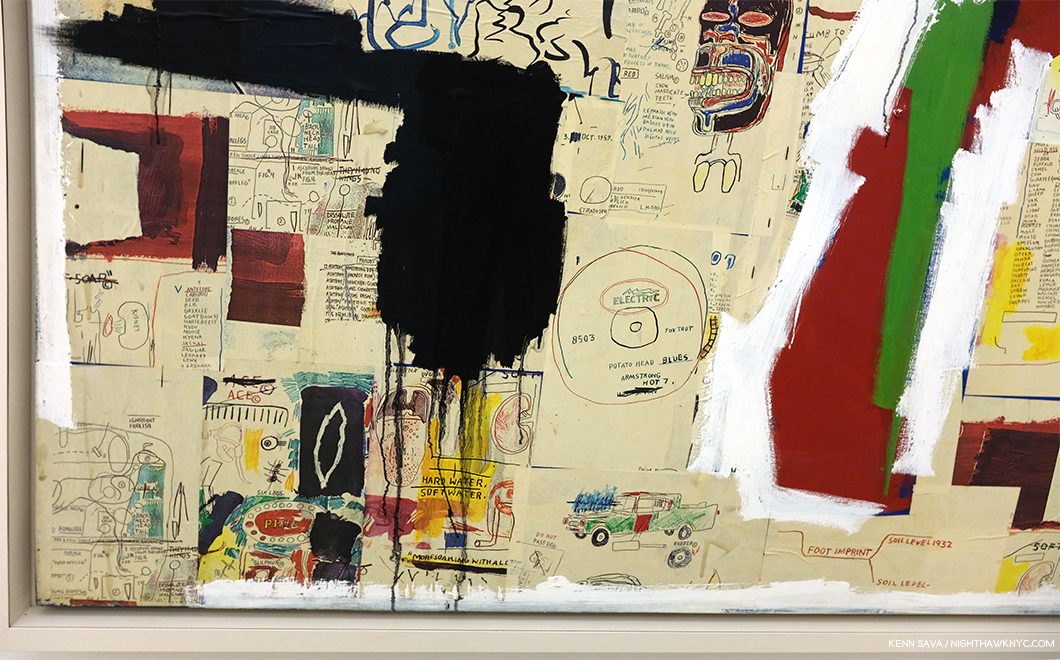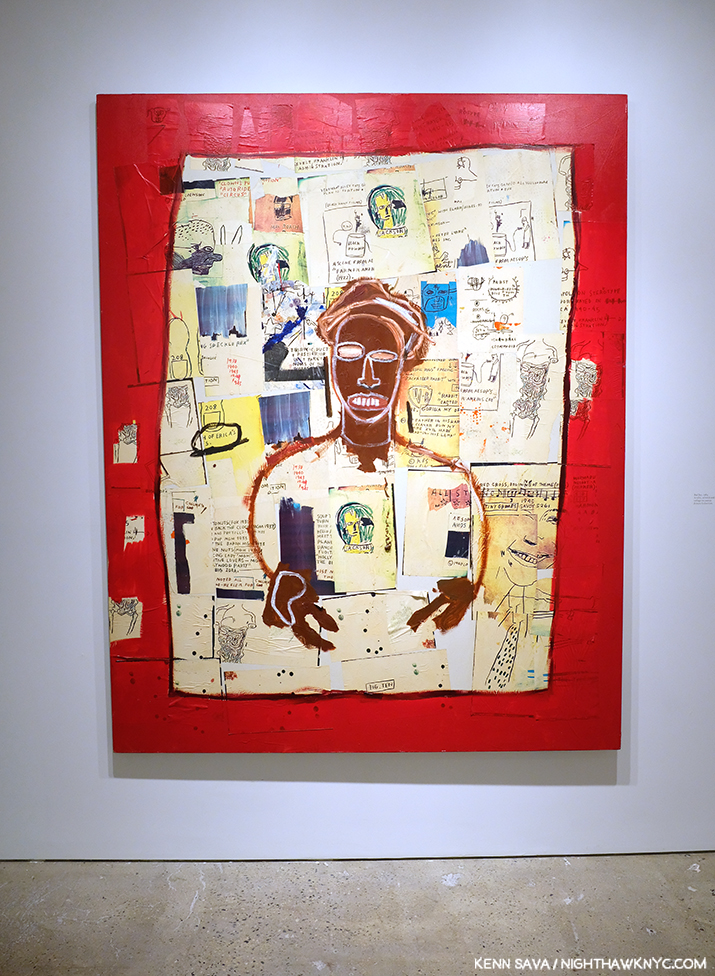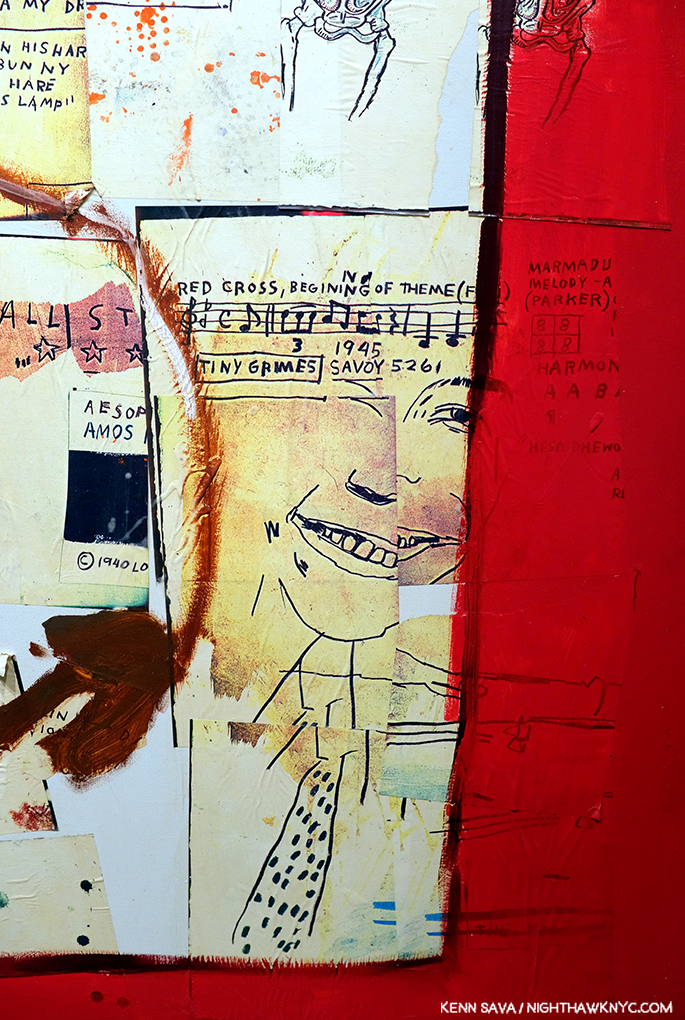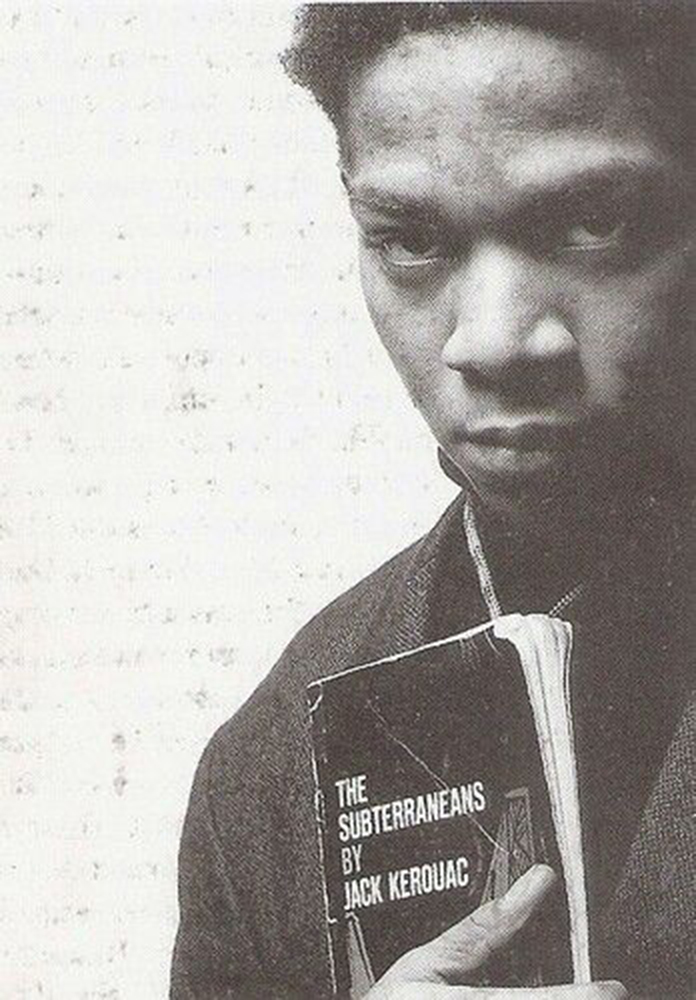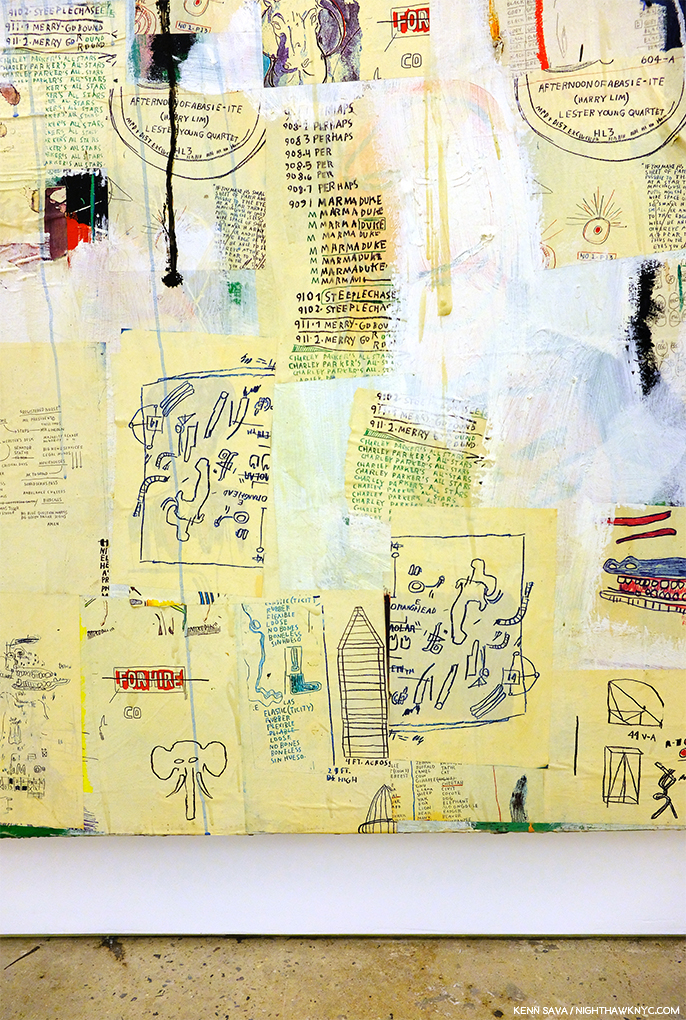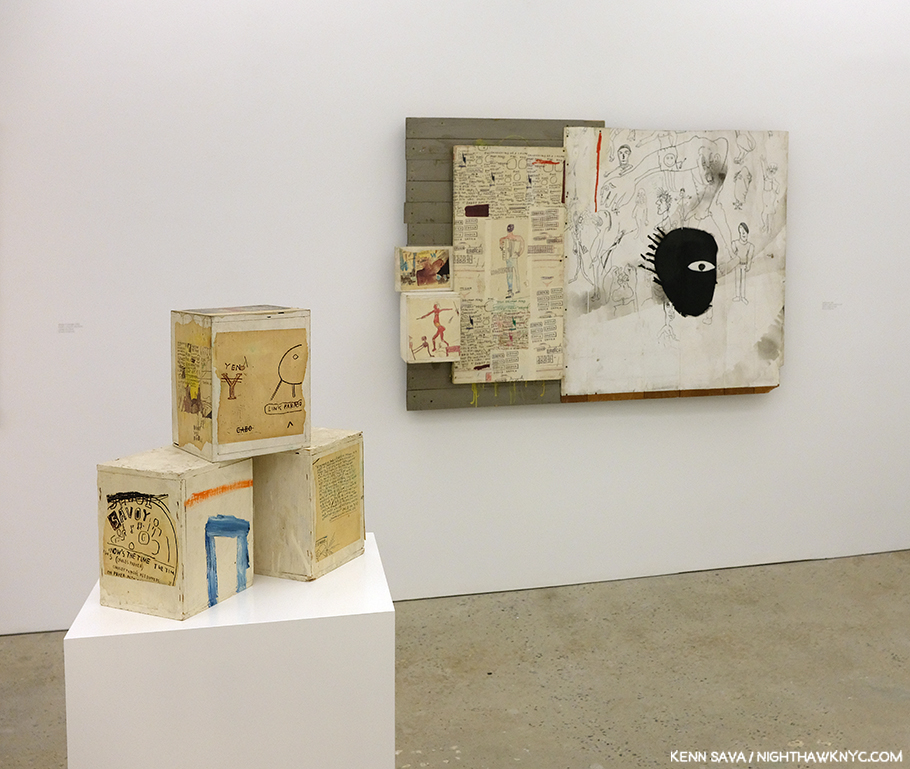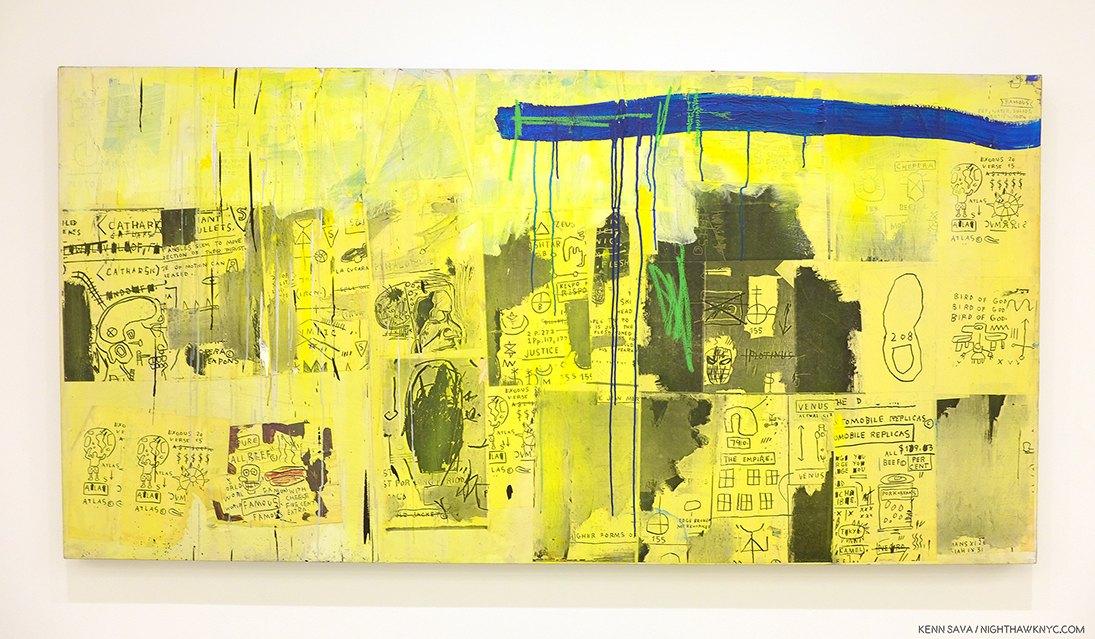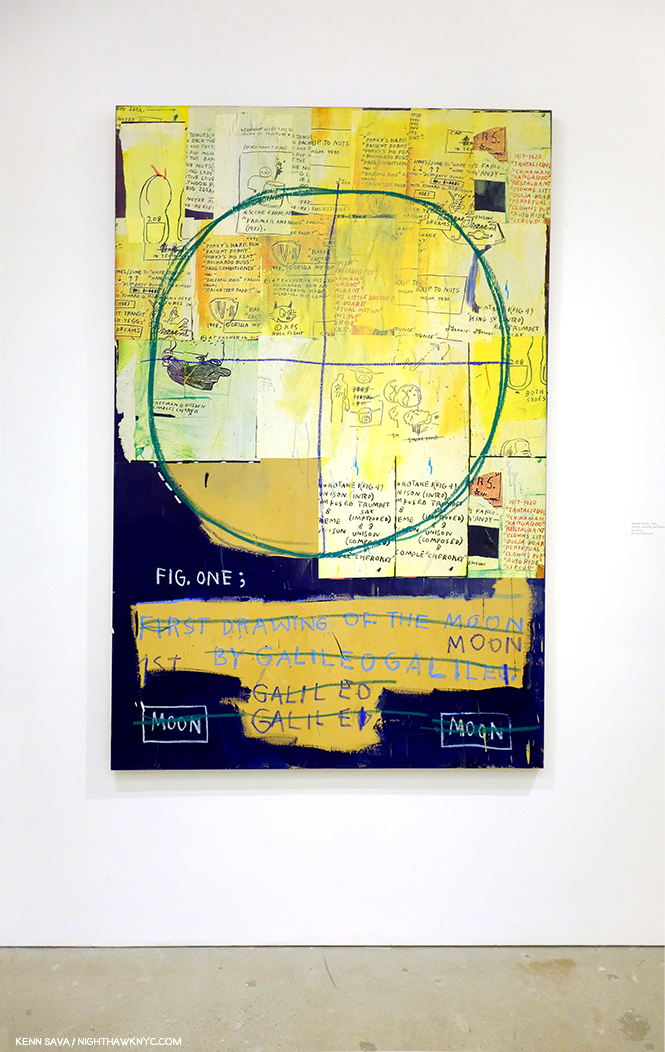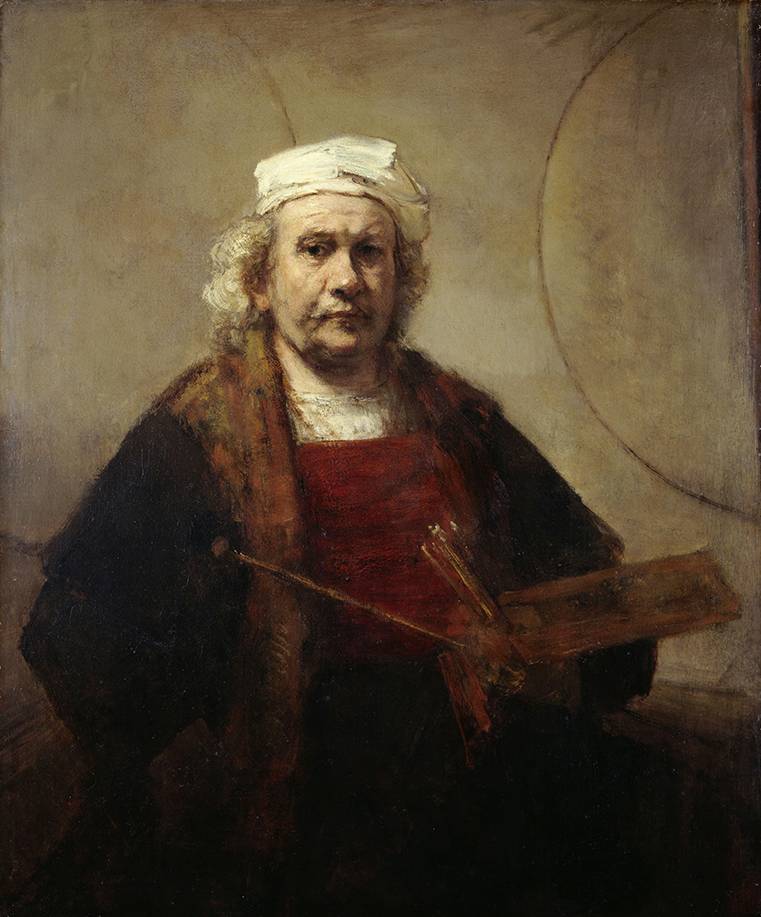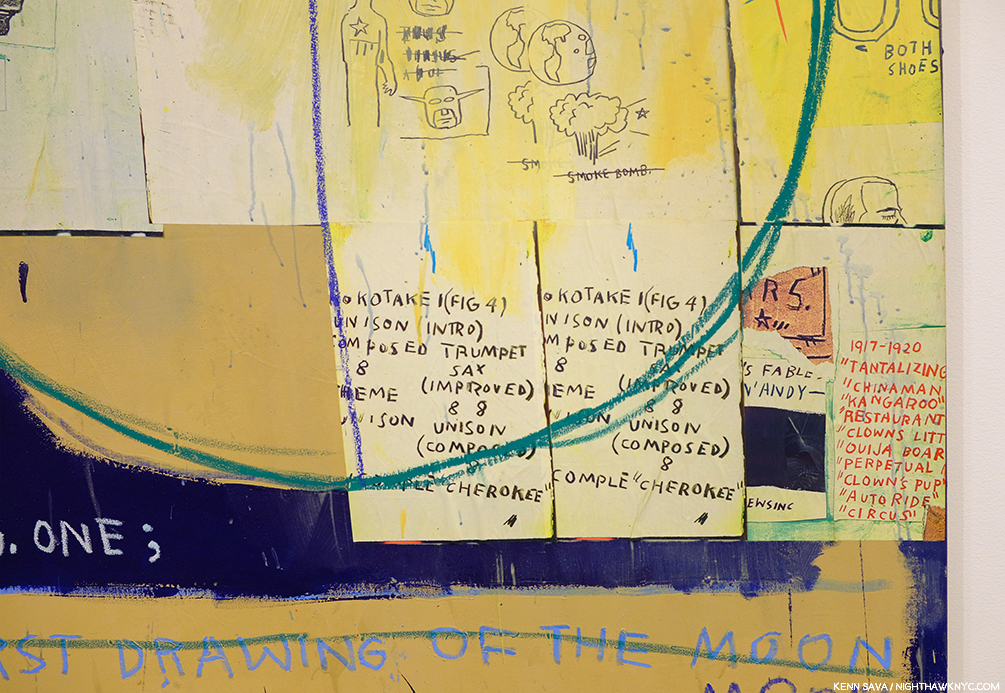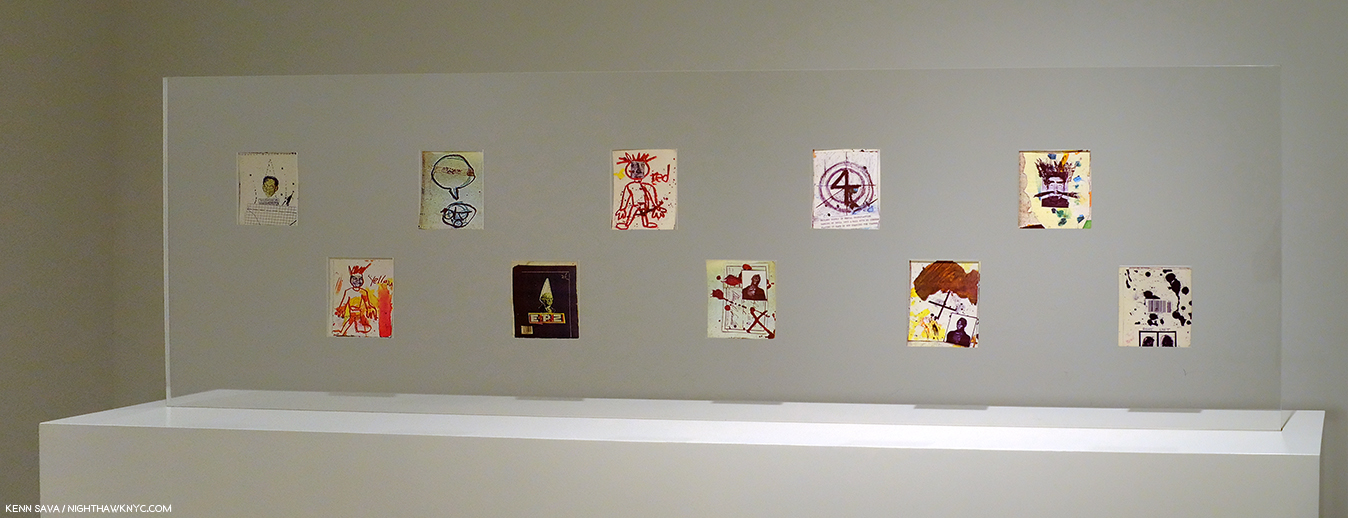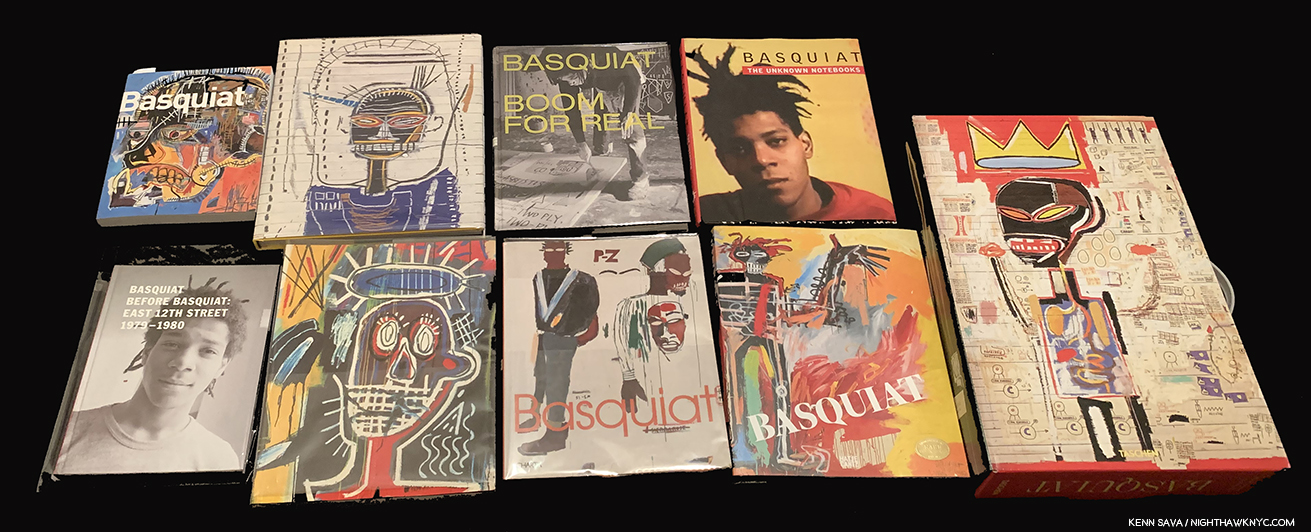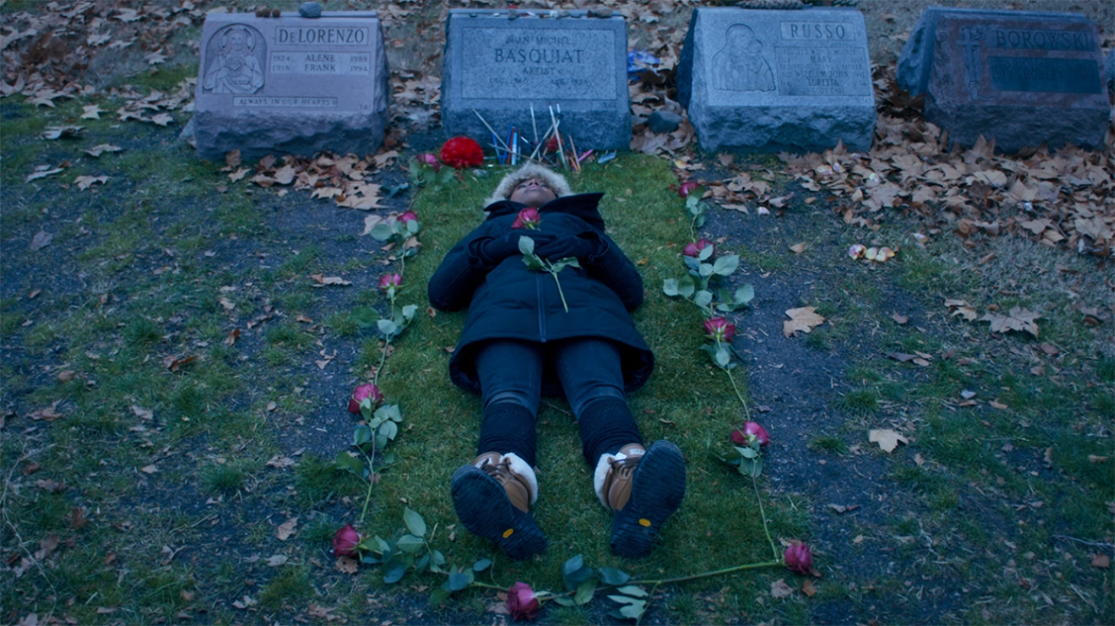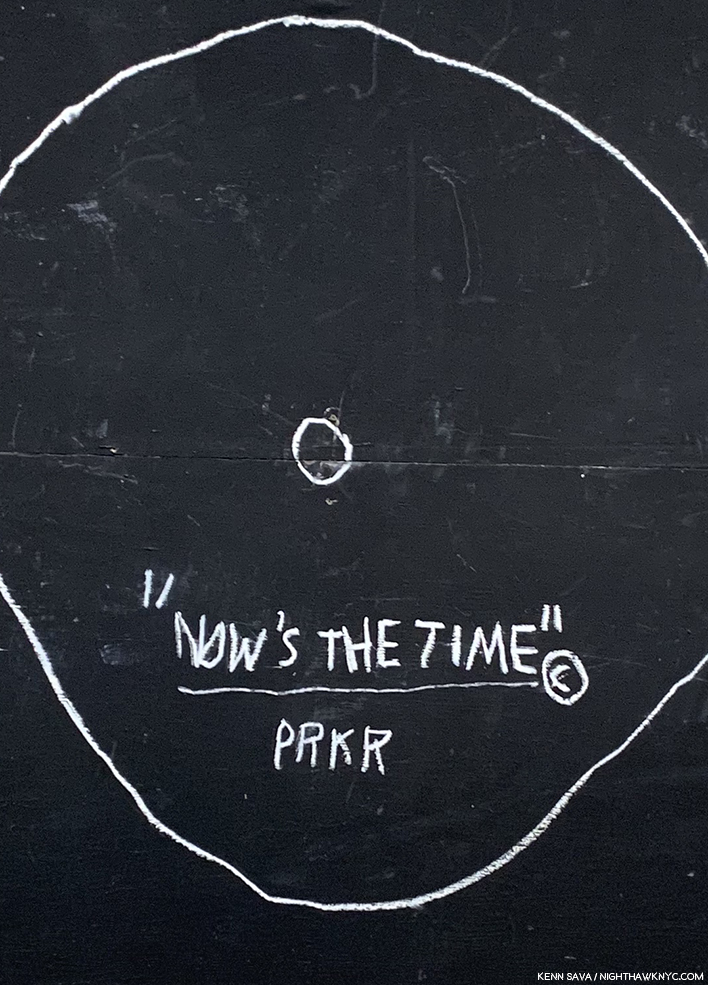This site is Free & Ad-Free! If you find this piece worthwhile, please donate via PayPal to support it & independent Art writing. You can also support it by buying Art & books! Details at the end. Thank you.
Written & Photographed by Kenn Sava
Part 2 of my look at Jean-Michel Basquiat: King Pleasure also includes Jean-Michel Basquiat: Art & Objecthood at Nahmad Contemporary. Part 1 is here.
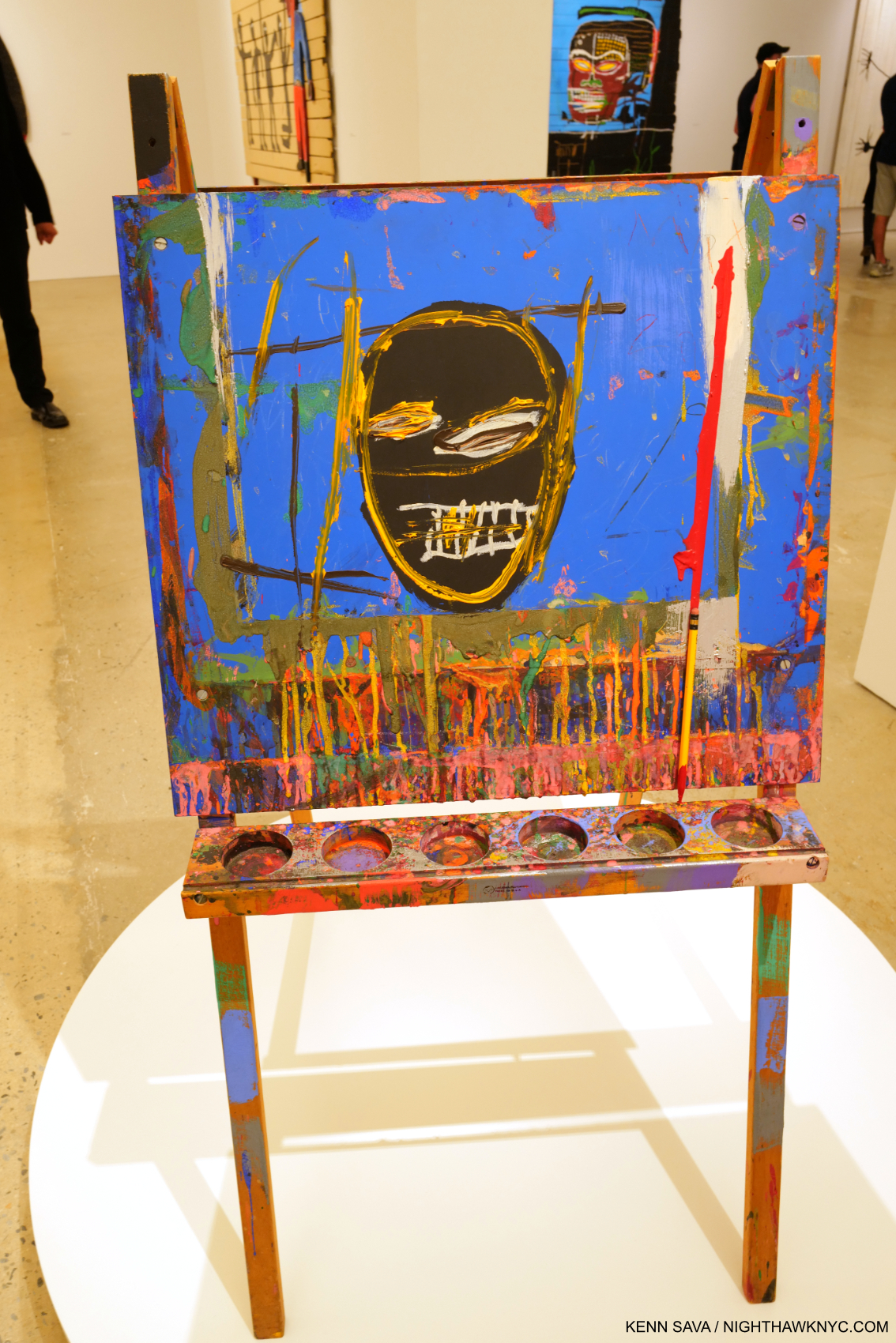
Untitled (Easel), 1983, Acrylic, oil, chalk, and oilstick on wood easel. Seen at Jean-Michel Basquiat: Art & Objecthood at Nahmad Contemporary.
When I did finally leave Jean-Michel Basquiat: King Pleasure (J-MB: KP henceforth), I began to wonder about it. Today, December 22, 2022 (the date I am publishing this), had he lived, Jean-Michel (who I will refer to as J-MB) would be celebrating his 62nd birthday, and very possibly still creating Art in mid-career! In thinking about J-MB’s Art, his life and early death, two figures repeatedly come to my mind.
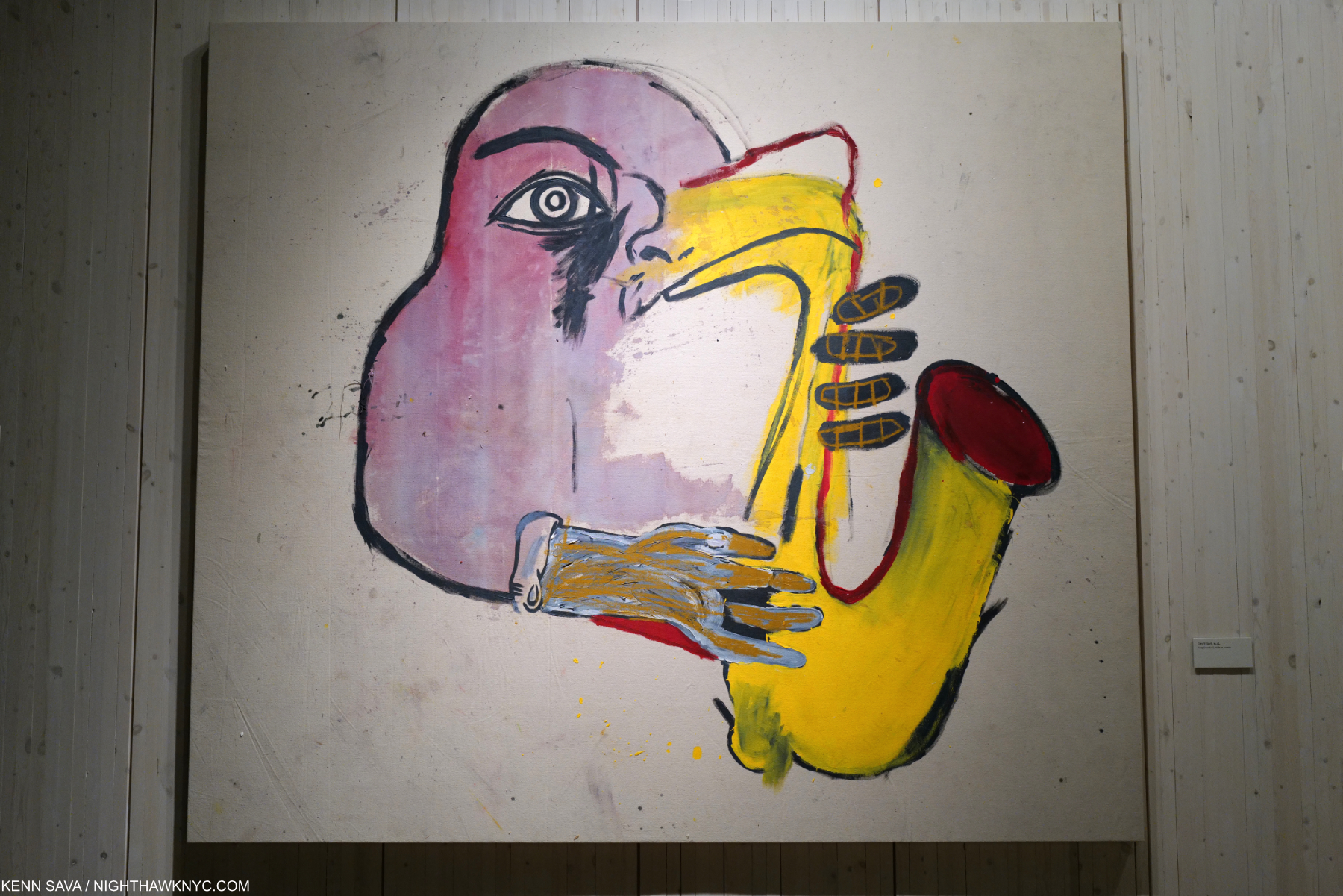
Untitled, n.d., Acrylic and oil stick on canvas. Is this Charlie Parker? The figure’s mouth/nose seems to morph Into the mouthpiece of the sax, looking almost like a beak. I find the fingers interesting. It almost looks like blood is pulsing through the figure’s right hand. Seen at J-MB:KP.
First, his life and Art career mirrors that of one of his great heroes (one of mine, too): Charlie “Bird” Parker (August 29, 1920-March 12, 1955). Consider-
-Both achieved sudden fame with styles never before seen (in J-MB’s case) or heard (in Bird’s).
-Both lived high on the hog only to drink and/or drug much of their money away.
-Both were hugely influential on much that came after them in Art & Music respectively. Jean-Michel created many Paintings that were inspired by or related to Bird, and some were included in the show. Bird’s style, “Bebop,” took over from Swing by 1944, but its reign at the top of Jazz was fairly short-lived. In 1949, Bird’s former sideman, Miles Davis, created the “cool” style and Jazz changed once again. Still, Bird’s disciples were heard from for decades after his death. Among them was a singer named King Pleasure.
-Both worked for most of their careers in Manhattan.
-At one point, J-MB lived with Alexis Adler right around the corner from where Bird had lived on Avenue B on Tompkins Square Park- a few hundred feet away.
-Both wound up victims of their addictions far too early- Bird at 34 (his death the subject of at least one J-MB Painting), J-MB (December 22, 1960- August 12, 1988) at 27.
-Neither had given much, if any, thought to what would happen to their work after their death. Well, they were still young. As a result, the estates of both were thrown into chaos when they suddenly died.
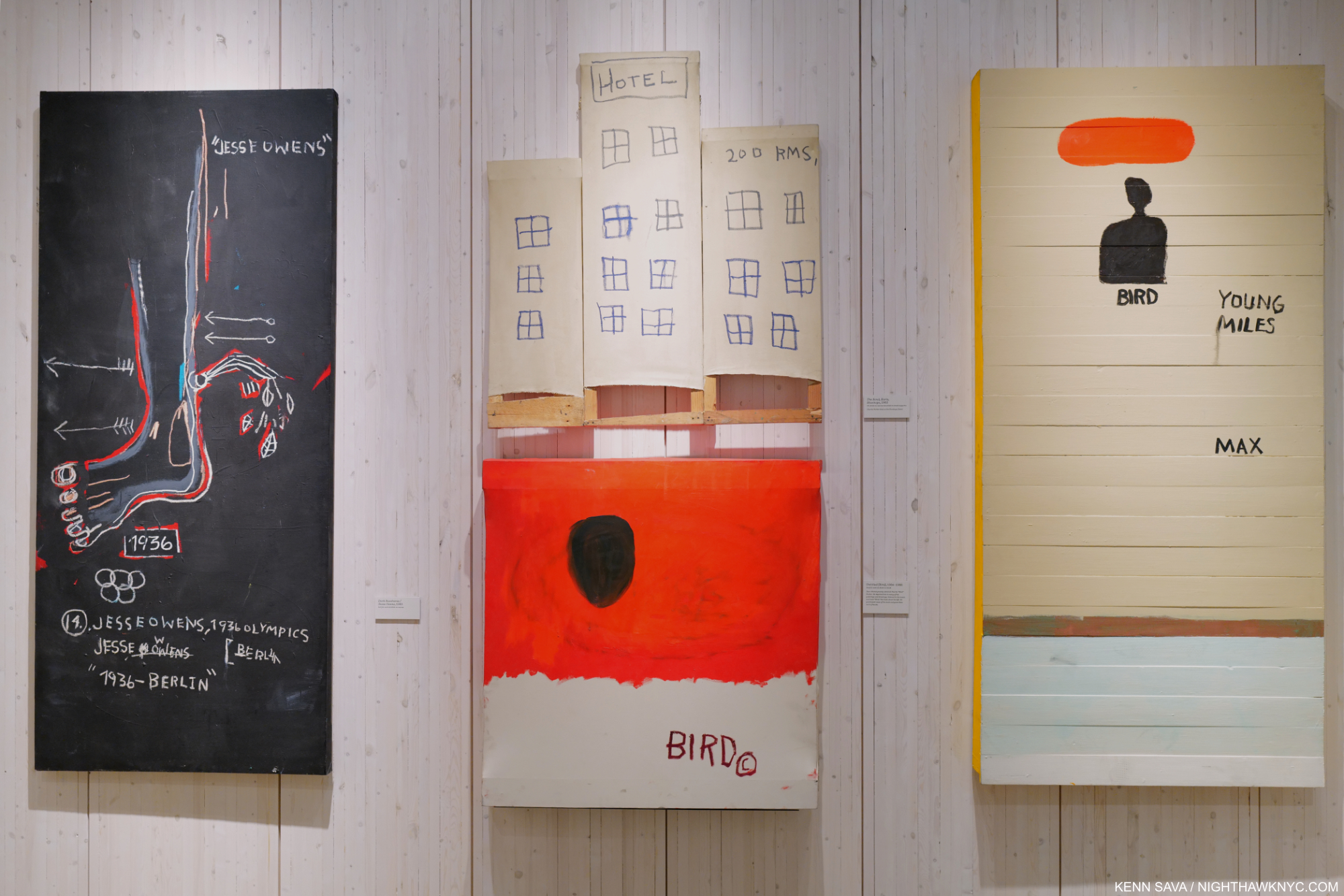
From the ROYALTY gallery- a piece for Jesse Owens, left, and three for Charlie Parker, 2 center and 1, right. When I get past the content, what stuns me about all 4 is how different they are from each other compositionally. In fact, that’s the reaction I have to most of Jean-Michel’s Art- most of his compositions are different- from each other, and from what anyone else has done. I can’t think of another Artist I could say that about1 Seen at J-MB:KP.
-Both were largely self-taught.
-Both worked as Artists for about a decade.
-Both were extraordinarily prolific.
-Both had another major Artist as a close friend. (Andy Warhol for J-MB, Paul Gauguin for Vincent.)
-Both had relationships with their fathers that were less than they wanted them to be. Both struggled continually to try and improve them (according to Phoebe Hoban’s biography, and John Lurie’s Autobiography, in J-MB’s case.)
-Both died young. Vincent at 37, Jean-Michel at 27.
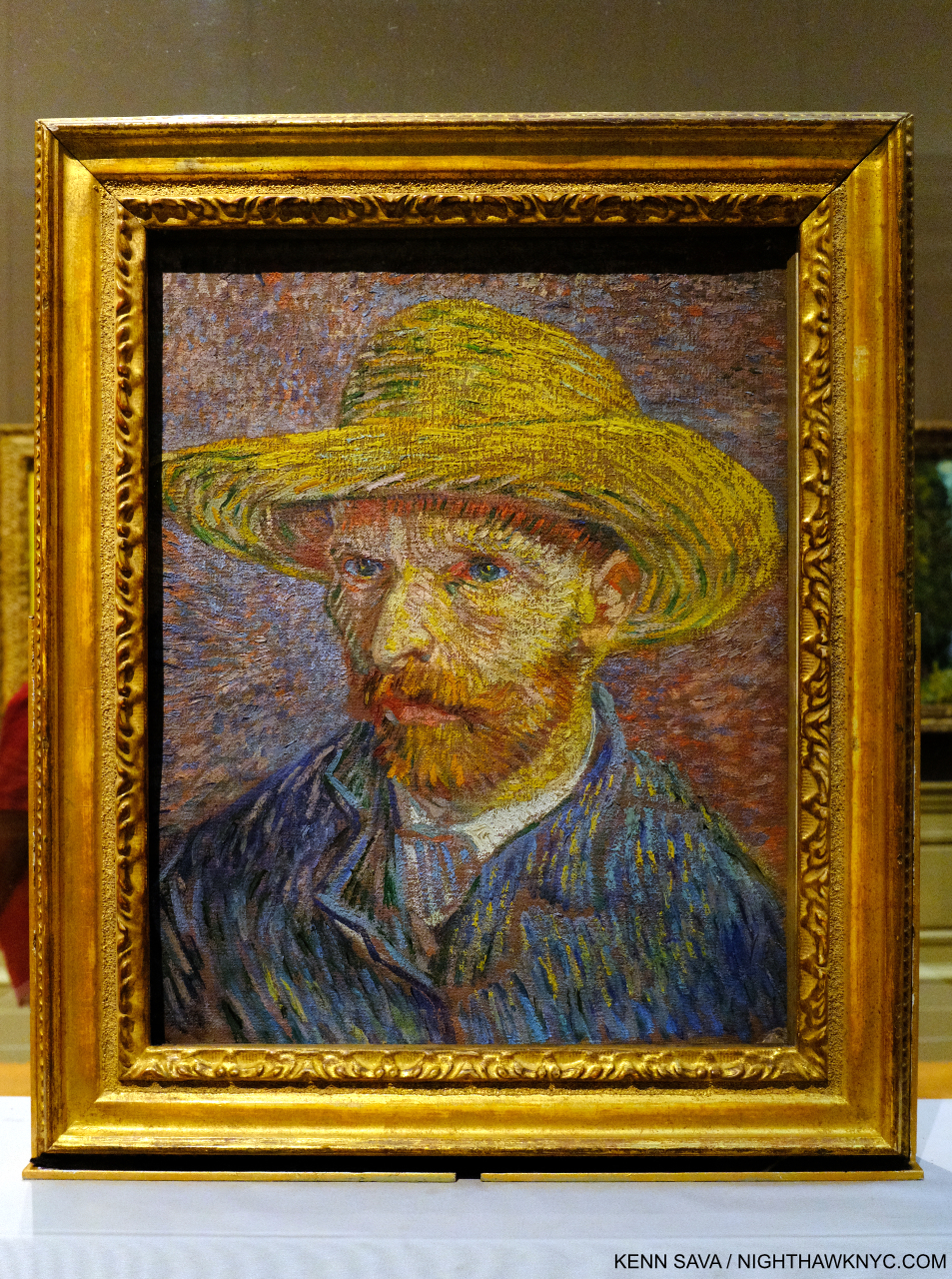
Vincent van Gogh, Self-Portrait with a Straw Hat, 1887. Seen at The Met. From my 2018 piece on Vincent, here.
Then, there are some major differences-
-Unlike J-MB, Vincent never used words in his Art. He did, however, create one of the most extraordinary bodies of letters any Artist has penned.
-Jean-Michel sold A LOT of his Art during his lifetime. He was one of the Artists who inspired the “boom” in Contemporary Art in the 1980s.
-Vincent sold 1 Painting by some accounts, or only a few, during his lifetime.
As I thought about the show, this is a key distinction.
After Vincent died on July 29, 1890, with his beloved brother, Theo (an Art dealer), to follow 6 months later on January 25, 1891, ALL of his work was left to his sister-in-law. She sold some of it, but most of it remained with her. As a result, decades later, there was enough to found and open the Van Gogh Museum in Amsterdam. A lot of Art and ephemera remained when J-MB died on August 12, 1988. This all went to his family. However, by this point, most of the major pieces had been sold to collectors around the world by his string of dealers. The museums passed on his work while he lived, and since his death have been priced out of the market IF they have changed their minds about it. It would come as a donation if they were to acquire any at this point.
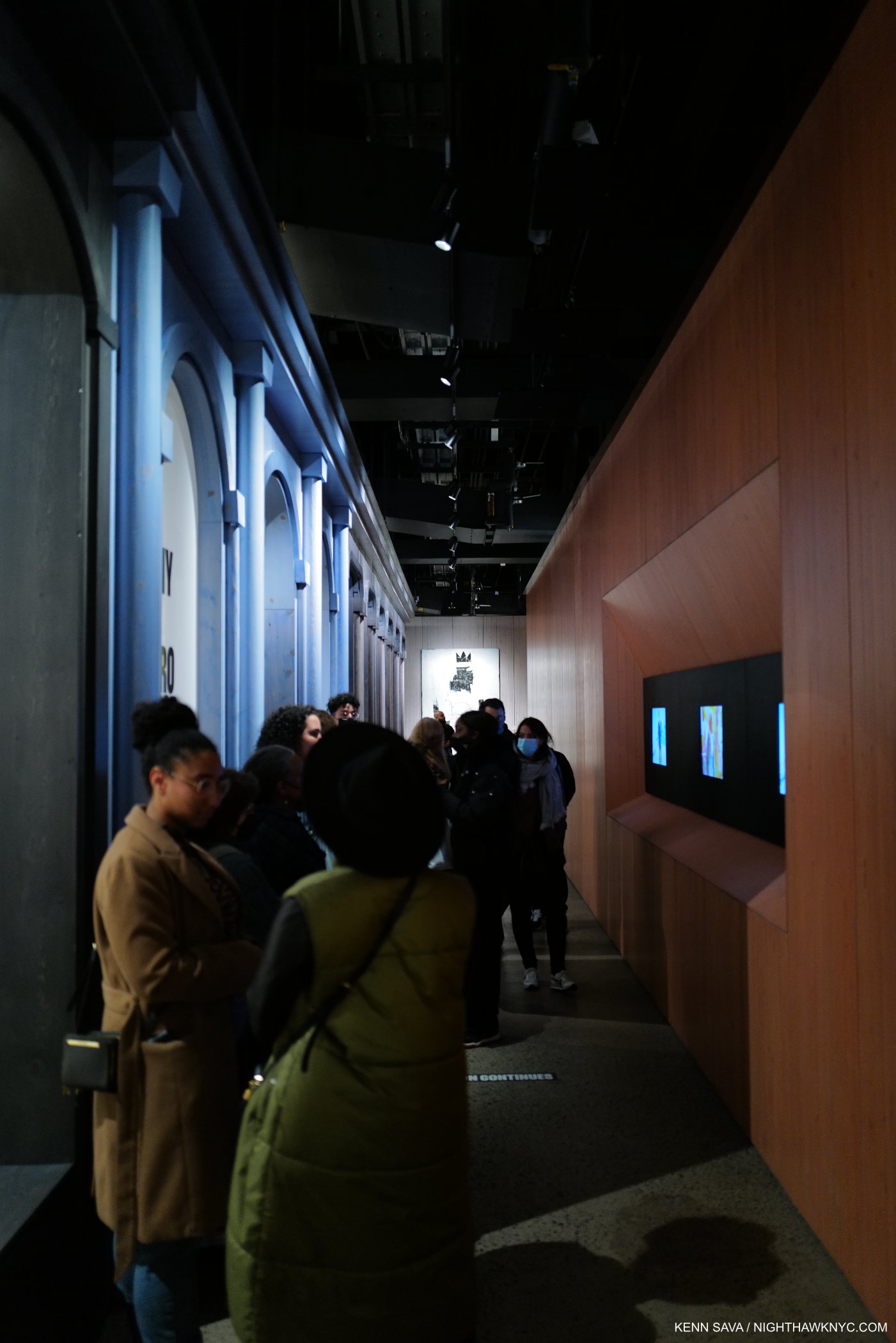
Installation view of the allway at J-MB:KP leading to galleries along the left and videos along the right.
As I walked through it, I wondered if Jean-Michel Basquiat: King Pleasure was the family’s attempt to see if their holdings could be turned into a museum. A trial balloon. In my view, it’s not strong enough to be viable on a long-term basis as it is.
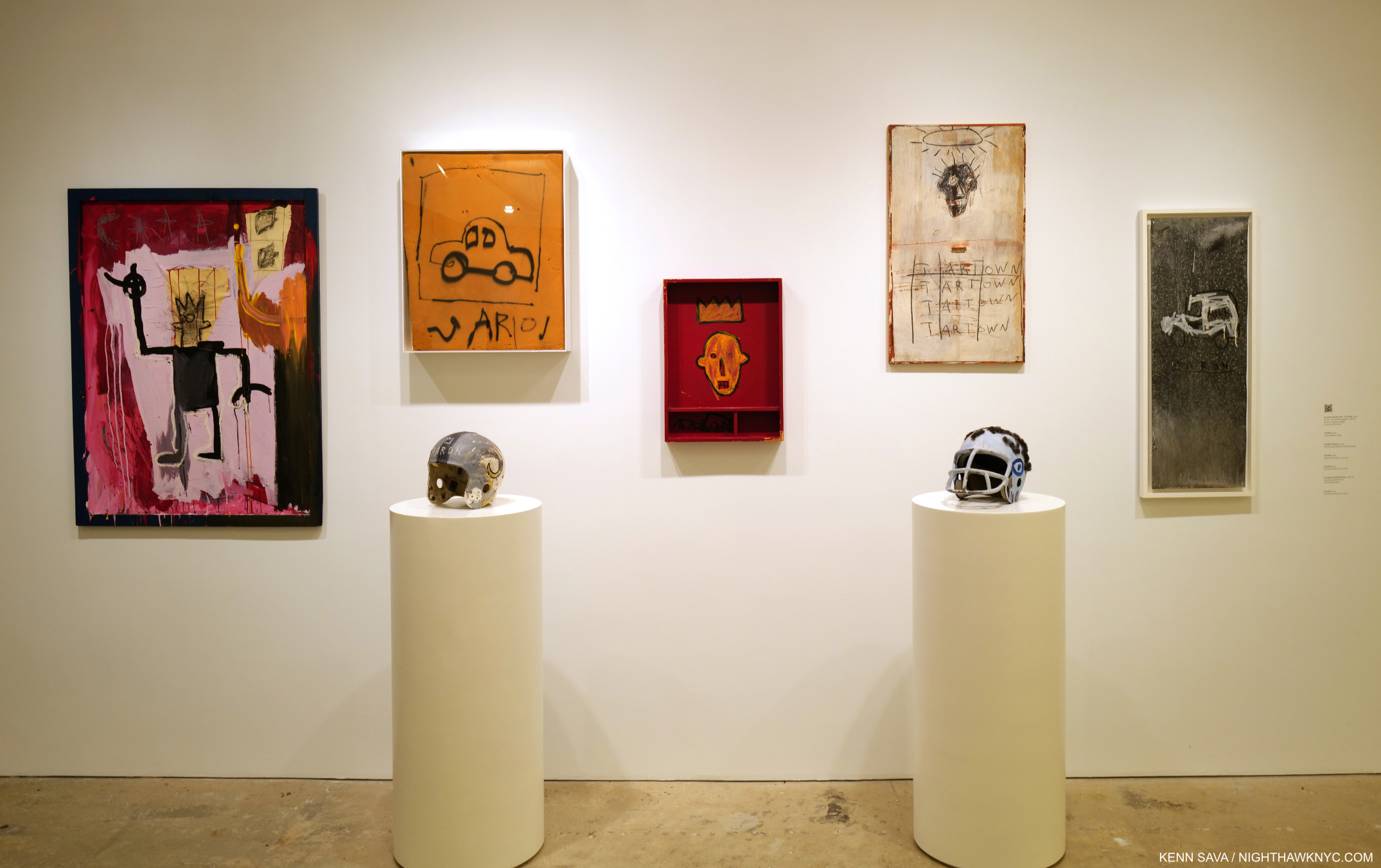
Partial installation view of Jean-Michel Basquiat: Art & Objecthood at Nahmad Contemporary, June 6, 2022..
It should be noted that at the time J-MB:KP was up, there was another major Basquiat show going on in NYC- Jean-Michel Basquiat: Art & Objecthood at Nahmad uptown, which struck me as both important and very strong. It is pretty remarkable that there was a show with 200 never-before-seen pieces up at the same time as ANOTHER show with 30 or so strong works- all by an Artist who’s career lasted about a decade!
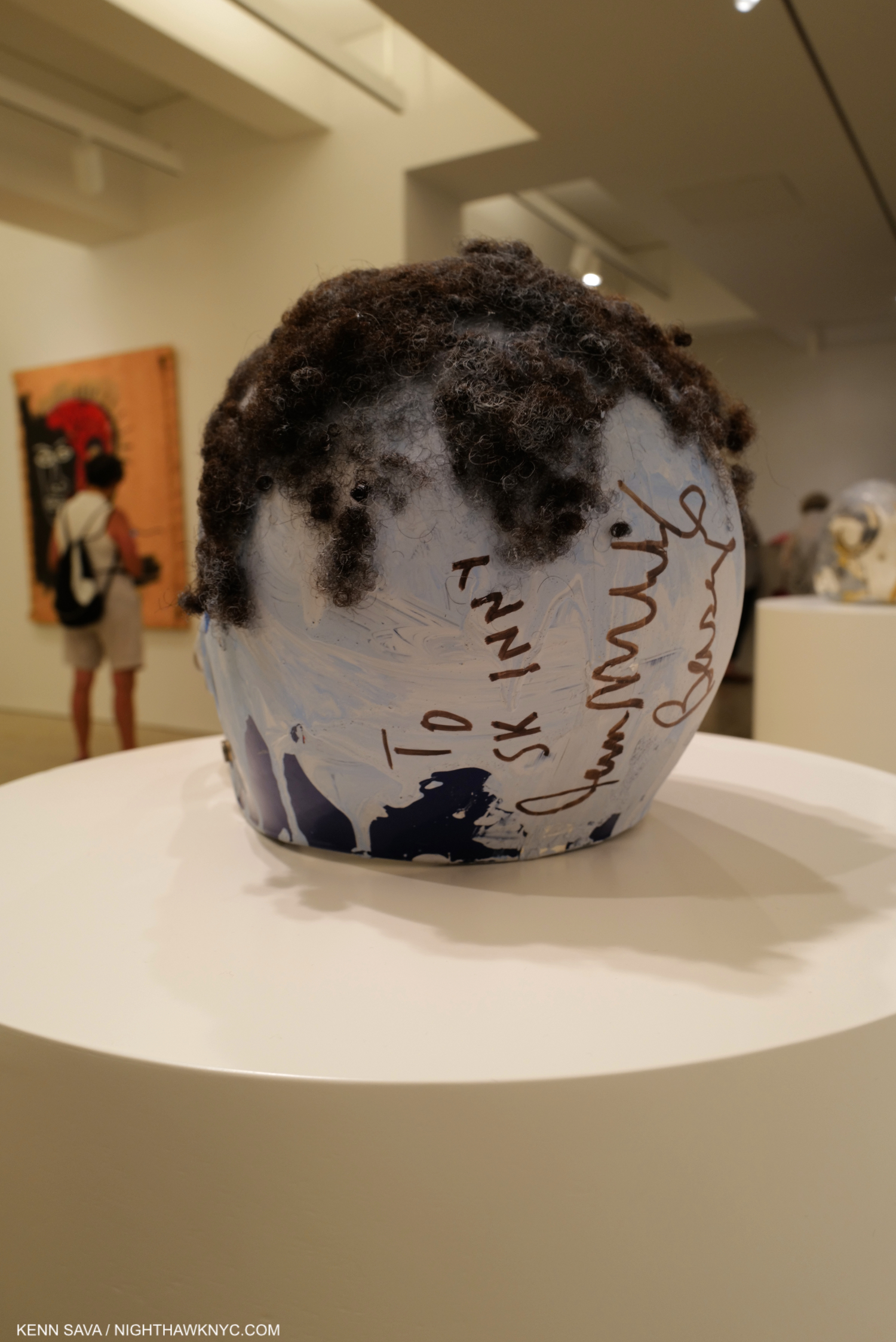
Untitled (Football Helmet), 1981-4, Acrylic and human hair, Jean-Michel Basquiat’s?, and his signature, on the back of the Football Helmet piece seen on the right in the previous picture. Seen at Jean-Michel Basquiat: Art & Objecthood at Nahmad Contemporary. While there are Photos of J-MB wearing the other helmet, that has AARON Painted on the crown, I have not seen one of him wearing this one.
There was no checklist available for the Nahmad show. Though the family is listed among those involved in it, I don’t know if they lent any works, and if so, which. It seems fair to say the family owns more work than we see in J-MB:KP and this may include some important pieces.
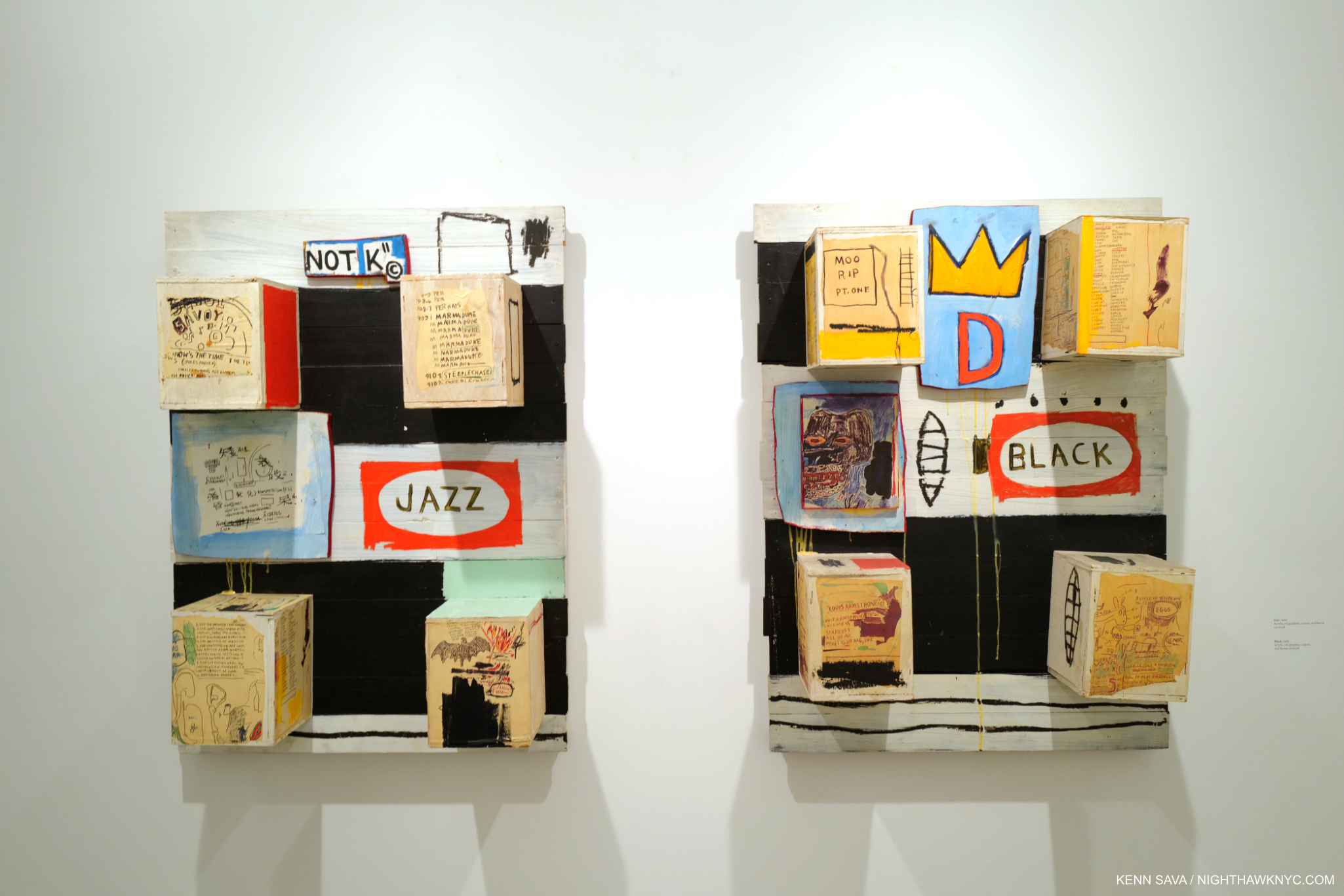
Jazz, left, and Black, right, both 1986 and Oil, graphite, crayon, and Xerox on wood, look like figures with shadow legs on the wall. Since they are Painted on all sides, it looks like they also be displayed laid flat on a table. Seen at Jean-Michel Basquiat: Art & Objecthood at Nahmad Contemporary.
Still, based on that assumption, my feeling is a Basquiat museum is not imminent. Will a few major collectors get together with the family and combine forces to open one? So far, 34 years on, they haven’t. The shows that have been mounted have been largely independent. So, Basquiat’s King Pleasure, the Painting (shown in Part 1), is a bit emblematic. If J-MB had been able to hold on to his most important Art (and I’m not saying his King Pleasure is among them), maybe there would be a Basquiat museum now. But, like most Artists, he needed the money from the sale of his Art, like King Pleasure, to survive.
It’s pretty rare in Art history post-1800 that an Artist’s work winds up virtually exclusively in private hands. Until J-MB, most Artist’s work was divided between collectors and institutions/museums, with the latter winding up with the bulk of it. For Artists who were beneath the radar of the public during their lifetimes, like Hilma af Klint, or Vincent, their work stayed with them up through their passing. Other Artists, like Edvard Munch, selectively retained pieces which enabled him to make a very large gift upon his death to the city of Oslo, who created the Munch Museum. Today, it’s common for Artists to hold on to at least some of what they create, but this didn’t begin until after Jean-Michel’s passing, when Artist became more aware and more Art business savvy.
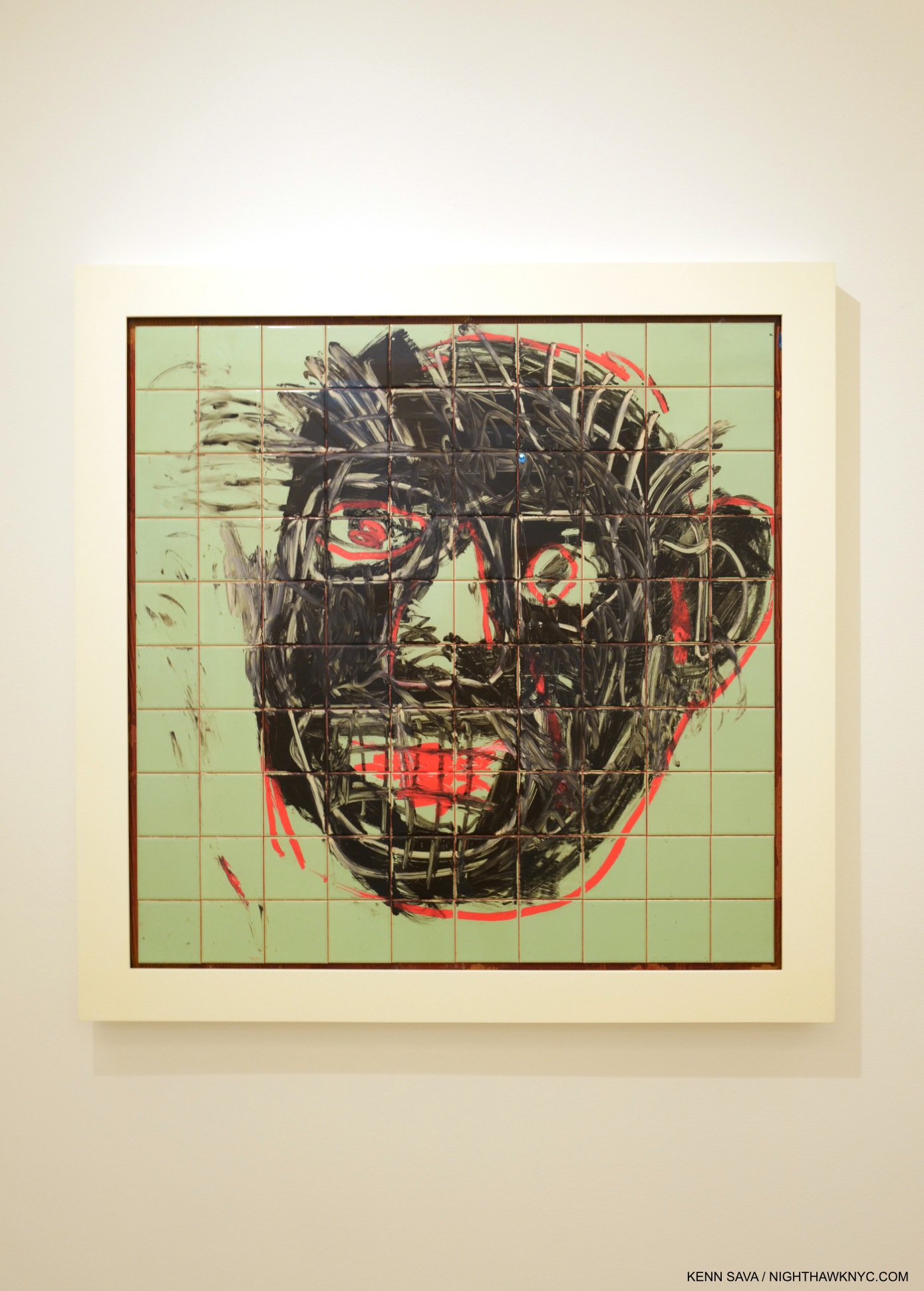
Brett as Negro, 1982, Acrylic on tiling glued on plywood. Seen at Jean-Michel Basquiat: Art & Objecthood at Nahmad Contemporary.
So, that begs the question- Where to with the Art of Jean-Michel Basquiat in 2023, and beyond?
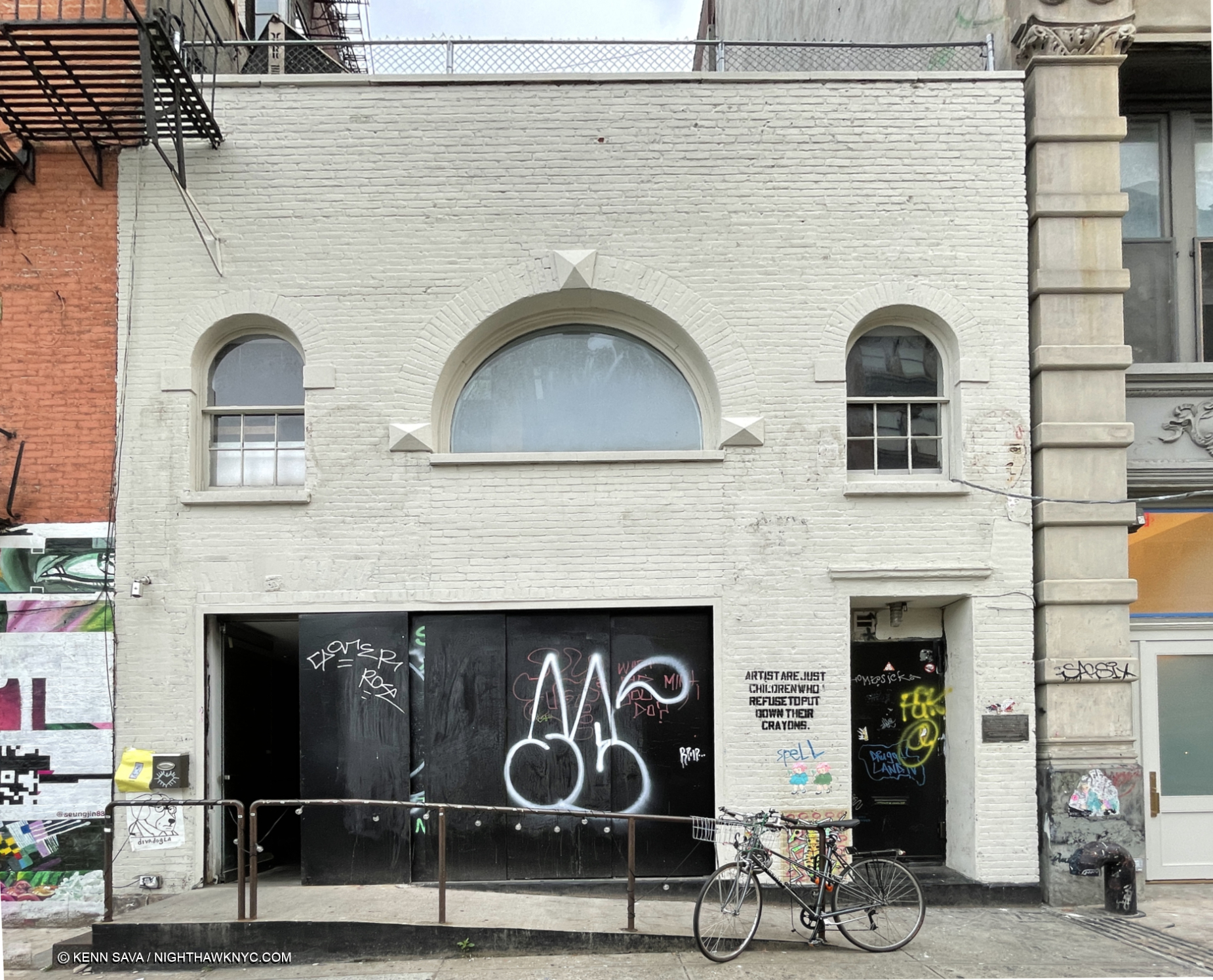
J-MB’s former home & studio on Great Jones Street- the real one, where he died on August 12, 1988. That’s probably not his bike out front, though there is one in the show which might have been parked there once. Whenever I’ve been here, I haven’t been able to tell what, if anything, the building is being used for now. Seen in June, 2022.
Going forward, as the original owners age or pass away, like both of his parents who inherited all the work after J-MB’s death, have, it’s only a matter of time before some dispersal begins. Some of it may wind up in museums- IF the museums want it. Think that’s crazy? Consider this- Early on, the museums passed on his Art, apparently not believing it was “Art,” or that it hadn’t stood the test of time. 34 years after his death, there have been very few U.S. museum Basquiat shows beyond those at the Brooklyn Museum, the Guggenheim Defacement show (I wrote about here), and the 1993 Retrospective at the Whitney Museum after he died. MoMA and The Met have NEVER had a Basquiat show2. I wonder if any NYC museum was offered the chance to show Jean-Michel Basquiat: King Pleasure. If they were, they passed. It was mounted in a space a bit off the beaten Art trail in far West Chelsea. So, it remains to be seen which and how many U.S. museums would be interested. Some of it, maybe much of it, will wind up at auction. To this point, a few major works have come up at auction and set records. High prices love scarcity. They also often respond to quality. If mostly “non-major” works come up, prices realized are likely to adjust. Nothing, not even Dutch Tulips, goes up forever. But thankfully, Art lives in a place beyond “value.”
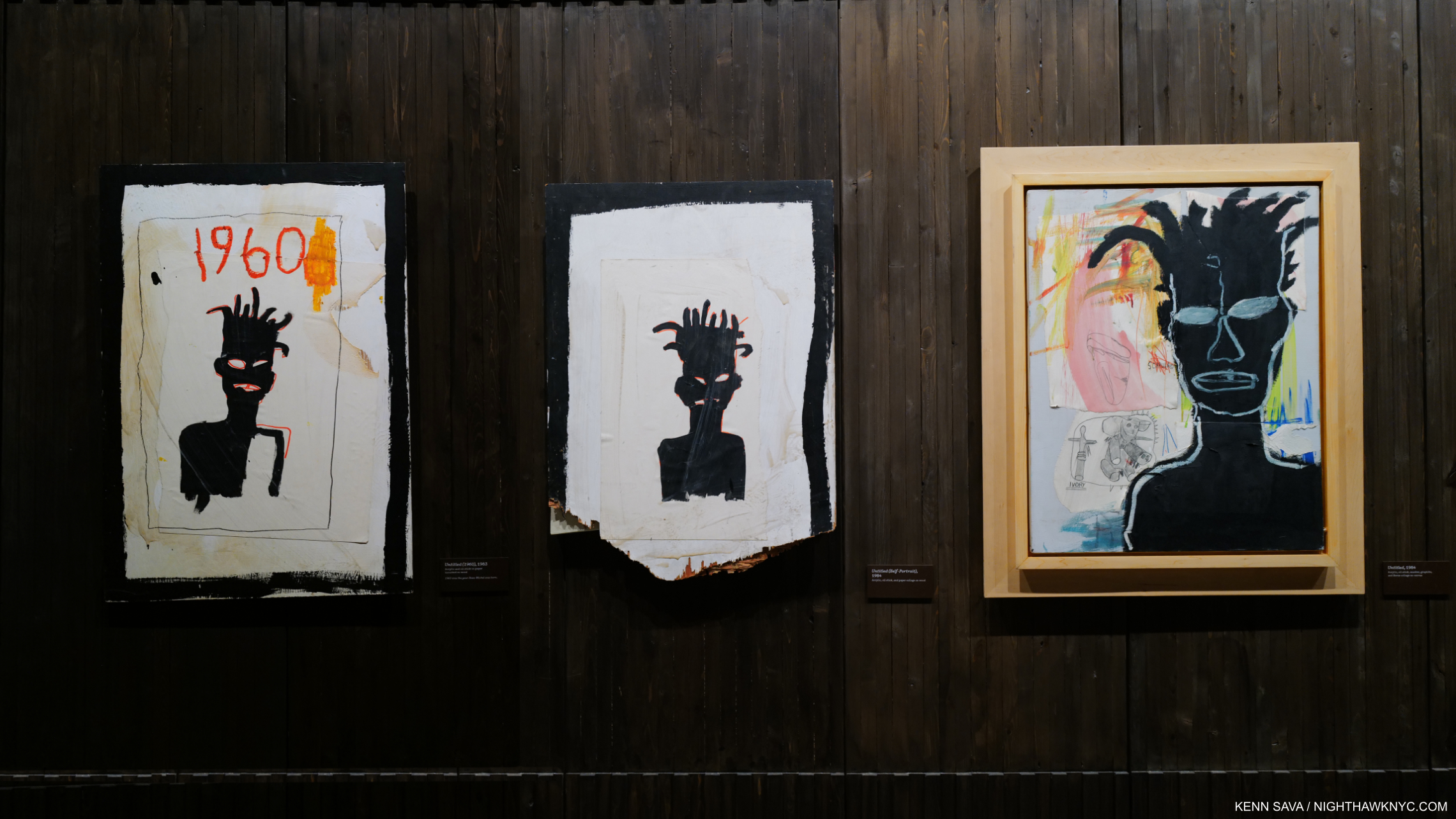
While only the piece in the center is titled as such, each of these appear to be a Self-Portrait. Are they finished? At J-MB:KP.
Jean-Michel might have been “old beyond his years,” but his early death robbed him of something else besides a complete career- the chance to edit his oeuvre. From the beginning of recorded Art history, Artists have destroyed work they deemed not up to their standards. Michelangelo is famously reported burning Drawings near the end of his life so that “nothing less than perfect would remain from his hand.” J-MB never had this chance. And it shows. For better, or worse, it seems the curators decided to show everything. As a result, there are some questionable pieces on view in Jean-Michel Basquiat: King Pleasure. They serve to lessen the impression of the rest. Had he lived to edit his output I seriously doubt it would be as uneven as we see in the show. Some (maybe more?) of these pieces were, possibly, not meant to be seen by anyone but the Artist. He never had the chance to decide that. More pieces included means a bigger show, and a big show could be marketed as a “blockbuster,” with the possibility of charging people to see it.
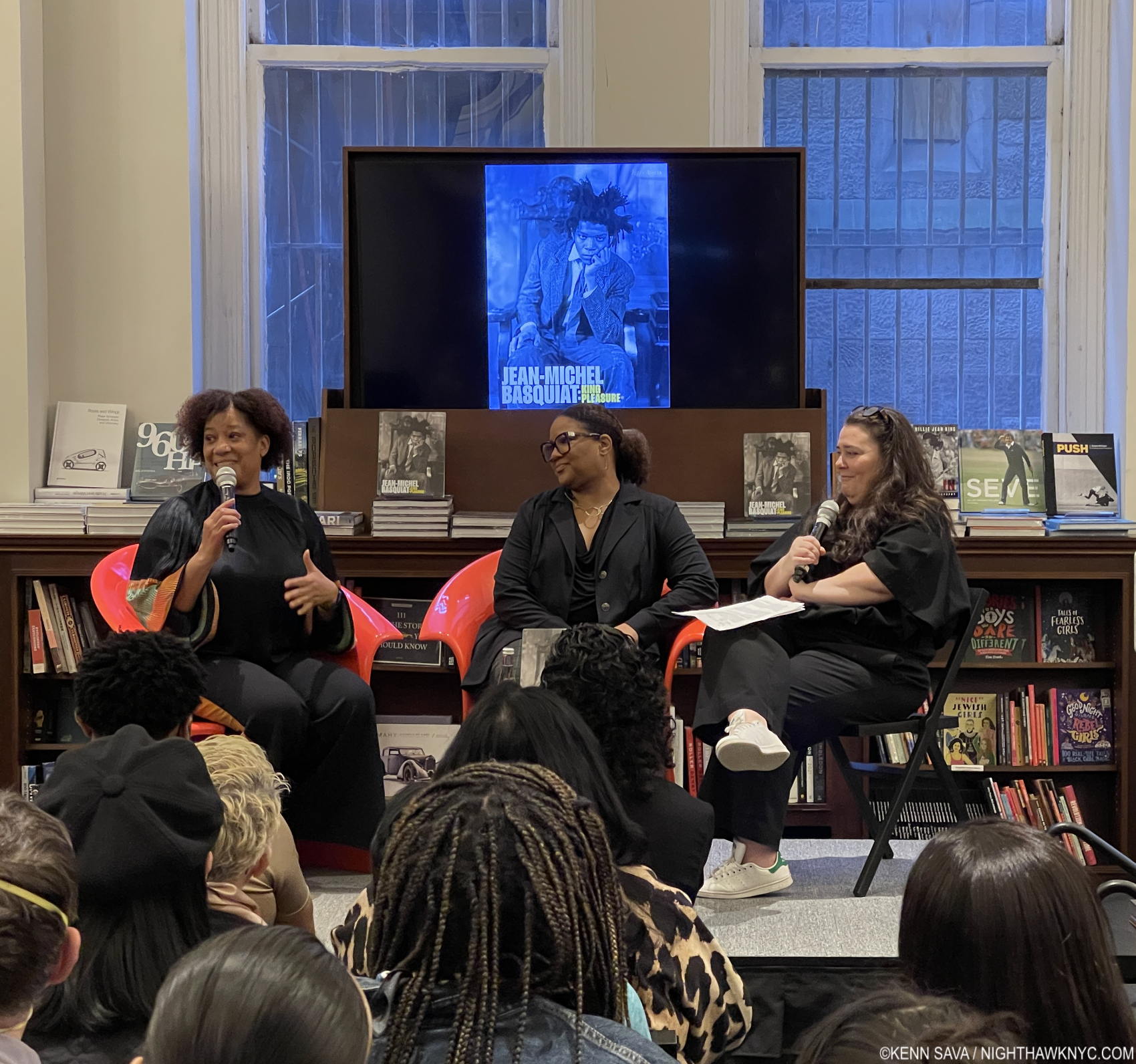
Jeanine Heveaux, left, and Lisane Basquiat, center, J-MB’s sisters, at the J-MB:KP book release in NYC on April 12th.
When I heard J-MB’s sisters speak at the J-MB:KP book release, one said that J-MB:KP was “a gift to his long-standing fans.” Hmmm….a gift that costs the recipient $45 to get? Yes, I paid to get in. (If you find this piece, or my previous Basquiat pieces worthwhile, donations will help me continue. Thank you.)
Further on the money tip, it simply must be said that things could not have gone better for the early Basquiat collectors from the day they bought his work until now. They’re living the dream that fuels many collectors of Contemporary Art today, a “dream” that was largely realized because the Artist died at only 27 years old- decades before his career should have run its course- a career that could very well be going on full-strength right now! Then, other stars aligned for them-
-J-MB did create a lot of Art, but only for about a decade.
-The museums passed, leaving virtually all of it to private collectors.
-Prices for his major pieces that have come to auction have set records unheard of for 99% of Artists in Art history!
-Meanwhile, the public took to Jean-Michel and his work the way they have to no other Contemporary Artist. Still!
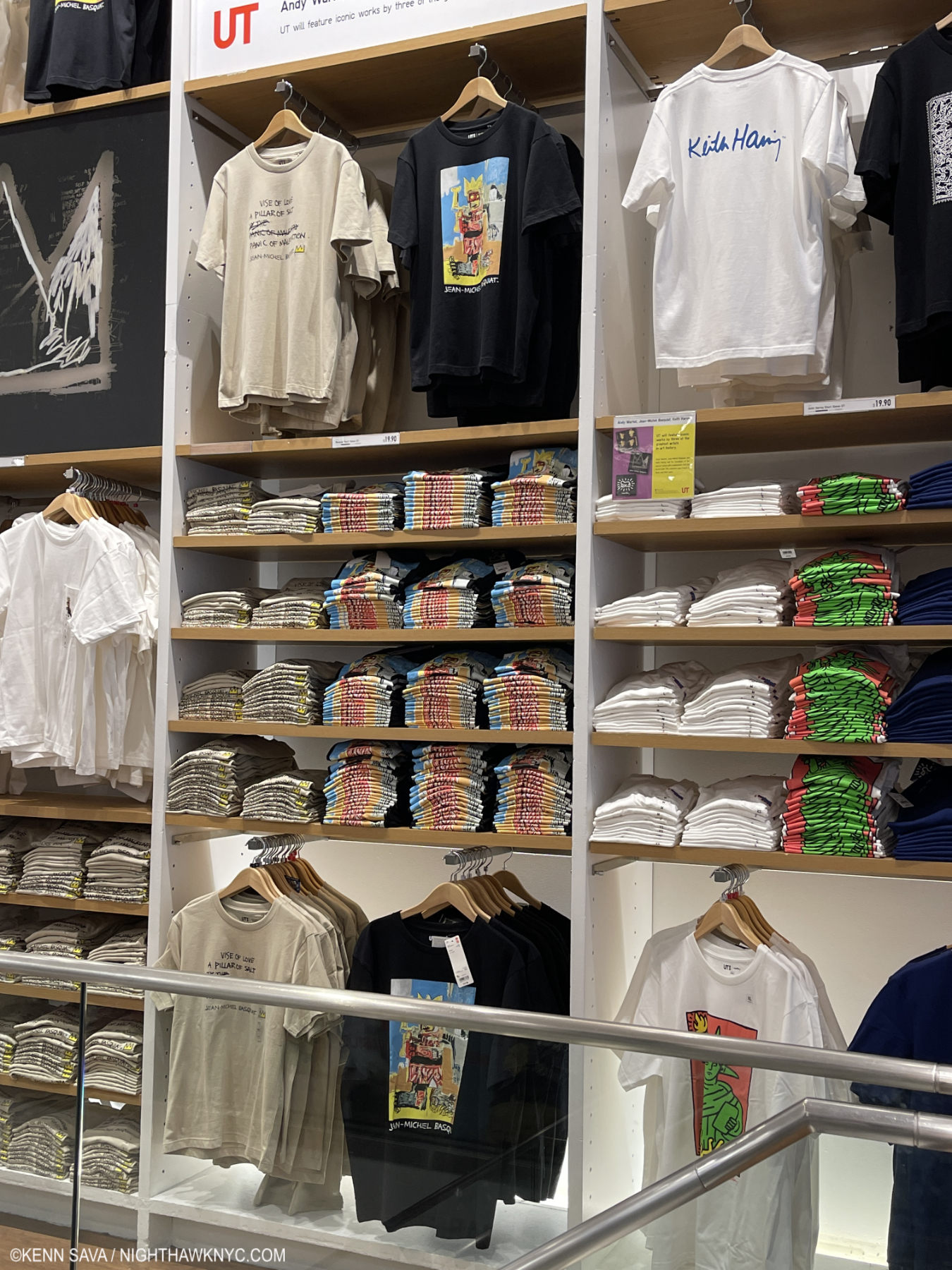
Shelves of J-MB T-shirts next to those of his friend, Keith Haring, another of the world’s most popular Artists, at Uniqlo, spring, 2022.
-In 2022, his Art is already on everything from candles to t-shirts to shopping bags to- you name it.
ALL of this is completely unprecedented in Western Art history! Keep that in mind, Art speculators!
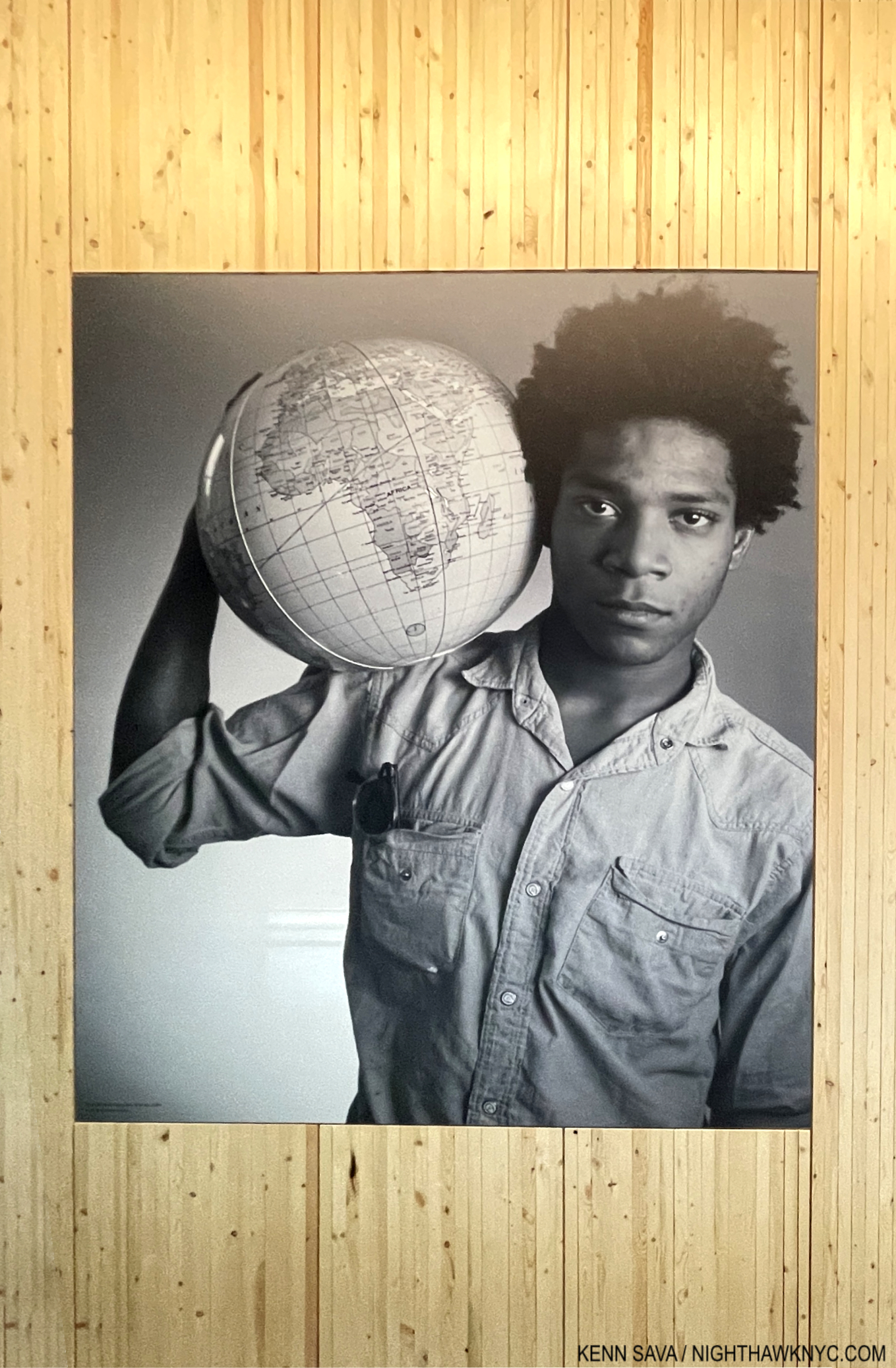
J-MB:KP entry foyer. The weight of the (Art) world on his shoulders? Or, is he thinking back to his trip to Africa in 1986? Hard to know, there was no date given for this Photo.
In 2019, I wrote a piece about the 4 Basquiat shows in NYC that year titled “Jean-Michel Basquiat, at 59,” and the title for my piece on Jean-Michel Basquiat: King Pleasure is titled “Jean-Michel Basquiat, at 62” since it, and this piece, are published on December 22, 2022, what would have been his 62nd birthday) to reinforce how young Jean-Michel would STILL be had he lived. So much has happened in the past 61 years that today Jean-Michel Basquiat already feels like a part of History. His influence is everywhere- world-wide. 42 years (since his debut in the Times Square Show, 1980, which also included Jane Dickson, subject of my last piece) is a long time for anyone to be this popular in this fickle, no-attention-span, age. How much longer will this continue? Most likely, someone else will come along and be “the most popular” of the near future. As we well know, levels of popularity are no indicator of quality.
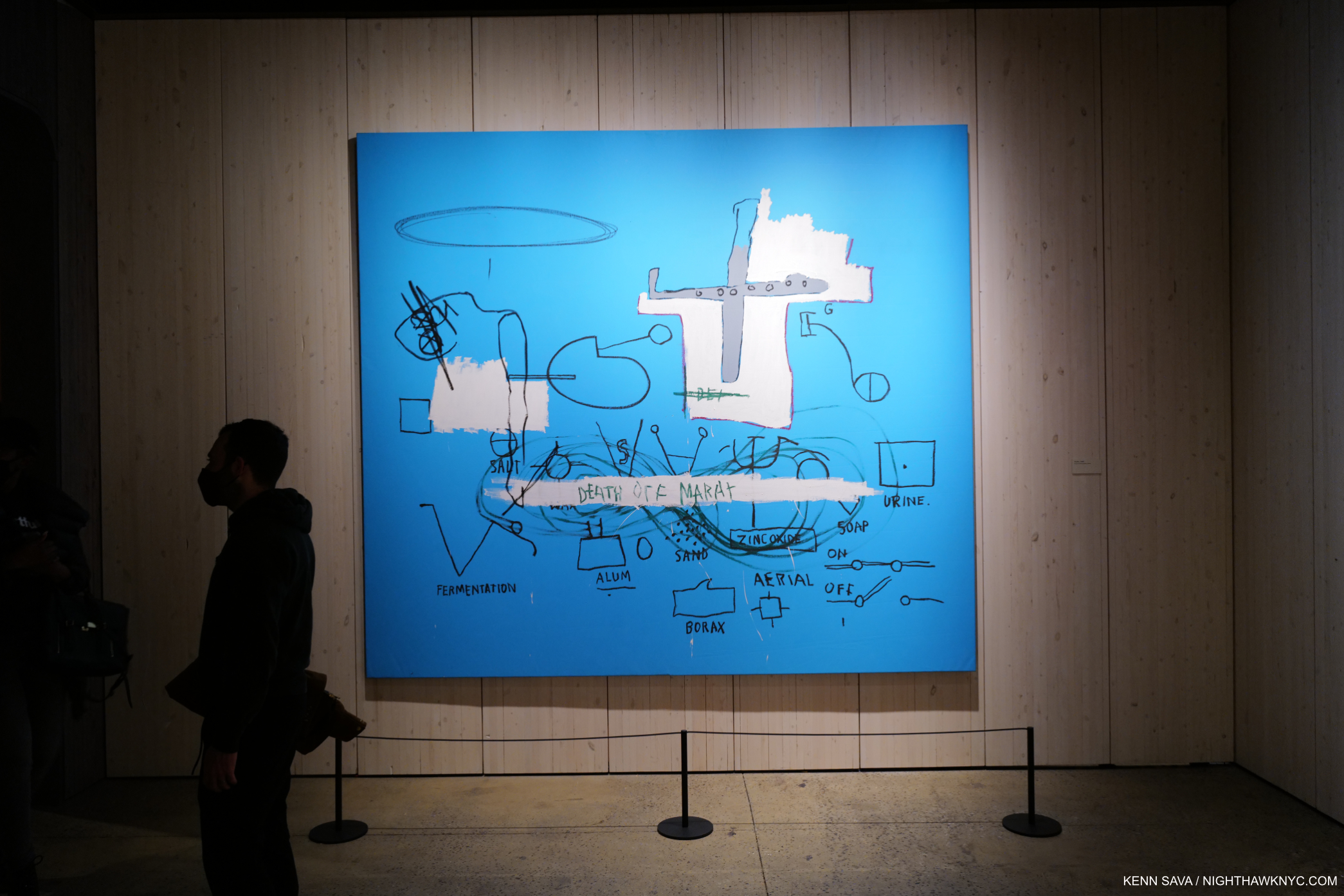
The remarkable Kalik, Painted in 1988, the year the Artist passed away, in J-MB:KP’s final room, titled THOSE WHO DRESS BETTER CAN RECEIVE CHRIST.
Beyond popularity is the impact and influence his Art has. A student of Art & Art history, Jean-Michel Basquiat rebelled against what Art and the Art world was right out of the box as the street Aritst SAMO©, which then exploded in his works on canvas, paper and objects, that flew in the face of everything that had been done to that point. Most importantly, it seems to me, he also put the fight against racism that had been going on in the Art of Charles White, Jacob Lawrence, Romare Bearden, Gordon Parks, and others, front and center in his Art. His influence in this regard is already incalculable and will endure.
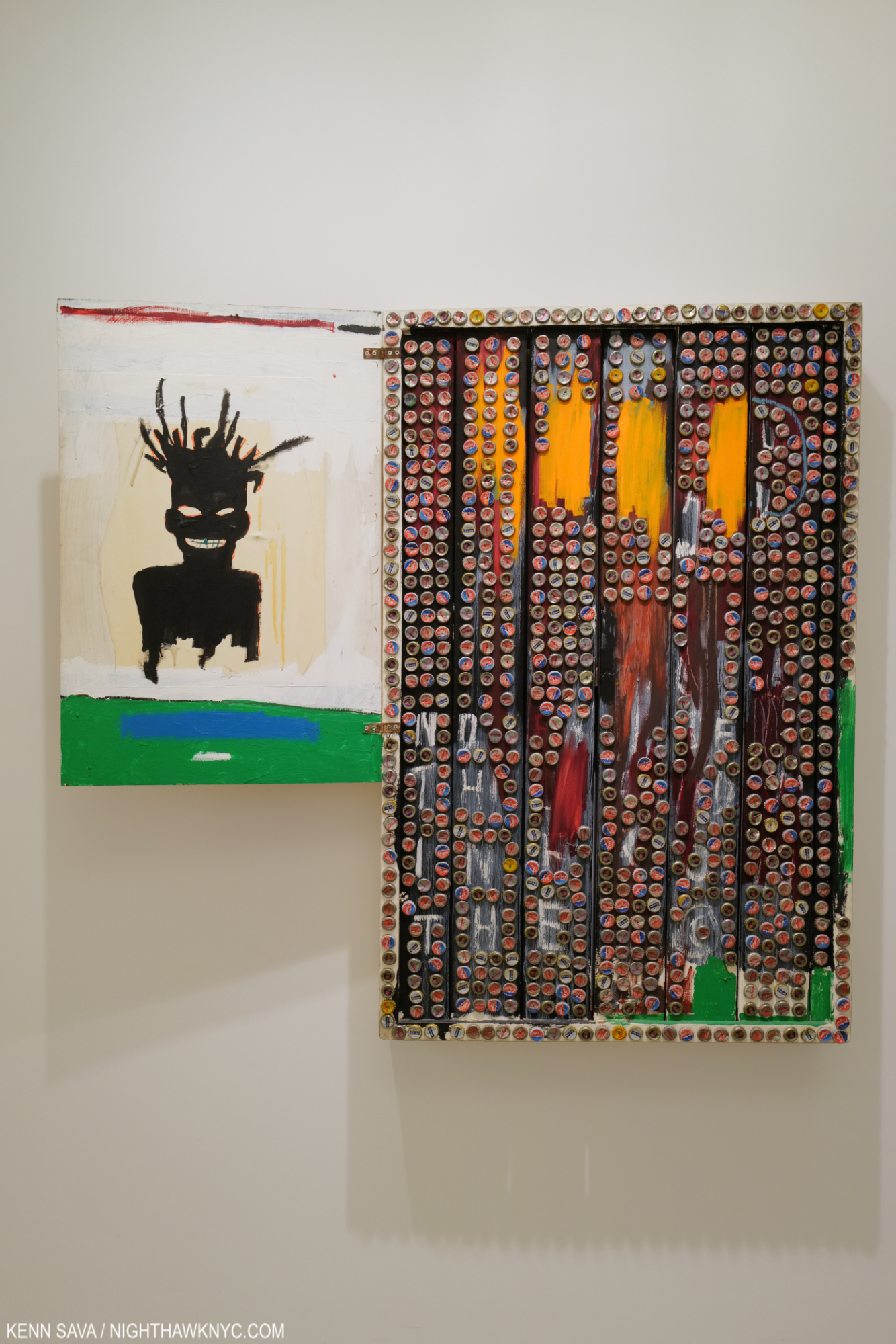
Self-Portrait, 1985, Acrylic, oilstick and bottle caps on wood. Seen at Jean-Michel Basquiat: Art & Objecthood at Nahmad Contemporary.
Jean-Michel Basquiat created some of the most powerful and unique Paintings of his time, like this one, and since Francis Bacon, Robert Rauschenberg, Jasper Johns, and James Rosenquist, post-Picasso. (Interestingly, all of them, except Picasso, were not only alive and working during J-MB’s career, each outlived him. Mr. Johns is still working.) Then, he died at an age when most Painters haven’t “reached maturity,” yet another great Musical or Artistic talent who died too young, leaving posterity forever tantalized by “what if?”
Still, even with the uneven, unedited, oeuvre he left us, 9 shows and 400 pieces in, it’s undeniable to me that he was an important Painter of the 20th century, with possibly, a uniquely singular gift for composition. And, he was an Artist who took the ever-building fight for civil rights to centerstage in his Art.
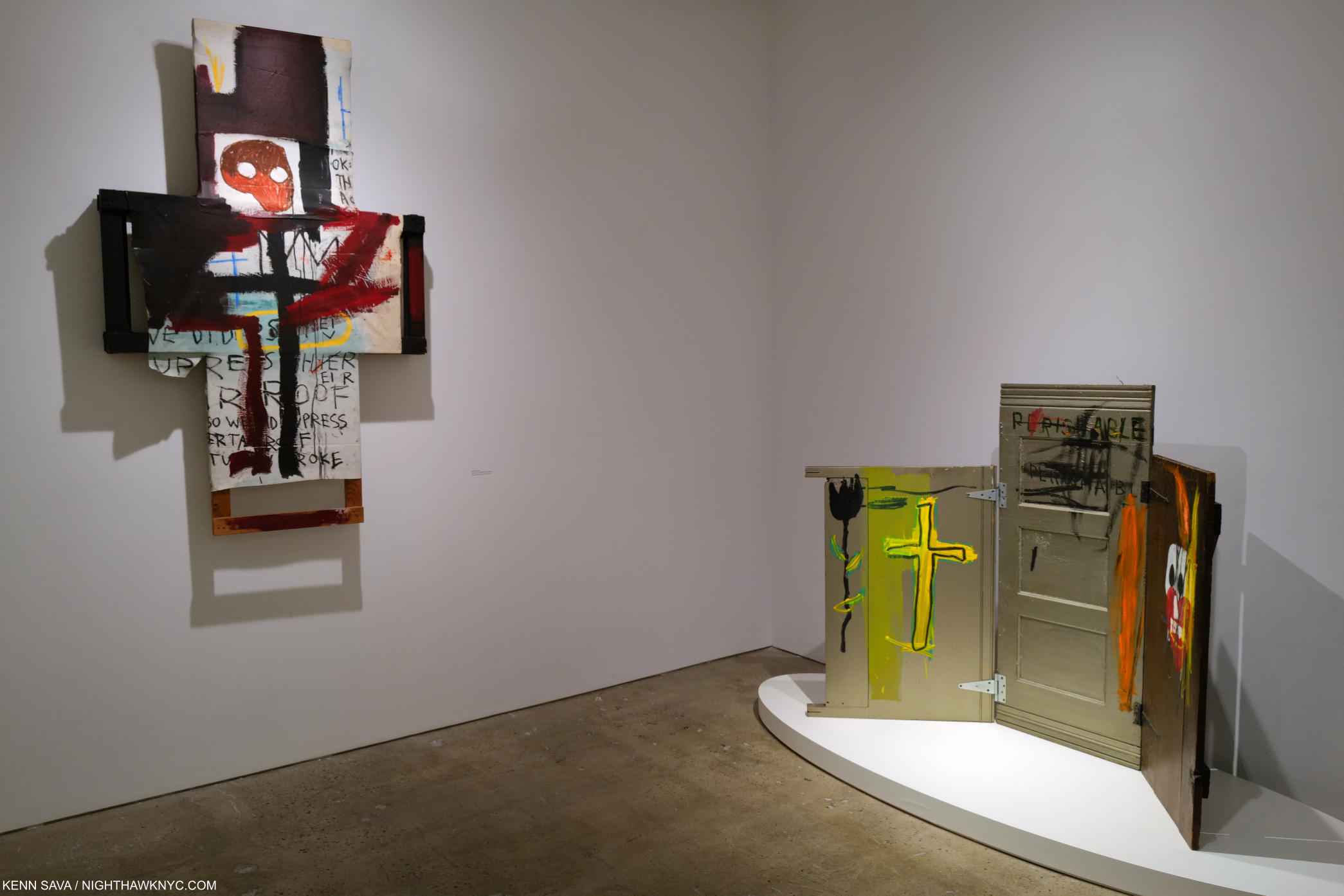
Crisis X, 1982, Acrylic, oil, oilstick on canvas mounted on tied wood support, left, with a cross shaped canvas, and Gravestone, 1987, Acrylic and oil on hinged wood panels, right. Gravestone is a work that memorializes Andy Warhol after his passing, per the show’s curator. Note the word “PERISHABLE,” and the doors, which may be symbolic of death as a passage. Seen in Jean-Michel Basquiat: Art & Objecthood’s final room.
It seems now, 62 years after he was born, that enough time has passed that it’s clear, that love it or hate it, the Art of Jean-Michel Basquiat is here to stay. While the Art world will have its say over the next few hundred years as to where he ranks among the Painters of the 20th century, meanwhile, how will the people be able to see it? On t-shirts? Only in books? When he started as SAMO©, his work was public, available to be seen by anyone who passed by the spot he made it. Now, it’s ironic that almost none of it is public (i.e. in public institutions). To this point, the public has depended on collectors and foundations showing the work in one-off shows. Is that how it’s going to be?
While the historians argue about his position in Art history, everyone else wonders- Where can I see it to decide for myself?
*- Soundtrack for this piece is “The Lamb Lies Down on Broadway,” the title track from the album of the same name by the Peter Gabriel-era Genesis released in 1974. Of it, Peter Gabriel, who conceived the story & wrote all the lyrics, said-
“It was intended to be an intense story of a young rebellious Puerto Rican in New York who would face challenges with family, authority, sex, love and self-sacrifice to learn a little more about himself. I wanted to mix his dreams with his reality, in a kind of urban rebel Pilgrim’s Progress.” Quote, and lyrics here. Original complete recording here.
It’s fascinating and amazing to consider that Peter Gabriel’s Rael, the hero of The Lamb, is a Puerto Rican graffiti artist who wanders the streets of Times Square & NYC, presaging Jean-Michel Basquiat, who was born to a Haitian father and a Puerto Rican mother, who’s career as the graffiti artist SAMO© began a scant 2 years later in 1976!
NighthawkNYC.com has been Free & Ad-Free for over 7 years, during which over 275 pieces have been published! If you’ve found it useful, I need your support to continue.
I’m pleased to announce you can now support it by buying Art, ArtBooks and PhotoBooks! I’ve curated a selection of 400 books & pieces of Art from my collection, offered through my partnership with eBay seller GallerieK. Featured items of particular interest to my readers may be seen here. The complete selection is here now!
Or, you can donate by PayPal to help keep NighthawkNYC.com online & ad-free below. Thank you!
Written & photographed by Kenn Sava for nighthawknyc.com unless otherwise credited.
Comments, thoughts, feedback or propositions? Click here
Click the white box on the upper right for the archives or to search them.
Subscribe to be notified of new Posts below. Your information will be used for no other purpose.

